Melhoramento
Publicações notáveis
Os OGMs podem causar alergias?
Nesta revisão, os autores detalham as várias etapas no desenvolvimento de um transgênico que levam em consideração o seu potencial alergênico. Além disso, realizam uma revisão sistemática dos trabalhos sobre o tema. Os dados mostram que as safras geneticamente modificadas (GM) não são mais alergênicas do que as não modificadas.
Além disso, não foram encontradas evidências de que indivíduos que não são alérgicos aos alimentos convencionais desenvolvam alergia ou tenham um aumento no risco em desenvolver alergia pelo consumo de culturas GM.

Como as novas variedades são criadas mantendo os alimentos seguros
O processo de seleção de plantas de alto rendimento para alimentos, ração e fibras data de mais de 10.000 anos e foi substancialmente refinado ao longo do século passado. Embora os riscos percebidos representados pelas culturas geneticamente modificadas (GM) tenham sido extensivamente abordados, os níveis existentes de toxinas vegetais que ocorrem naturalmente nas culturas alimentares têm recebido muito menos atenção. Esta revisão analisa como os melhoristas (breeders) usam práticas convencionais de melhoramento para desenvolver novas variedades de culturas alimentares seguras.

O longo processo por trás de um OGM
Neste artigo, os autores detalham o processo de obtenção de novas variedades de cultivos por meio de melhoramento convencional e técnicas de engenharia genética, também informando como o próprio programa de melhoramento elimina características indesejadas. São apresentados dados de programas de melhoramento de milho, tanto convencionais quanto por meio de engenharia genética.

Novas técnicas de criação, ao serviço de melhores cereais
Esta edição especial da Cereal Chemistry inclui uma série de artigos focados em tecnologias inovadoras de melhoramento de precisão (New Breeding Techniques) para cereais. Essas técnicas serão capazes de acelerar a obtenção de variedades mais produtivas, a rentabilidade para o setor de cereais e o desenvolvimento de novos produtos que trazem benefícios à saúde dos consumidores.
Todas as publicações
de Melhoramento
8147822
RCXGNFSQ
items
1
0
date
desc
12043
https://aclatam.cropscience.bayer.com/wp-content/plugins/zotpress/
%7B%22status%22%3A%22success%22%2C%22updateneeded%22%3Afalse%2C%22instance%22%3A%22zotpress-dd924d33fe0f4eb0ebee80d9922109c4%22%2C%22meta%22%3A%7B%22request_last%22%3A150%2C%22request_next%22%3A50%2C%22used_cache%22%3Atrue%7D%2C%22data%22%3A%5B%7B%22key%22%3A%226BQ7X5CC%22%2C%22library%22%3A%7B%22id%22%3A8147822%7D%2C%22meta%22%3A%7B%22creatorSummary%22%3A%22Rogers%20et%20al.%22%2C%22parsedDate%22%3A%222022-10-24%22%2C%22numChildren%22%3A0%7D%2C%22bib%22%3A%22%3Cdiv%20class%3D%5C%22csl-bib-body%5C%22%20style%3D%5C%22line-height%3A%202%3B%20padding-left%3A%201em%3B%20text-indent%3A-1em%3B%5C%22%3E%5Cn%20%20%3Cdiv%20class%3D%5C%22csl-entry%5C%22%3ERogers%2C%20A.%20R.%2C%20Bian%2C%20Y.%2C%20Krakowsky%2C%20M.%2C%20Peters%2C%20D.%2C%20Turnbull%2C%20C.%2C%20Nelson%2C%20P.%2C%20%26amp%3B%20Holland%2C%20J.%20B.%20%282022%29.%20Genomic%20prediction%20for%20the%20Germplasm%20Enhancement%20of%20Maize%20project.%20%3Ci%3EThe%20Plant%20Genome%3C%5C%2Fi%3E.%20%3Ca%20href%3D%27https%3A%5C%2F%5C%2Fdoi.org%5C%2F10.1002%5C%2Ftpg2.20267%27%3Ehttps%3A%5C%2F%5C%2Fdoi.org%5C%2F10.1002%5C%2Ftpg2.20267%3C%5C%2Fa%3E%3C%5C%2Fdiv%3E%5Cn%3C%5C%2Fdiv%3E%22%2C%22data%22%3A%7B%22itemType%22%3A%22journalArticle%22%2C%22title%22%3A%22Genomic%20prediction%20for%20the%20Germplasm%20Enhancement%20of%20Maize%20project%22%2C%22creators%22%3A%5B%7B%22creatorType%22%3A%22author%22%2C%22firstName%22%3A%22Anna%20R.%22%2C%22lastName%22%3A%22Rogers%22%7D%2C%7B%22creatorType%22%3A%22author%22%2C%22firstName%22%3A%22Yang%22%2C%22lastName%22%3A%22Bian%22%7D%2C%7B%22creatorType%22%3A%22author%22%2C%22firstName%22%3A%22Matthew%22%2C%22lastName%22%3A%22Krakowsky%22%7D%2C%7B%22creatorType%22%3A%22author%22%2C%22firstName%22%3A%22David%22%2C%22lastName%22%3A%22Peters%22%7D%2C%7B%22creatorType%22%3A%22author%22%2C%22firstName%22%3A%22Clint%22%2C%22lastName%22%3A%22Turnbull%22%7D%2C%7B%22creatorType%22%3A%22author%22%2C%22firstName%22%3A%22Paul%22%2C%22lastName%22%3A%22Nelson%22%7D%2C%7B%22creatorType%22%3A%22author%22%2C%22firstName%22%3A%22James%20B.%22%2C%22lastName%22%3A%22Holland%22%7D%5D%2C%22abstractNote%22%3A%22%22%2C%22date%22%3A%222022-10-24%22%2C%22language%22%3A%22en%22%2C%22DOI%22%3A%2210.1002%5C%2Ftpg2.20267%22%2C%22ISSN%22%3A%221940-3372%2C%201940-3372%22%2C%22url%22%3A%22https%3A%5C%2F%5C%2Fonlinelibrary.wiley.com%5C%2Fdoi%5C%2F10.1002%5C%2Ftpg2.20267%22%2C%22collections%22%3A%5B%22RCXGNFSQ%22%5D%2C%22dateModified%22%3A%222022-11-24T16%3A46%3A09Z%22%7D%7D%2C%7B%22key%22%3A%22HV9UCPB5%22%2C%22library%22%3A%7B%22id%22%3A8147822%7D%2C%22meta%22%3A%7B%22creatorSummary%22%3A%22Sie%20et%20al.%22%2C%22parsedDate%22%3A%222022-08-04%22%2C%22numChildren%22%3A0%7D%2C%22bib%22%3A%22%3Cdiv%20class%3D%5C%22csl-bib-body%5C%22%20style%3D%5C%22line-height%3A%202%3B%20padding-left%3A%201em%3B%20text-indent%3A-1em%3B%5C%22%3E%5Cn%20%20%3Cdiv%20class%3D%5C%22csl-entry%5C%22%3ESie%2C%20E.%20K.%2C%20Oteng-Frimpong%2C%20R.%2C%20Kassim%2C%20Y.%20B.%2C%20Puozaa%2C%20D.%20K.%2C%20Adjebeng-Danquah%2C%20J.%2C%20Masawudu%2C%20A.%20R.%2C%20Ofori%2C%20K.%2C%20Danquah%2C%20A.%2C%20Cazenave%2C%20A.%20B.%2C%20Hoisington%2C%20D.%2C%20Rhoads%2C%20J.%2C%20%26amp%3B%20Balota%2C%20M.%20%282022%29.%20RGB-image%20method%20enables%20indirect%20selection%20for%20leaf%20spot%20resistance%20and%20yield%20estimation%20in%20a%20groundnut%20breeding%20program%20in%20Western%20Africa.%20%3Ci%3EFrontiers%20in%20Plant%20Science%3C%5C%2Fi%3E%2C%20%3Ci%3E13%3C%5C%2Fi%3E%2C%20957061.%20%3Ca%20href%3D%27https%3A%5C%2F%5C%2Fdoi.org%5C%2F10.3389%5C%2Ffpls.2022.957061%27%3Ehttps%3A%5C%2F%5C%2Fdoi.org%5C%2F10.3389%5C%2Ffpls.2022.957061%3C%5C%2Fa%3E%3C%5C%2Fdiv%3E%5Cn%3C%5C%2Fdiv%3E%22%2C%22data%22%3A%7B%22itemType%22%3A%22journalArticle%22%2C%22title%22%3A%22RGB-image%20method%20enables%20indirect%20selection%20for%20leaf%20spot%20resistance%20and%20yield%20estimation%20in%20a%20groundnut%20breeding%20program%20in%20Western%20Africa%22%2C%22creators%22%3A%5B%7B%22creatorType%22%3A%22author%22%2C%22firstName%22%3A%22Emmanuel%20Kofi%22%2C%22lastName%22%3A%22Sie%22%7D%2C%7B%22creatorType%22%3A%22author%22%2C%22firstName%22%3A%22Richard%22%2C%22lastName%22%3A%22Oteng-Frimpong%22%7D%2C%7B%22creatorType%22%3A%22author%22%2C%22firstName%22%3A%22Yussif%20Baba%22%2C%22lastName%22%3A%22Kassim%22%7D%2C%7B%22creatorType%22%3A%22author%22%2C%22firstName%22%3A%22Doris%20Kanvenaa%22%2C%22lastName%22%3A%22Puozaa%22%7D%2C%7B%22creatorType%22%3A%22author%22%2C%22firstName%22%3A%22Joseph%22%2C%22lastName%22%3A%22Adjebeng-Danquah%22%7D%2C%7B%22creatorType%22%3A%22author%22%2C%22firstName%22%3A%22Abdul%20Rasheed%22%2C%22lastName%22%3A%22Masawudu%22%7D%2C%7B%22creatorType%22%3A%22author%22%2C%22firstName%22%3A%22Kwadwo%22%2C%22lastName%22%3A%22Ofori%22%7D%2C%7B%22creatorType%22%3A%22author%22%2C%22firstName%22%3A%22Agyemang%22%2C%22lastName%22%3A%22Danquah%22%7D%2C%7B%22creatorType%22%3A%22author%22%2C%22firstName%22%3A%22Alexandre%20Brice%22%2C%22lastName%22%3A%22Cazenave%22%7D%2C%7B%22creatorType%22%3A%22author%22%2C%22firstName%22%3A%22David%22%2C%22lastName%22%3A%22Hoisington%22%7D%2C%7B%22creatorType%22%3A%22author%22%2C%22firstName%22%3A%22James%22%2C%22lastName%22%3A%22Rhoads%22%7D%2C%7B%22creatorType%22%3A%22author%22%2C%22firstName%22%3A%22Maria%22%2C%22lastName%22%3A%22Balota%22%7D%5D%2C%22abstractNote%22%3A%22Early%20Leaf%20Spot%20%28ELS%29%20caused%20by%20the%20fungus%20Passalora%20arachidicola%20and%20Late%20Leaf%20Spot%20%28LLS%29%20also%20caused%20by%20the%20fungus%20Nothopassalora%20personata%2C%20are%20the%20two%20major%20groundnut%20%28%5Cn%20%20%20%20%20%20%20%20%20%20%20%20%20%20Arachis%20hypogaea%5Cn%20%20%20%20%20%20%20%20%20%20%20%20%20%20L.%29%20destructive%20diseases%20in%20Ghana.%20Accurate%20phenotyping%20and%20genotyping%20to%20develop%20groundnut%20genotypes%20resistant%20to%20Leaf%20Spot%20Diseases%20%28LSD%29%20and%20to%20increase%20groundnut%20production%20is%20critically%20important%20in%20Western%20Africa.%20Two%20experiments%20were%20conducted%20at%20the%20Council%20for%20Scientific%20and%20Industrial%20Research-Savanna%20Agricultural%20Research%20Institute%20located%20in%20Nyankpala%2C%20Ghana%20to%20explore%20the%20effectiveness%20of%20using%20RGB-image%20method%20as%20a%20high-throughput%20phenotyping%20tool%20to%20assess%20groundnut%20LSD%20and%20to%20estimate%20yield%20components.%20Replicated%20plots%20arranged%20in%20a%20rectangular%20alpha%20lattice%20design%20were%20conducted%20during%20the%202020%20growing%20season%20using%20a%20set%20of%2060%20genotypes%20as%20the%20training%20population%20and%20192%20genotypes%20for%20validation.%20Indirect%20selection%20models%20were%20developed%20using%20Red-Green-Blue%20%28RGB%29%20color%20space%20indices.%20Data%20was%20collected%20on%20conventional%20LSD%20ratings%2C%20RGB%20imaging%2C%20pod%20weight%20per%20plant%20and%20number%20of%20pods%20per%20plant.%20Data%20was%20analyzed%20using%20a%20mixed%20linear%20model%20with%20R%20statistical%20software%20version%204.0.2.%20The%20results%20showed%20differences%20among%20the%20genotypes%20for%20the%20traits%20evaluated.%20The%20RGB-image%20method%20traits%20exhibited%20comparable%20or%20better%20broad%20sense%20heritability%20to%20the%20conventionally%20measured%20traits.%20Significant%20correlation%20existed%20between%20the%20RGB-image%20method%20traits%20and%20the%20conventionally%20measured%20traits.%20Genotypes%2073%5Cu201333%2C%20Gha-GAF%201723%2C%20Zam-ICGV-SM%2007599%2C%20and%20Oug-ICGV%2090099%20were%20among%20the%20most%20resistant%20genotypes%20to%20ELS%20and%20LLS%2C%20and%20they%20represent%20suitable%20sources%20of%20resistance%20to%20LSD%20for%20the%20groundnut%20breeding%20programs%20in%20Western%20Africa.%22%2C%22date%22%3A%222022-8-4%22%2C%22language%22%3A%22%22%2C%22DOI%22%3A%2210.3389%5C%2Ffpls.2022.957061%22%2C%22ISSN%22%3A%221664-462X%22%2C%22url%22%3A%22https%3A%5C%2F%5C%2Fwww.frontiersin.org%5C%2Farticles%5C%2F10.3389%5C%2Ffpls.2022.957061%5C%2Ffull%22%2C%22collections%22%3A%5B%22RCXGNFSQ%22%5D%2C%22dateModified%22%3A%222022-11-24T16%3A46%3A24Z%22%7D%7D%2C%7B%22key%22%3A%225A758BIH%22%2C%22library%22%3A%7B%22id%22%3A8147822%7D%2C%22meta%22%3A%7B%22creatorSummary%22%3A%22Labroo%20et%20al.%22%2C%22parsedDate%22%3A%222022-07-03%22%2C%22numChildren%22%3A0%7D%2C%22bib%22%3A%22%3Cdiv%20class%3D%5C%22csl-bib-body%5C%22%20style%3D%5C%22line-height%3A%202%3B%20padding-left%3A%201em%3B%20text-indent%3A-1em%3B%5C%22%3E%5Cn%20%20%3Cdiv%20class%3D%5C%22csl-entry%5C%22%3ELabroo%2C%20M.%20R.%2C%20Endelman%2C%20J.%20B.%2C%20Gemenet%2C%20D.%20C.%2C%20Werner%2C%20C.%20R.%2C%20Gaynor%2C%20R.%20C.%2C%20%26amp%3B%20Covarrubias-Pazaran%2C%20G.%20E.%20%282022%29.%20%3Ci%3EClonal%20breeding%20strategies%20to%20harness%20heterosis%3A%20insights%20from%20stochastic%20simulation%3C%5C%2Fi%3E%20%5BPreprint%5D.%20Genetics.%20https%3A%5C%2F%5C%2Fdoi.org%5C%2F10.1101%5C%2F2022.07.01.497810%3C%5C%2Fdiv%3E%5Cn%3C%5C%2Fdiv%3E%22%2C%22data%22%3A%7B%22itemType%22%3A%22report%22%2C%22title%22%3A%22Clonal%20breeding%20strategies%20to%20harness%20heterosis%3A%20insights%20from%20stochastic%20simulation%22%2C%22creators%22%3A%5B%7B%22creatorType%22%3A%22author%22%2C%22firstName%22%3A%22Marlee%20R.%22%2C%22lastName%22%3A%22Labroo%22%7D%2C%7B%22creatorType%22%3A%22author%22%2C%22firstName%22%3A%22Jeffrey%20B.%22%2C%22lastName%22%3A%22Endelman%22%7D%2C%7B%22creatorType%22%3A%22author%22%2C%22firstName%22%3A%22Dorcus%20C.%22%2C%22lastName%22%3A%22Gemenet%22%7D%2C%7B%22creatorType%22%3A%22author%22%2C%22firstName%22%3A%22Christian%20R.%22%2C%22lastName%22%3A%22Werner%22%7D%2C%7B%22creatorType%22%3A%22author%22%2C%22firstName%22%3A%22R.%20Chris%22%2C%22lastName%22%3A%22Gaynor%22%7D%2C%7B%22creatorType%22%3A%22author%22%2C%22firstName%22%3A%22Giovanny%20E.%22%2C%22lastName%22%3A%22Covarrubias-Pazaran%22%7D%5D%2C%22abstractNote%22%3A%22Abstract%5Cn%20%20%20%20%20%20%20%20%20%20To%20produce%20genetic%20gain%2C%20hybrid%20crop%20breeding%20can%20change%20the%20additive%20as%20well%20as%20dominance%20genetic%20value%20of%20populations%2C%20which%20can%20lead%20to%20utilization%20of%20heterosis.%20A%20common%20hybrid%20breeding%20strategy%20is%20reciprocal%20recurrent%20selection%20%28RRS%29%2C%20in%20which%20parents%20of%20hybrids%20are%20typically%20recycled%20within%20pools%20based%20on%20general%20combining%20ability%20%28GCA%29.%20However%2C%20the%20relative%20performance%20of%20RRS%20and%20other%20possible%20breeding%20strategies%20have%20not%20been%20thoroughly%20compared.%20RRS%20can%20have%20relatively%20increased%20costs%20and%20longer%20cycle%20lengths%20which%20reduce%20genetic%20gain%2C%20but%20these%20are%20sometimes%20outweighed%20by%20its%20ability%20to%20harness%20heterosis%20due%20to%20dominance%20and%20increase%20genetic%20gain.%20Here%2C%20we%20used%20stochastic%20simulation%20to%20compare%20gain%20per%20unit%20cost%20of%20various%20clonal%20breeding%20strategies%20with%20different%20amounts%20of%20population%20inbreeding%20depression%20and%20heterosis%20due%20to%20dominance%2C%20relative%20cycle%20lengths%2C%20time%20horizons%2C%20estimation%20methods%2C%20selection%20intensities%2C%20and%20ploidy%20levels.%20In%20diploids%20with%20phenotypic%20selection%20at%20high%20intensity%2C%20whether%20RRS%20was%20the%20optimal%20breeding%20strategy%20depended%20on%20the%20initial%20population%20heterosis.%20However%2C%20in%20diploids%20with%20rapid%20cycling%20genomic%20selection%20at%20high%20intensity%2C%20RRS%20was%20the%20optimal%20breeding%20strategy%20after%2050%20years%20over%20almost%20all%20amounts%20of%20initial%20population%20heterosis%20under%20the%20study%20assumptions.%20RRS%20required%20more%20population%20heterosis%20to%20outperform%20other%20strategies%20as%20its%20relative%20cycle%20length%20increased%20and%20as%20selection%20intensity%20decreased.%20Use%20of%20diploid%20fully%20inbred%20parents%20vs.%20outbred%20parents%20with%20RRS%20typically%20did%20not%20affect%20genetic%20gain.%20In%20autopolyploids%2C%20RRS%20typically%20was%20not%20beneficial%20regardless%20of%20the%20amount%20of%20population%20inbreeding%20depression.%5Cn%20%20%20%20%20%20%20%20%20%20%5Cn%20%20%20%20%20%20%20%20%20%20%20%20Key%20Message%5Cn%20%20%20%20%20%20%20%20%20%20%20%20Reciprocal%20recurrent%20selection%20sometimes%20increases%20genetic%20gain%20per%20unit%20cost%20in%20clonal%20diploids%20with%20heterosis%20due%20to%20dominance%2C%20but%20it%20typically%20does%20not%20benefit%20autopolyploids.%22%2C%22reportNumber%22%3A%22%22%2C%22reportType%22%3A%22preprint%22%2C%22institution%22%3A%22Genetics%22%2C%22date%22%3A%222022-07-03%22%2C%22language%22%3A%22en%22%2C%22url%22%3A%22http%3A%5C%2F%5C%2Fbiorxiv.org%5C%2Flookup%5C%2Fdoi%5C%2F10.1101%5C%2F2022.07.01.497810%22%2C%22collections%22%3A%5B%22RCXGNFSQ%22%5D%2C%22dateModified%22%3A%222022-11-24T16%3A46%3A19Z%22%7D%7D%2C%7B%22key%22%3A%22WNHSQBG6%22%2C%22library%22%3A%7B%22id%22%3A8147822%7D%2C%22meta%22%3A%7B%22creatorSummary%22%3A%22Wang%20et%20al.%22%2C%22parsedDate%22%3A%222022-05-04%22%2C%22numChildren%22%3A0%7D%2C%22bib%22%3A%22%3Cdiv%20class%3D%5C%22csl-bib-body%5C%22%20style%3D%5C%22line-height%3A%202%3B%20padding-left%3A%201em%3B%20text-indent%3A-1em%3B%5C%22%3E%5Cn%20%20%3Cdiv%20class%3D%5C%22csl-entry%5C%22%3EWang%2C%20H.%2C%20Campbell%2C%20B.%2C%20Happ%2C%20M.%2C%20McConaughy%2C%20S.%2C%20Lorenz%2C%20A.%2C%20Amundsen%2C%20K.%2C%20Song%2C%20Q.%2C%20Pantalone%2C%20V.%2C%20%26amp%3B%20Hyten%2C%20D.%20%282022%29.%20%3Ci%3EDevelopment%20of%20Molecular%20Inversion%20Probes%20for%20Soybean%20Progeny%20Genomic%20Selection%20Genotyping%3C%5C%2Fi%3E%20%5BPreprint%5D.%20Genomics.%20https%3A%5C%2F%5C%2Fdoi.org%5C%2F10.1101%5C%2F2022.05.03.490091%3C%5C%2Fdiv%3E%5Cn%3C%5C%2Fdiv%3E%22%2C%22data%22%3A%7B%22itemType%22%3A%22report%22%2C%22title%22%3A%22Development%20of%20Molecular%20Inversion%20Probes%20for%20Soybean%20Progeny%20Genomic%20Selection%20Genotyping%22%2C%22creators%22%3A%5B%7B%22creatorType%22%3A%22author%22%2C%22firstName%22%3A%22Haichuan%22%2C%22lastName%22%3A%22Wang%22%7D%2C%7B%22creatorType%22%3A%22author%22%2C%22firstName%22%3A%22Benjamin%22%2C%22lastName%22%3A%22Campbell%22%7D%2C%7B%22creatorType%22%3A%22author%22%2C%22firstName%22%3A%22Mary%22%2C%22lastName%22%3A%22Happ%22%7D%2C%7B%22creatorType%22%3A%22author%22%2C%22firstName%22%3A%22Samantha%22%2C%22lastName%22%3A%22McConaughy%22%7D%2C%7B%22creatorType%22%3A%22author%22%2C%22firstName%22%3A%22Aaron%22%2C%22lastName%22%3A%22Lorenz%22%7D%2C%7B%22creatorType%22%3A%22author%22%2C%22firstName%22%3A%22Keenan%22%2C%22lastName%22%3A%22Amundsen%22%7D%2C%7B%22creatorType%22%3A%22author%22%2C%22firstName%22%3A%22Qijian%22%2C%22lastName%22%3A%22Song%22%7D%2C%7B%22creatorType%22%3A%22author%22%2C%22firstName%22%3A%22Vincent%22%2C%22lastName%22%3A%22Pantalone%22%7D%2C%7B%22creatorType%22%3A%22author%22%2C%22firstName%22%3A%22David%22%2C%22lastName%22%3A%22Hyten%22%7D%5D%2C%22abstractNote%22%3A%22Abstract%5Cn%20%20%20%20%20%20%20%20%20%20Increasing%20rate%20of%20genetic%20gain%20for%20key%20agronomic%20traits%20through%20genomic%20selection%20requires%20the%20development%20of%20new%20molecular%20methods%20to%20run%20genome-wide%20single%20nucleotide%20polymorphisms%20%28SNPs%29.%20The%20main%20limitation%20of%20current%20methods%20is%20the%20cost%20is%20too%20high%20to%20screen%20breeding%20populations.%20Molecular%20inversion%20probes%20%28MIPs%29%20is%20a%20targeted%20genotyping-by-sequencing%20method%20that%20could%20be%20used%20for%20soybeans%20that%20is%20both%20cost%20effective%2C%20high-throughput%2C%20and%20provides%20high%20data%20quality%20to%20screen%20breeder%5Cu2019s%20germplasm%20for%20genomic%20selection.%20A%201K%20MIP%20SNP%20set%20was%20developed%20for%20soybean%20with%20uniformly%20distributed%20markers%20across%20the%20genome.%20The%20SNPs%20were%20selected%20to%20maximize%20the%20number%20of%20informative%20markers%20in%20germplasm%20being%20tested%20in%20soybean%20breeding%20programs%20located%20in%20the%20North%20Central%20and%20Mid-South%20regions%20of%20the%20United%20States.%20The%201K%20SNP%20MIP%20set%20was%20tested%20on%20diverse%20germplasm%20and%20a%20recombinant%20inbred%20line%20population.%20Targeted%20sequencing%20with%20MIPs%20obtained%20an%2085%25%20enrichment%20for%20the%20targeted%20SNPs.%20MIP%5Cu2019s%20genotyping%20accuracy%20was%2093%25%20overall%20while%20homozoygous%20call%20accuracy%20was%2098%25%20with%20less%20than%2010%25%20missing%20data.%20The%20accuracy%20of%20MIPs%20combined%20with%20its%20low%20per%20sample%20cost%20makes%20it%20a%20powerful%20tool%20to%20enable%20genomic%20selection%20within%20soybean%20breeding%20programs.%22%2C%22reportNumber%22%3A%22%22%2C%22reportType%22%3A%22preprint%22%2C%22institution%22%3A%22Genomics%22%2C%22date%22%3A%222022-05-04%22%2C%22language%22%3A%22en%22%2C%22url%22%3A%22http%3A%5C%2F%5C%2Fbiorxiv.org%5C%2Flookup%5C%2Fdoi%5C%2F10.1101%5C%2F2022.05.03.490091%22%2C%22collections%22%3A%5B%22RCXGNFSQ%22%5D%2C%22dateModified%22%3A%222022-11-24T16%3A46%3A20Z%22%7D%7D%2C%7B%22key%22%3A%22KA4R8XGL%22%2C%22library%22%3A%7B%22id%22%3A8147822%7D%2C%22meta%22%3A%7B%22creatorSummary%22%3A%22Alpuerto%20et%20al.%22%2C%22parsedDate%22%3A%222022-03-31%22%2C%22numChildren%22%3A0%7D%2C%22bib%22%3A%22%3Cdiv%20class%3D%5C%22csl-bib-body%5C%22%20style%3D%5C%22line-height%3A%202%3B%20padding-left%3A%201em%3B%20text-indent%3A-1em%3B%5C%22%3E%5Cn%20%20%3Cdiv%20class%3D%5C%22csl-entry%5C%22%3EAlpuerto%2C%20J.%20B.%20B.%2C%20Samonte%2C%20S.%20O.%20P.%20B.%2C%20Sanchez%2C%20D.%20L.%2C%20Croaker%2C%20P.%20A.%2C%20Wang%2C%20Y.-J.%2C%20Wilson%2C%20L.%20T.%2C%20Christensen%2C%20E.%20F.%2C%20Tabien%2C%20R.%20E.%2C%20Yan%2C%20Z.%2C%20%26amp%3B%20Thomson%2C%20M.%20J.%20%282022%29.%20Genomic%20Association%20Mapping%20of%20Apparent%20Amylose%20and%20Protein%20Concentration%20in%20Milled%20Rice.%20%3Ci%3EAgronomy%3C%5C%2Fi%3E%2C%20%3Ci%3E12%3C%5C%2Fi%3E%284%29%2C%20857.%20%3Ca%20href%3D%27https%3A%5C%2F%5C%2Fdoi.org%5C%2F10.3390%5C%2Fagronomy12040857%27%3Ehttps%3A%5C%2F%5C%2Fdoi.org%5C%2F10.3390%5C%2Fagronomy12040857%3C%5C%2Fa%3E%3C%5C%2Fdiv%3E%5Cn%3C%5C%2Fdiv%3E%22%2C%22data%22%3A%7B%22itemType%22%3A%22journalArticle%22%2C%22title%22%3A%22Genomic%20Association%20Mapping%20of%20Apparent%20Amylose%20and%20Protein%20Concentration%20in%20Milled%20Rice%22%2C%22creators%22%3A%5B%7B%22creatorType%22%3A%22author%22%2C%22firstName%22%3A%22Jasper%20Benedict%20B.%22%2C%22lastName%22%3A%22Alpuerto%22%7D%2C%7B%22creatorType%22%3A%22author%22%2C%22firstName%22%3A%22Stanley%20Omar%20P.%20B.%22%2C%22lastName%22%3A%22Samonte%22%7D%2C%7B%22creatorType%22%3A%22author%22%2C%22firstName%22%3A%22Darlene%20L.%22%2C%22lastName%22%3A%22Sanchez%22%7D%2C%7B%22creatorType%22%3A%22author%22%2C%22firstName%22%3A%22Peyton%20A.%22%2C%22lastName%22%3A%22Croaker%22%7D%2C%7B%22creatorType%22%3A%22author%22%2C%22firstName%22%3A%22Ya-Jane%22%2C%22lastName%22%3A%22Wang%22%7D%2C%7B%22creatorType%22%3A%22author%22%2C%22firstName%22%3A%22Lloyd%20T.%22%2C%22lastName%22%3A%22Wilson%22%7D%2C%7B%22creatorType%22%3A%22author%22%2C%22firstName%22%3A%22Eric%20F.%22%2C%22lastName%22%3A%22Christensen%22%7D%2C%7B%22creatorType%22%3A%22author%22%2C%22firstName%22%3A%22Rodante%20E.%22%2C%22lastName%22%3A%22Tabien%22%7D%2C%7B%22creatorType%22%3A%22author%22%2C%22firstName%22%3A%22Zongbu%22%2C%22lastName%22%3A%22Yan%22%7D%2C%7B%22creatorType%22%3A%22author%22%2C%22firstName%22%3A%22Michael%20J.%22%2C%22lastName%22%3A%22Thomson%22%7D%5D%2C%22abstractNote%22%3A%22Apparent%20amylose%20and%20protein%20concentrations%20%28AAC%20and%20PC%29%20affect%20the%20milling%2C%20cooking%2C%20and%20eating%20quality%20of%20rice.%20This%20study%20was%20conducted%20to%20assess%20the%20phenotypic%20and%20genotypic%20variation%20and%20to%20identify%20genomic%20regions%20and%20putative%20candidate%20genes%20associated%20with%20AAC%20and%20PC%20in%20milled%20rice%20grain.%20Two%20hundred%20and%20seventeen%20and%20207%20diverse%20rice%20accessions%20were%20grown%20at%20the%20Texas%20A%26M%20AgriLife%20Research%20Center%20in%202018%20and%202019%2C%20respectively.%20Milled%20rice%20samples%20were%20analyzed%20for%20AAC%20and%20PC%20using%20the%20iodine%20colorimetry%20and%20Dumas%20method%2C%20respectively.%20Genome-wide%20association%20studies%20%28GWAS%29%20for%20AAC%20and%20PC%20were%20conducted%20using%20872%2C556%20single%20nucleotide%20polymorphism%20%28SNP%29%20markers%20following%20the%20mixed%20linear%20model.%20Significant%20variation%20among%20the%20accessions%20was%20found%20for%20both%20variables%20each%20year.%20Associations%20between%2032%20SNPs%20with%20PC%20and%20seven%20SNPs%20with%20AAC%20were%20detected.%20Gene%20models%20linked%20to%20these%20SNPs%20have%20a%20wide%20range%20of%20biological%20functions%2C%20including%20protein%20and%20carbohydrate%20metabolism%2C%20DNA%20methylation%2C%20and%20response%20to%20abiotic%20and%20biotic%20stresses.%20Seven%20of%20the%20identified%20SNPs%20colocalized%20with%20previously%20reported%20quantitative%20trait%20loci%20%28QTL%29%20for%20protein%20concentration.%20Fine-mapping%20of%20significant%20genomic%20regions%20and%20gene%20validation%20are%20necessary%20for%20this%20information%20to%20aid%20in%20marker-assisted%20breeding%20for%20improved%20grain%20quality.%22%2C%22date%22%3A%222022-03-31%22%2C%22language%22%3A%22en%22%2C%22DOI%22%3A%2210.3390%5C%2Fagronomy12040857%22%2C%22ISSN%22%3A%222073-4395%22%2C%22url%22%3A%22https%3A%5C%2F%5C%2Fwww.mdpi.com%5C%2F2073-4395%5C%2F12%5C%2F4%5C%2F857%22%2C%22collections%22%3A%5B%22RCXGNFSQ%22%5D%2C%22dateModified%22%3A%222022-11-24T16%3A46%3A23Z%22%7D%7D%2C%7B%22key%22%3A%226CR6KD6M%22%2C%22library%22%3A%7B%22id%22%3A8147822%7D%2C%22meta%22%3A%7B%22creatorSummary%22%3A%22Natukunda%20et%20al.%22%2C%22parsedDate%22%3A%222022-02-03%22%2C%22numChildren%22%3A0%7D%2C%22bib%22%3A%22%3Cdiv%20class%3D%5C%22csl-bib-body%5C%22%20style%3D%5C%22line-height%3A%202%3B%20padding-left%3A%201em%3B%20text-indent%3A-1em%3B%5C%22%3E%5Cn%20%20%3Cdiv%20class%3D%5C%22csl-entry%5C%22%3ENatukunda%2C%20M.%20I.%2C%20Mantilla-Perez%2C%20M.%20B.%2C%20Graham%2C%20M.%20A.%2C%20Liu%2C%20P.%2C%20%26amp%3B%20Salas-Fernandez%2C%20M.%20G.%20%282022%29.%20Dissection%20of%20canopy%20layer-specific%20genetic%20control%20of%20leaf%20angle%20in%20Sorghum%20bicolor%20by%20RNA%20sequencing.%20%3Ci%3EBMC%20Genomics%3C%5C%2Fi%3E%2C%20%3Ci%3E23%3C%5C%2Fi%3E%281%29%2C%2095.%20%3Ca%20href%3D%27https%3A%5C%2F%5C%2Fdoi.org%5C%2F10.1186%5C%2Fs12864-021-08251-4%27%3Ehttps%3A%5C%2F%5C%2Fdoi.org%5C%2F10.1186%5C%2Fs12864-021-08251-4%3C%5C%2Fa%3E%3C%5C%2Fdiv%3E%5Cn%3C%5C%2Fdiv%3E%22%2C%22data%22%3A%7B%22itemType%22%3A%22journalArticle%22%2C%22title%22%3A%22Dissection%20of%20canopy%20layer-specific%20genetic%20control%20of%20leaf%20angle%20in%20Sorghum%20bicolor%20by%20RNA%20sequencing%22%2C%22creators%22%3A%5B%7B%22creatorType%22%3A%22author%22%2C%22firstName%22%3A%22Martha%20I.%22%2C%22lastName%22%3A%22Natukunda%22%7D%2C%7B%22creatorType%22%3A%22author%22%2C%22firstName%22%3A%22Maria%20B.%22%2C%22lastName%22%3A%22Mantilla-Perez%22%7D%2C%7B%22creatorType%22%3A%22author%22%2C%22firstName%22%3A%22Michelle%20A.%22%2C%22lastName%22%3A%22Graham%22%7D%2C%7B%22creatorType%22%3A%22author%22%2C%22firstName%22%3A%22Peng%22%2C%22lastName%22%3A%22Liu%22%7D%2C%7B%22creatorType%22%3A%22author%22%2C%22firstName%22%3A%22Maria%20G.%22%2C%22lastName%22%3A%22Salas-Fernandez%22%7D%5D%2C%22abstractNote%22%3A%22Abstract%5Cn%20%20%20%20%20%20%20%20%20%20%20%20%5Cn%20%20%20%20%20%20%20%20%20%20%20%20%20%20Background%5Cn%20%20%20%20%20%20%20%20%20%20%20%20%20%20%5Cn%20%20%20%20%20%20%20%20%20%20%20%20%20%20%20%20Leaf%20angle%20is%20an%20important%20plant%20architecture%20trait%2C%20affecting%20plant%20density%2C%20light%20interception%20efficiency%2C%20photosynthetic%20rate%2C%20and%20yield.%20The%20%5Cu201csmart%20canopy%5Cu201d%20model%20proposes%20more%20vertical%20leaves%20in%20the%20top%20plant%20layers%20and%20more%20horizontal%20leaves%20in%20the%20lower%20canopy%2C%20maximizing%20conversion%20efficiency%20and%20photosynthesis.%20Sorghum%20leaf%20arrangement%20is%20opposite%20to%20that%20proposed%20in%20the%20%5Cu201csmart%20canopy%5Cu201d%20model%2C%20indicating%20the%20need%20for%20improvement.%20Although%20leaf%20angle%20quantitative%20trait%20loci%20%28QTL%29%20have%20been%20previously%20reported%2C%20only%20the%5Cn%20%20%20%20%20%20%20%20%20%20%20%20%20%20%20%20Dwarf3%5Cn%20%20%20%20%20%20%20%20%20%20%20%20%20%20%20%20%28%5Cn%20%20%20%20%20%20%20%20%20%20%20%20%20%20%20%20Dw3%5Cn%20%20%20%20%20%20%20%20%20%20%20%20%20%20%20%20%29%20auxin%20transporter%20gene%2C%20colocalizing%20with%20a%20major-effect%20QTL%20on%20chromosome%207%2C%20has%20been%20validated.%20Additionally%2C%20the%20genetic%20architecture%20of%20leaf%20angle%20across%20canopy%20layers%20remains%20to%20be%20elucidated.%5Cn%20%20%20%20%20%20%20%20%20%20%20%20%20%20%5Cn%20%20%20%20%20%20%20%20%20%20%20%20%5Cn%20%20%20%20%20%20%20%20%20%20%20%20%5Cn%20%20%20%20%20%20%20%20%20%20%20%20%20%20Results%5Cn%20%20%20%20%20%20%20%20%20%20%20%20%20%20This%20study%20characterized%20the%20canopy-layer%20specific%20transcriptome%20of%20five%20sorghum%20genotypes%20using%20RNA%20sequencing.%20A%20set%20of%20284%20differentially%20expressed%20genes%20for%20at%20least%20one%20layer%20comparison%20%28FDR%5Cu2009%3C%5Cu20090.05%29%20co-localized%20with%2069%20leaf%20angle%20QTL%20and%20were%20consistently%20identified%20across%20genotypes.%20These%20genes%20are%20involved%20in%20transmembrane%20transport%2C%20hormone%20regulation%2C%20oxidation-reduction%20process%2C%20response%20to%20stimuli%2C%20lipid%20metabolism%2C%20and%20photosynthesis.%20The%20most%20relevant%20eleven%20candidate%20genes%20for%20layer-specific%20angle%20modification%20include%20those%20homologous%20to%20genes%20controlling%20leaf%20angle%20in%20rice%20and%20maize%20or%20genes%20associated%20with%20cell%20size%5C%2Fexpansion%2C%20shape%2C%20and%20cell%20number.%5Cn%20%20%20%20%20%20%20%20%20%20%20%20%5Cn%20%20%20%20%20%20%20%20%20%20%20%20%5Cn%20%20%20%20%20%20%20%20%20%20%20%20%20%20Conclusions%5Cn%20%20%20%20%20%20%20%20%20%20%20%20%20%20Considering%20the%20predicted%20functions%20of%20candidate%20genes%2C%20their%20potential%20undesirable%20pleiotropic%20effects%20should%20be%20further%20investigated%20across%20tissues%20and%20developmental%20stages.%20Future%20validation%20of%20proposed%20candidates%20and%20exploitation%20through%20genetic%20engineering%20or%20gene%20editing%20strategies%20targeted%20to%20collar%20cells%20will%20bring%20researchers%20closer%20to%20the%20realization%20of%20a%20%5Cu201csmart%20canopy%5Cu201d%20sorghum.%22%2C%22date%22%3A%222022-02-03%22%2C%22language%22%3A%22en%22%2C%22DOI%22%3A%2210.1186%5C%2Fs12864-021-08251-4%22%2C%22ISSN%22%3A%221471-2164%22%2C%22url%22%3A%22https%3A%5C%2F%5C%2Fbmcgenomics.biomedcentral.com%5C%2Farticles%5C%2F10.1186%5C%2Fs12864-021-08251-4%22%2C%22collections%22%3A%5B%22RCXGNFSQ%22%5D%2C%22dateModified%22%3A%222022-11-24T16%3A46%3A21Z%22%7D%7D%2C%7B%22key%22%3A%22D8H4BWUA%22%2C%22library%22%3A%7B%22id%22%3A8147822%7D%2C%22meta%22%3A%7B%22creatorSummary%22%3A%22Kouranov%20et%20al.%22%2C%22parsedDate%22%3A%222022%22%2C%22numChildren%22%3A0%7D%2C%22bib%22%3A%22%3Cdiv%20class%3D%5C%22csl-bib-body%5C%22%20style%3D%5C%22line-height%3A%202%3B%20padding-left%3A%201em%3B%20text-indent%3A-1em%3B%5C%22%3E%5Cn%20%20%3Cdiv%20class%3D%5C%22csl-entry%5C%22%3EKouranov%2C%20A.%2C%20Armstrong%2C%20C.%2C%20Shrawat%2C%20A.%2C%20Sidorov%2C%20V.%2C%20Huesgen%2C%20S.%2C%20Lemke%2C%20B.%2C%20Boyle%2C%20T.%2C%20Gasper%2C%20M.%2C%20Lawrence%2C%20R.%2C%20%26amp%3B%20Yang%2C%20S.%20%282022%29.%20Demonstration%20of%20targeted%20crossovers%20in%20hybrid%20maize%20using%20CRISPR%20technology.%20%3Ci%3ECommunications%20Biology%3C%5C%2Fi%3E%2C%20%3Ci%3E5%3C%5C%2Fi%3E%281%29%2C%2053.%20%3Ca%20href%3D%27https%3A%5C%2F%5C%2Fdoi.org%5C%2F10.1038%5C%2Fs42003-022-03004-9%27%3Ehttps%3A%5C%2F%5C%2Fdoi.org%5C%2F10.1038%5C%2Fs42003-022-03004-9%3C%5C%2Fa%3E%3C%5C%2Fdiv%3E%5Cn%3C%5C%2Fdiv%3E%22%2C%22data%22%3A%7B%22itemType%22%3A%22journalArticle%22%2C%22title%22%3A%22Demonstration%20of%20targeted%20crossovers%20in%20hybrid%20maize%20using%20CRISPR%20technology%22%2C%22creators%22%3A%5B%7B%22creatorType%22%3A%22author%22%2C%22firstName%22%3A%22Andrei%22%2C%22lastName%22%3A%22Kouranov%22%7D%2C%7B%22creatorType%22%3A%22author%22%2C%22firstName%22%3A%22Charles%22%2C%22lastName%22%3A%22Armstrong%22%7D%2C%7B%22creatorType%22%3A%22author%22%2C%22firstName%22%3A%22Ashok%22%2C%22lastName%22%3A%22Shrawat%22%7D%2C%7B%22creatorType%22%3A%22author%22%2C%22firstName%22%3A%22Vladimir%22%2C%22lastName%22%3A%22Sidorov%22%7D%2C%7B%22creatorType%22%3A%22author%22%2C%22firstName%22%3A%22Scott%22%2C%22lastName%22%3A%22Huesgen%22%7D%2C%7B%22creatorType%22%3A%22author%22%2C%22firstName%22%3A%22Bryce%22%2C%22lastName%22%3A%22Lemke%22%7D%2C%7B%22creatorType%22%3A%22author%22%2C%22firstName%22%3A%22Timothy%22%2C%22lastName%22%3A%22Boyle%22%7D%2C%7B%22creatorType%22%3A%22author%22%2C%22firstName%22%3A%22Michelle%22%2C%22lastName%22%3A%22Gasper%22%7D%2C%7B%22creatorType%22%3A%22author%22%2C%22firstName%22%3A%22Richard%22%2C%22lastName%22%3A%22Lawrence%22%7D%2C%7B%22creatorType%22%3A%22author%22%2C%22firstName%22%3A%22Samuel%22%2C%22lastName%22%3A%22Yang%22%7D%5D%2C%22abstractNote%22%3A%22Abstract%5Cn%20%20%20%20%20%20%20%20%20%20%20%20Naturally%20occurring%20chromosomal%20crossovers%20%28CO%29%20during%20meiosis%20are%20a%20key%20driver%20of%20genetic%20diversity.%20The%20ability%20to%20target%20CO%20at%20specific%20allelic%20loci%20in%20hybrid%20plants%20would%20provide%20an%20advantage%20to%20the%20plant%20breeding%20process%20by%20facilitating%20trait%20introgression%2C%20and%20potentially%20increasing%20the%20rate%20of%20genetic%20gain.%20We%20present%20the%20first%20demonstration%20of%20targeted%20CO%20in%20hybrid%20maize%20utilizing%20the%20CRISPR%20Cas12a%20system.%20Our%20experiments%20showed%20that%20stable%20and%20heritable%20targeted%20CO%20can%20be%20produced%20in%20F1%20somatic%20cells%20using%20Cas12a%20at%20a%20significantly%20higher%20rate%20than%20the%20natural%20CO%20in%20the%20same%20interval.%20Molecular%20characterization%20of%20the%20recombinant%20plants%20demonstrated%20that%20the%20targeted%20CO%20were%20driven%20by%20the%20non-homologous%20end%20joining%20%28NHEJ%29%20or%20HDR%20repair%20pathways%2C%20presumably%20during%20the%20mitotic%20cell%20cycle.%20These%20results%20are%20a%20step%20towards%20the%20use%20of%20RNA-guided%20nuclease%20technology%20to%20simplify%20the%20creation%20of%20targeted%20genome%20combinations%20in%20progeny%20and%20accelerate%20breeding.%22%2C%22date%22%3A%2212%5C%2F2022%22%2C%22language%22%3A%22en%22%2C%22DOI%22%3A%2210.1038%5C%2Fs42003-022-03004-9%22%2C%22ISSN%22%3A%222399-3642%22%2C%22url%22%3A%22https%3A%5C%2F%5C%2Fwww.nature.com%5C%2Farticles%5C%2Fs42003-022-03004-9%22%2C%22collections%22%3A%5B%22DY7Z65YY%22%2C%22RCXGNFSQ%22%5D%2C%22dateModified%22%3A%222022-11-24T18%3A07%3A45Z%22%7D%7D%2C%7B%22key%22%3A%22KSWE62ZW%22%2C%22library%22%3A%7B%22id%22%3A8147822%7D%2C%22meta%22%3A%7B%22creatorSummary%22%3A%22Sanchez%20et%20al.%22%2C%22parsedDate%22%3A%222022%22%2C%22numChildren%22%3A0%7D%2C%22bib%22%3A%22%3Cdiv%20class%3D%5C%22csl-bib-body%5C%22%20style%3D%5C%22line-height%3A%202%3B%20padding-left%3A%201em%3B%20text-indent%3A-1em%3B%5C%22%3E%5Cn%20%20%3Cdiv%20class%3D%5C%22csl-entry%5C%22%3ESanchez%2C%20D.%20L.%2C%20Samonte%2C%20S.%20O.%20PB.%2C%20Alpuerto%2C%20J.%20B.%20B.%2C%20Croaker%2C%20P.%20A.%2C%20Morales%2C%20K.%20Y.%2C%20Yang%2C%20Y.%2C%20Wilson%2C%20L.%20T.%2C%20Tabien%2C%20R.%20E.%2C%20Yan%2C%20Z.%2C%20Thomson%2C%20M.%20J.%2C%20%26amp%3B%20Septiningsih%2C%20E.%20M.%20%282022%29.%20Phenotypic%20variation%20and%20genome-wide%20association%20studies%20of%20main%20culm%20panicle%20node%20number%2C%20maximum%20node%20production%20rate%2C%20and%20degree-days%20to%20heading%20in%20rice.%20%3Ci%3EBMC%20Genomics%3C%5C%2Fi%3E%2C%20%3Ci%3E23%3C%5C%2Fi%3E%281%29%2C%20390.%20%3Ca%20href%3D%27https%3A%5C%2F%5C%2Fdoi.org%5C%2F10.1186%5C%2Fs12864-022-08629-y%27%3Ehttps%3A%5C%2F%5C%2Fdoi.org%5C%2F10.1186%5C%2Fs12864-022-08629-y%3C%5C%2Fa%3E%3C%5C%2Fdiv%3E%5Cn%3C%5C%2Fdiv%3E%22%2C%22data%22%3A%7B%22itemType%22%3A%22journalArticle%22%2C%22title%22%3A%22Phenotypic%20variation%20and%20genome-wide%20association%20studies%20of%20main%20culm%20panicle%20node%20number%2C%20maximum%20node%20production%20rate%2C%20and%20degree-days%20to%20heading%20in%20rice%22%2C%22creators%22%3A%5B%7B%22creatorType%22%3A%22author%22%2C%22firstName%22%3A%22Darlene%20L.%22%2C%22lastName%22%3A%22Sanchez%22%7D%2C%7B%22creatorType%22%3A%22author%22%2C%22firstName%22%3A%22Stanley%20Omar%20PB.%22%2C%22lastName%22%3A%22Samonte%22%7D%2C%7B%22creatorType%22%3A%22author%22%2C%22firstName%22%3A%22Jasper%20Benedict%20B.%22%2C%22lastName%22%3A%22Alpuerto%22%7D%2C%7B%22creatorType%22%3A%22author%22%2C%22firstName%22%3A%22Peyton%20A.%22%2C%22lastName%22%3A%22Croaker%22%7D%2C%7B%22creatorType%22%3A%22author%22%2C%22firstName%22%3A%22Karina%20Y.%22%2C%22lastName%22%3A%22Morales%22%7D%2C%7B%22creatorType%22%3A%22author%22%2C%22firstName%22%3A%22Yubin%22%2C%22lastName%22%3A%22Yang%22%7D%2C%7B%22creatorType%22%3A%22author%22%2C%22firstName%22%3A%22Lloyd%20T.%22%2C%22lastName%22%3A%22Wilson%22%7D%2C%7B%22creatorType%22%3A%22author%22%2C%22firstName%22%3A%22Rodante%20E.%22%2C%22lastName%22%3A%22Tabien%22%7D%2C%7B%22creatorType%22%3A%22author%22%2C%22firstName%22%3A%22Zongbu%22%2C%22lastName%22%3A%22Yan%22%7D%2C%7B%22creatorType%22%3A%22author%22%2C%22firstName%22%3A%22Michael%20J.%22%2C%22lastName%22%3A%22Thomson%22%7D%2C%7B%22creatorType%22%3A%22author%22%2C%22firstName%22%3A%22Endang%20M.%22%2C%22lastName%22%3A%22Septiningsih%22%7D%5D%2C%22abstractNote%22%3A%22Abstract%5Cn%20%20%20%20%20%20%20%20%20%20%20%20%5Cn%20%20%20%20%20%20%20%20%20%20%20%20%20%20Background%5Cn%20%20%20%20%20%20%20%20%20%20%20%20%20%20Grain%20yield%20is%20a%20complex%20trait%20that%20results%20from%20interaction%20between%20underlying%20phenotypic%20traits%20and%20climatic%2C%20edaphic%2C%20and%20biotic%20variables.%20In%20rice%2C%20main%20culm%20panicle%20node%20number%20%28MCPNN%3B%20the%20node%20number%20on%20which%20the%20panicle%20is%20borne%29%20and%20maximum%20node%20production%20rate%20%28MNPR%3B%20the%20number%20of%20leaves%20that%20emerge%20per%20degree-day%20%3E%2010%5Cu00b0C%29%20are%20primary%20phenotypic%20plant%20traits%20that%20have%20significant%20positive%20direct%20effects%20on%20yield-related%20traits.%20Degree-days%20to%20heading%20%28DDTH%29%2C%20which%20has%20a%20significant%20positive%20effect%20on%20grain%20yield%2C%20is%20influenced%20by%20the%20interaction%20between%20MCPNN%20and%20MNPR.%20The%20objective%20of%20this%20research%20is%20to%20assess%20the%20phenotypic%20variation%20of%20MCPNN%2C%20MNPR%2C%20and%20DDTH%20in%20a%20panel%20of%20diverse%20rice%20accessions%2C%20determine%20regions%20in%20the%20rice%20genome%20associated%20with%20these%20traits%20using%20genome-wide%20association%20studies%20%28GWAS%29%2C%20and%20identify%20putative%20candidate%20genes%20that%20control%20these%20traits.%5Cn%20%20%20%20%20%20%20%20%20%20%20%20%5Cn%20%20%20%20%20%20%20%20%20%20%20%20%5Cn%20%20%20%20%20%20%20%20%20%20%20%20%20%20Results%5Cn%20%20%20%20%20%20%20%20%20%20%20%20%20%20Considerable%20variation%20was%20observed%20for%20the%20three%20traits%20in%20a%20220-genotype%20diverse%20rice%20population.%20MCPNN%20ranged%20from%208.1%20to%2020.9%20nodes%20in%202018%20and%20from%209.9%20to%2021.0%20nodes%20in%202019.%20MNPR%20ranged%20from%200.0097%20to%200.0214%20nodes%5C%2Fdegree%20day%20%3E%2010%5Cu00b0C%20in%202018%20and%20from%200.0108%20to%200.0193%20nodes%5C%2Fdegree-day%20%3E%2010%5Cu00b0C%20in%202019.%20DDTH%20ranged%20from%20713%20to%202%2C345%20degree-days%20%3E%2010%5Cu00b0C%20in%202018%20and%20from%20778%20to%202%2C404%20degree-days%20%3E%2010%5Cu00b0C%20in%202019.%5Cn%20%20%20%20%20%20%20%20%20%20%20%20%20%20%5Cn%20%20%20%20%20%20%20%20%20%20%20%20%20%20%20%20Thirteen%20significant%20%28%5Cn%20%20%20%20%20%20%20%20%20%20%20%20%20%20%20%20P%5Cn%20%20%20%20%20%20%20%20%20%20%20%20%20%20%20%20%3C%202.91%20x%2010%5Cn%20%20%20%20%20%20%20%20%20%20%20%20%20%20%20%20-7%5Cn%20%20%20%20%20%20%20%20%20%20%20%20%20%20%20%20%29%20trait-single%20nucleotide%20polymorphism%20%28SNP%29%20associations%20were%20identified%20using%20the%20multilocus%20mixed%20linear%20model%20for%20GWAS.%20Significant%20associations%20between%20MCPNN%20and%20three%20SNPs%20in%20chromosome%202%20%28%5Cn%20%20%20%20%20%20%20%20%20%20%20%20%20%20%20%20S02_12032235%2C%20S02_11971745%5Cn%20%20%20%20%20%20%20%20%20%20%20%20%20%20%20%20%2C%20and%5Cn%20%20%20%20%20%20%20%20%20%20%20%20%20%20%20%20S02_12030176%5Cn%20%20%20%20%20%20%20%20%20%20%20%20%20%20%20%20%29%20were%20detected%20with%20both%20the%202018%20and%20best%20linear%20unbiased%20prediction%20%28BLUP%29%20datasets.%20Nine%20SNPs%20in%20chromosome%206%20%28%5Cn%20%20%20%20%20%20%20%20%20%20%20%20%20%20%20%20S06_1970442%2C%20S06_2310856%2C%20S06_2550351%2C%20S06_1968653%2C%20S06_2296852%2C%20S06_1968680%2C%20S06_1968681%2C%20S06_1970597%2C%5Cn%20%20%20%20%20%20%20%20%20%20%20%20%20%20%20%20and%5Cn%20%20%20%20%20%20%20%20%20%20%20%20%20%20%20%20S06_1970602%5Cn%20%20%20%20%20%20%20%20%20%20%20%20%20%20%20%20%29%20were%20significantly%20associated%20with%20MNPR%20in%20the%202019%20dataset.%20One%20SNP%20in%20chromosome%2011%20%28%5Cn%20%20%20%20%20%20%20%20%20%20%20%20%20%20%20%20S11_29358169%5Cn%20%20%20%20%20%20%20%20%20%20%20%20%20%20%20%20%29%20was%20significantly%20associated%20with%20the%20DDTH%20in%20the%20BLUP%20dataset.%5Cn%20%20%20%20%20%20%20%20%20%20%20%20%20%20%5Cn%20%20%20%20%20%20%20%20%20%20%20%20%5Cn%20%20%20%20%20%20%20%20%20%20%20%20%5Cn%20%20%20%20%20%20%20%20%20%20%20%20%20%20Conclusions%5Cn%20%20%20%20%20%20%20%20%20%20%20%20%20%20This%20study%20identifies%20SNP%20markers%20that%20are%20putatively%20associated%20with%20MCPNN%2C%20MNPR%2C%20and%20DDTH.%20Some%20of%20these%20SNPs%20were%20located%20within%20or%20near%20gene%20models%2C%20which%20identify%20possible%20candidate%20genes%20involved%20in%20these%20traits.%20Validation%20of%20the%20putative%20candidate%20genes%20through%20expression%20and%20gene%20editing%20analyses%20are%20necessary%20to%20confirm%20their%20roles%20in%20regulating%20MCPNN%2C%20MNPR%2C%20and%20DDTH.%20Identifying%20the%20underlying%20genetic%20basis%20for%20primary%20phenotypic%20traits%20MCPNN%20and%20MNPR%20could%20lead%20to%20the%20development%20of%20fast%20and%20efficient%20approaches%20for%20their%20estimation%2C%20such%20as%20marker-assisted%20selection%20and%20gene%20editing%2C%20which%20is%20essential%20in%20increasing%20breeding%20efficiency%20and%20enhancing%20grain%20yield%20in%20rice.%20On%20the%20other%20hand%2C%20DDTH%20is%20a%20resultant%20variable%20that%20is%20highly%20affected%20by%20nitrogen%20and%20water%20management%2C%20plant%20density%2C%20and%20several%20other%20factors.%22%2C%22date%22%3A%2212%5C%2F2022%22%2C%22language%22%3A%22en%22%2C%22DOI%22%3A%2210.1186%5C%2Fs12864-022-08629-y%22%2C%22ISSN%22%3A%221471-2164%22%2C%22url%22%3A%22https%3A%5C%2F%5C%2Fbmcgenomics.biomedcentral.com%5C%2Farticles%5C%2F10.1186%5C%2Fs12864-022-08629-y%22%2C%22collections%22%3A%5B%22RCXGNFSQ%22%5D%2C%22dateModified%22%3A%222022-11-24T16%3A46%3A20Z%22%7D%7D%2C%7B%22key%22%3A%22VSNLZTVD%22%2C%22library%22%3A%7B%22id%22%3A8147822%7D%2C%22meta%22%3A%7B%22creatorSummary%22%3A%22Barten%20et%20al.%22%2C%22parsedDate%22%3A%222022%22%2C%22numChildren%22%3A1%7D%2C%22bib%22%3A%22%3Cdiv%20class%3D%5C%22csl-bib-body%5C%22%20style%3D%5C%22line-height%3A%202%3B%20padding-left%3A%201em%3B%20text-indent%3A-1em%3B%5C%22%3E%5Cn%20%20%3Cdiv%20class%3D%5C%22csl-entry%5C%22%3EBarten%2C%20T.%20J.%2C%20Kosola%2C%20K.%20R.%2C%20Dohleman%2C%20F.%20G.%2C%20Eller%2C%20M.%2C%20Brzostowski%2C%20L.%2C%20Mueller%2C%20S.%2C%20Mioduszewski%2C%20J.%2C%20Gu%2C%20C.%2C%20Kashyap%2C%20S.%2C%20Ralston%2C%20L.%2C%20Renaud%2C%20A.%2C%20Hall%2C%20M.%2C%20Mack%2C%20D.%2C%20%26amp%3B%20Gillespie%2C%20K.%20%282022%29.%20Short%26%23x2010%3Bstature%20maize%20reduced%20wind%20damage%20during%20the%202020%20midwestern%20derecho%2C%20improving%20yields%20and%20greenhouse%20gas%20outcomes.%20%3Ci%3ECrop%20Science%3C%5C%2Fi%3E%2C%20%3Ci%3E62%3C%5C%2Fi%3E%286%29%2C%202439%26%23x2013%3B2450.%20%3Ca%20href%3D%27https%3A%5C%2F%5C%2Fdoi.org%5C%2F10.1002%5C%2Fcsc2.20823%27%3Ehttps%3A%5C%2F%5C%2Fdoi.org%5C%2F10.1002%5C%2Fcsc2.20823%3C%5C%2Fa%3E%3C%5C%2Fdiv%3E%5Cn%3C%5C%2Fdiv%3E%22%2C%22data%22%3A%7B%22itemType%22%3A%22journalArticle%22%2C%22title%22%3A%22Short%5Cu2010stature%20maize%20reduced%20wind%20damage%20during%20the%202020%20midwestern%20derecho%2C%20improving%20yields%20and%20greenhouse%20gas%20outcomes%22%2C%22creators%22%3A%5B%7B%22creatorType%22%3A%22author%22%2C%22firstName%22%3A%22Ty%20J.%22%2C%22lastName%22%3A%22Barten%22%7D%2C%7B%22creatorType%22%3A%22author%22%2C%22firstName%22%3A%22Kevin%20R.%22%2C%22lastName%22%3A%22Kosola%22%7D%2C%7B%22creatorType%22%3A%22author%22%2C%22firstName%22%3A%22Frank%20G.%22%2C%22lastName%22%3A%22Dohleman%22%7D%2C%7B%22creatorType%22%3A%22author%22%2C%22firstName%22%3A%22Magen%22%2C%22lastName%22%3A%22Eller%22%7D%2C%7B%22creatorType%22%3A%22author%22%2C%22firstName%22%3A%22Lillian%22%2C%22lastName%22%3A%22Brzostowski%22%7D%2C%7B%22creatorType%22%3A%22author%22%2C%22firstName%22%3A%22Steffen%22%2C%22lastName%22%3A%22Mueller%22%7D%2C%7B%22creatorType%22%3A%22author%22%2C%22firstName%22%3A%22John%22%2C%22lastName%22%3A%22Mioduszewski%22%7D%2C%7B%22creatorType%22%3A%22author%22%2C%22firstName%22%3A%22Chiyu%22%2C%22lastName%22%3A%22Gu%22%7D%2C%7B%22creatorType%22%3A%22author%22%2C%22firstName%22%3A%22Subash%22%2C%22lastName%22%3A%22Kashyap%22%7D%2C%7B%22creatorType%22%3A%22author%22%2C%22firstName%22%3A%22Lyle%22%2C%22lastName%22%3A%22Ralston%22%7D%2C%7B%22creatorType%22%3A%22author%22%2C%22firstName%22%3A%22Alexandar%22%2C%22lastName%22%3A%22Renaud%22%7D%2C%7B%22creatorType%22%3A%22author%22%2C%22firstName%22%3A%22Mike%22%2C%22lastName%22%3A%22Hall%22%7D%2C%7B%22creatorType%22%3A%22author%22%2C%22firstName%22%3A%22David%22%2C%22lastName%22%3A%22Mack%22%7D%2C%7B%22creatorType%22%3A%22author%22%2C%22firstName%22%3A%22Kelly%22%2C%22lastName%22%3A%22Gillespie%22%7D%5D%2C%22abstractNote%22%3A%22%22%2C%22date%22%3A%2211%5C%2F2022%22%2C%22language%22%3A%22en%22%2C%22DOI%22%3A%2210.1002%5C%2Fcsc2.20823%22%2C%22ISSN%22%3A%220011-183X%2C%201435-0653%22%2C%22url%22%3A%22https%3A%5C%2F%5C%2Fonlinelibrary.wiley.com%5C%2Fdoi%5C%2F10.1002%5C%2Fcsc2.20823%22%2C%22collections%22%3A%5B%22RCXGNFSQ%22%5D%2C%22dateModified%22%3A%222023-07-21T13%3A56%3A57Z%22%7D%7D%2C%7B%22key%22%3A%22BZ4JHILY%22%2C%22library%22%3A%7B%22id%22%3A8147822%7D%2C%22meta%22%3A%7B%22creatorSummary%22%3A%22De%20Beer%20et%20al.%22%2C%22parsedDate%22%3A%222022%22%2C%22numChildren%22%3A0%7D%2C%22bib%22%3A%22%3Cdiv%20class%3D%5C%22csl-bib-body%5C%22%20style%3D%5C%22line-height%3A%202%3B%20padding-left%3A%201em%3B%20text-indent%3A-1em%3B%5C%22%3E%5Cn%20%20%3Cdiv%20class%3D%5C%22csl-entry%5C%22%3EDe%20Beer%2C%20B.%2C%20Villacis-Perez%2C%20E.%2C%20Khalighi%2C%20M.%2C%20Saalwaechter%2C%20C.%2C%20Vandenhole%2C%20M.%2C%20Jonckheere%2C%20W.%2C%20Ismaeil%2C%20I.%2C%20Geibel%2C%20S.%2C%20Van%20Leeuwen%2C%20T.%2C%20%26amp%3B%20Dermauw%2C%20W.%20%282022%29.%20QTL%20mapping%20suggests%20that%20both%20cytochrome%20P450-mediated%20detoxification%20and%20target-site%20resistance%20are%20involved%20in%20fenbutatin%20oxide%20resistance%20in%20Tetranychus%20urticae.%20%3Ci%3EInsect%20Biochemistry%20and%20Molecular%20Biology%3C%5C%2Fi%3E%2C%20%3Ci%3E145%3C%5C%2Fi%3E%2C%20103757.%20%3Ca%20href%3D%27https%3A%5C%2F%5C%2Fdoi.org%5C%2F10.1016%5C%2Fj.ibmb.2022.103757%27%3Ehttps%3A%5C%2F%5C%2Fdoi.org%5C%2F10.1016%5C%2Fj.ibmb.2022.103757%3C%5C%2Fa%3E%3C%5C%2Fdiv%3E%5Cn%3C%5C%2Fdiv%3E%22%2C%22data%22%3A%7B%22itemType%22%3A%22journalArticle%22%2C%22title%22%3A%22QTL%20mapping%20suggests%20that%20both%20cytochrome%20P450-mediated%20detoxification%20and%20target-site%20resistance%20are%20involved%20in%20fenbutatin%20oxide%20resistance%20in%20Tetranychus%20urticae%22%2C%22creators%22%3A%5B%7B%22creatorType%22%3A%22author%22%2C%22firstName%22%3A%22Berdien%22%2C%22lastName%22%3A%22De%20Beer%22%7D%2C%7B%22creatorType%22%3A%22author%22%2C%22firstName%22%3A%22Ernesto%22%2C%22lastName%22%3A%22Villacis-Perez%22%7D%2C%7B%22creatorType%22%3A%22author%22%2C%22firstName%22%3A%22Mousaalreza%22%2C%22lastName%22%3A%22Khalighi%22%7D%2C%7B%22creatorType%22%3A%22author%22%2C%22firstName%22%3A%22Corinna%22%2C%22lastName%22%3A%22Saalwaechter%22%7D%2C%7B%22creatorType%22%3A%22author%22%2C%22firstName%22%3A%22Marilou%22%2C%22lastName%22%3A%22Vandenhole%22%7D%2C%7B%22creatorType%22%3A%22author%22%2C%22firstName%22%3A%22Wim%22%2C%22lastName%22%3A%22Jonckheere%22%7D%2C%7B%22creatorType%22%3A%22author%22%2C%22firstName%22%3A%22Ibrahim%22%2C%22lastName%22%3A%22Ismaeil%22%7D%2C%7B%22creatorType%22%3A%22author%22%2C%22firstName%22%3A%22Sven%22%2C%22lastName%22%3A%22Geibel%22%7D%2C%7B%22creatorType%22%3A%22author%22%2C%22firstName%22%3A%22Thomas%22%2C%22lastName%22%3A%22Van%20Leeuwen%22%7D%2C%7B%22creatorType%22%3A%22author%22%2C%22firstName%22%3A%22Wannes%22%2C%22lastName%22%3A%22Dermauw%22%7D%5D%2C%22abstractNote%22%3A%22%22%2C%22date%22%3A%2206%5C%2F2022%22%2C%22language%22%3A%22en%22%2C%22DOI%22%3A%2210.1016%5C%2Fj.ibmb.2022.103757%22%2C%22ISSN%22%3A%2209651748%22%2C%22url%22%3A%22https%3A%5C%2F%5C%2Flinkinghub.elsevier.com%5C%2Fretrieve%5C%2Fpii%5C%2FS096517482200039X%22%2C%22collections%22%3A%5B%22RCXGNFSQ%22%5D%2C%22dateModified%22%3A%222022-11-24T16%3A46%3A12Z%22%7D%7D%2C%7B%22key%22%3A%22C3ES8FH7%22%2C%22library%22%3A%7B%22id%22%3A8147822%7D%2C%22meta%22%3A%7B%22creatorSummary%22%3A%22Rios%20et%20al.%22%2C%22parsedDate%22%3A%222021-09-06%22%2C%22numChildren%22%3A0%7D%2C%22bib%22%3A%22%3Cdiv%20class%3D%5C%22csl-bib-body%5C%22%20style%3D%5C%22line-height%3A%202%3B%20padding-left%3A%201em%3B%20text-indent%3A-1em%3B%5C%22%3E%5Cn%20%20%3Cdiv%20class%3D%5C%22csl-entry%5C%22%3ERios%2C%20E.%20F.%2C%20Andrade%2C%20M.%20H.%20M.%20L.%2C%20Resende%2C%20M.%20F.%20R.%2C%20Kirst%2C%20M.%2C%20de%20Resende%2C%20M.%20D.%20V.%2C%20de%20Almeida%20Filho%2C%20J.%20E.%2C%20Gezan%2C%20S.%20A.%2C%20%26amp%3B%20Munoz%2C%20P.%20%282021%29.%20Genomic%20prediction%20in%20family%20bulks%20using%20different%20traits%20and%20cross-validations%20in%20pine.%20%3Ci%3EG3%20Genes%7CGenomes%7CGenetics%3C%5C%2Fi%3E%2C%20%3Ci%3E11%3C%5C%2Fi%3E%289%29%2C%20jkab249.%20%3Ca%20href%3D%27https%3A%5C%2F%5C%2Fdoi.org%5C%2F10.1093%5C%2Fg3journal%5C%2Fjkab249%27%3Ehttps%3A%5C%2F%5C%2Fdoi.org%5C%2F10.1093%5C%2Fg3journal%5C%2Fjkab249%3C%5C%2Fa%3E%3C%5C%2Fdiv%3E%5Cn%3C%5C%2Fdiv%3E%22%2C%22data%22%3A%7B%22itemType%22%3A%22journalArticle%22%2C%22title%22%3A%22Genomic%20prediction%20in%20family%20bulks%20using%20different%20traits%20and%20cross-validations%20in%20pine%22%2C%22creators%22%3A%5B%7B%22creatorType%22%3A%22author%22%2C%22firstName%22%3A%22Esteban%20F%22%2C%22lastName%22%3A%22Rios%22%7D%2C%7B%22creatorType%22%3A%22author%22%2C%22firstName%22%3A%22Mario%20H%20M%20L%22%2C%22lastName%22%3A%22Andrade%22%7D%2C%7B%22creatorType%22%3A%22author%22%2C%22firstName%22%3A%22Marcio%20F%20R%22%2C%22lastName%22%3A%22Resende%22%7D%2C%7B%22creatorType%22%3A%22author%22%2C%22firstName%22%3A%22Matias%22%2C%22lastName%22%3A%22Kirst%22%7D%2C%7B%22creatorType%22%3A%22author%22%2C%22firstName%22%3A%22Marcos%20D%20V%22%2C%22lastName%22%3A%22de%20Resende%22%7D%2C%7B%22creatorType%22%3A%22author%22%2C%22firstName%22%3A%22Janeo%20E%22%2C%22lastName%22%3A%22de%20Almeida%20Filho%22%7D%2C%7B%22creatorType%22%3A%22author%22%2C%22firstName%22%3A%22Salvador%20A%22%2C%22lastName%22%3A%22Gezan%22%7D%2C%7B%22creatorType%22%3A%22author%22%2C%22firstName%22%3A%22Patricio%22%2C%22lastName%22%3A%22Munoz%22%7D%2C%7B%22creatorType%22%3A%22editor%22%2C%22firstName%22%3A%22A%20E%22%2C%22lastName%22%3A%22Lipka%22%7D%5D%2C%22abstractNote%22%3A%22Abstract%5Cn%20%20%20%20%20%20%20%20%20%20%20%20Genomic%20prediction%20integrates%20statistical%2C%20genomic%2C%20and%20computational%20tools%20to%20improve%20the%20estimation%20of%20breeding%20values%20and%20increase%20genetic%20gain.%20Due%20to%20the%20broad%20diversity%20in%20mating%20systems%2C%20breeding%20schemes%2C%20propagation%20methods%2C%20and%20unit%20of%20selection%2C%20no%20universal%20genomic%20prediction%20approach%20can%20be%20applied%20in%20all%20crops.%20In%20a%20genome-wide%20family%20prediction%20%28GWFP%29%20approach%2C%20the%20family%20is%20the%20basic%20unit%20of%20selection.%20We%20tested%20GWFP%20in%20two%20loblolly%20pine%20%28Pinus%20taeda%20L.%29%20datasets%3A%20a%20breeding%20population%20composed%20of%2063%20full-sib%20families%20%285%5Cu201320%20individuals%20per%20family%29%2C%20and%20a%20simulated%20population%20with%20the%20same%20pedigree%20structure.%20In%20both%20populations%2C%20phenotypic%20and%20genomic%20data%20was%20pooled%20at%20the%20family%20level%20in%20silico.%20Marker%20effects%20were%20estimated%20to%20compute%20genomic%20estimated%20breeding%20values%20%28GEBV%29%20at%20the%20individual%20and%20family%20%28GWFP%29%20levels.%20Less%20than%20six%20individuals%20per%20family%20produced%20inaccurate%20estimates%20of%20family%20phenotypic%20performance%20and%20allele%20frequency.%20Tested%20across%20different%20scenarios%2C%20GWFP%20predictive%20ability%20was%20higher%20than%20those%20for%20GEBV%20in%20both%20populations.%20Validation%20sets%20composed%20of%20families%20with%20similar%20phenotypic%20mean%20and%20variance%20as%20the%20training%20population%20yielded%20predictions%20consistently%20higher%20and%20more%20accurate%20than%20other%20validation%20sets.%20Results%20revealed%20potential%20for%20applying%20GWFP%20in%20breeding%20programs%20whose%20selection%20unit%20are%20family%2C%20and%20for%20systems%20where%20family%20can%20serve%20as%20training%20sets.%20The%20GWFP%20approach%20is%20well%20suited%20for%20crops%20that%20are%20routinely%20genotyped%20and%20phenotyped%20at%20the%20plot-level%2C%20but%20it%20can%20be%20extended%20to%20other%20breeding%20programs.%20Higher%20predictive%20ability%20obtained%20with%20GWFP%20would%20motivate%20the%20application%20of%20genomic%20prediction%20in%20these%20situations.%22%2C%22date%22%3A%222021-09-06%22%2C%22language%22%3A%22en%22%2C%22DOI%22%3A%2210.1093%5C%2Fg3journal%5C%2Fjkab249%22%2C%22ISSN%22%3A%222160-1836%22%2C%22url%22%3A%22https%3A%5C%2F%5C%2Facademic.oup.com%5C%2Fg3journal%5C%2Farticle%5C%2Fdoi%5C%2F10.1093%5C%2Fg3journal%5C%2Fjkab249%5C%2F6321952%22%2C%22collections%22%3A%5B%22RCXGNFSQ%22%5D%2C%22dateModified%22%3A%222022-11-24T16%3A46%3A16Z%22%7D%7D%2C%7B%22key%22%3A%22383E72HK%22%2C%22library%22%3A%7B%22id%22%3A8147822%7D%2C%22meta%22%3A%7B%22creatorSummary%22%3A%22Hoang%20et%20al.%22%2C%22parsedDate%22%3A%222021-08-20%22%2C%22numChildren%22%3A0%7D%2C%22bib%22%3A%22%3Cdiv%20class%3D%5C%22csl-bib-body%5C%22%20style%3D%5C%22line-height%3A%202%3B%20padding-left%3A%201em%3B%20text-indent%3A-1em%3B%5C%22%3E%5Cn%20%20%3Cdiv%20class%3D%5C%22csl-entry%5C%22%3EHoang%2C%20X.%20L.%20T.%2C%20Chuong%2C%20N.%20N.%2C%20Hoa%2C%20T.%20T.%20K.%2C%20Doan%2C%20H.%2C%20Van%2C%20P.%20H.%20P.%2C%20Trang%2C%20L.%20D.%20M.%2C%20Huyen%2C%20P.%20N.%20T.%2C%20Le%2C%20D.%20T.%2C%20Tran%2C%20L.-S.%20P.%2C%20%26amp%3B%20Thao%2C%20N.%20P.%20%282021%29.%20The%20Drought-Mediated%20Soybean%20GmNAC085%20Functions%20as%20a%20Positive%20Regulator%20of%20Plant%20Response%20to%20Salinity.%20%3Ci%3EInternational%20Journal%20of%20Molecular%20Sciences%3C%5C%2Fi%3E%2C%20%3Ci%3E22%3C%5C%2Fi%3E%2816%29%2C%208986.%20%3Ca%20href%3D%27https%3A%5C%2F%5C%2Fdoi.org%5C%2F10.3390%5C%2Fijms22168986%27%3Ehttps%3A%5C%2F%5C%2Fdoi.org%5C%2F10.3390%5C%2Fijms22168986%3C%5C%2Fa%3E%3C%5C%2Fdiv%3E%5Cn%3C%5C%2Fdiv%3E%22%2C%22data%22%3A%7B%22itemType%22%3A%22journalArticle%22%2C%22title%22%3A%22The%20Drought-Mediated%20Soybean%20GmNAC085%20Functions%20as%20a%20Positive%20Regulator%20of%20Plant%20Response%20to%20Salinity%22%2C%22creators%22%3A%5B%7B%22creatorType%22%3A%22author%22%2C%22firstName%22%3A%22Xuan%20Lan%20Thi%22%2C%22lastName%22%3A%22Hoang%22%7D%2C%7B%22creatorType%22%3A%22author%22%2C%22firstName%22%3A%22Nguyen%20Nguyen%22%2C%22lastName%22%3A%22Chuong%22%7D%2C%7B%22creatorType%22%3A%22author%22%2C%22firstName%22%3A%22Tran%20Thi%20Khanh%22%2C%22lastName%22%3A%22Hoa%22%7D%2C%7B%22creatorType%22%3A%22author%22%2C%22firstName%22%3A%22Hieu%22%2C%22lastName%22%3A%22Doan%22%7D%2C%7B%22creatorType%22%3A%22author%22%2C%22firstName%22%3A%22Pham%20Hoang%20Phuong%22%2C%22lastName%22%3A%22Van%22%7D%2C%7B%22creatorType%22%3A%22author%22%2C%22firstName%22%3A%22Le%20Dang%20Minh%22%2C%22lastName%22%3A%22Trang%22%7D%2C%7B%22creatorType%22%3A%22author%22%2C%22firstName%22%3A%22Pham%20Ngoc%20Thai%22%2C%22lastName%22%3A%22Huyen%22%7D%2C%7B%22creatorType%22%3A%22author%22%2C%22firstName%22%3A%22Dung%20Tien%22%2C%22lastName%22%3A%22Le%22%7D%2C%7B%22creatorType%22%3A%22author%22%2C%22firstName%22%3A%22Lam-Son%20Phan%22%2C%22lastName%22%3A%22Tran%22%7D%2C%7B%22creatorType%22%3A%22author%22%2C%22firstName%22%3A%22Nguyen%20Phuong%22%2C%22lastName%22%3A%22Thao%22%7D%5D%2C%22abstractNote%22%3A%22Abiotic%20stress%20factors%2C%20such%20as%20drought%20and%20salinity%2C%20are%20known%20to%20negatively%20affect%20plant%20growth%20and%20development.%20To%20cope%20with%20these%20adverse%20conditions%2C%20plants%20have%20utilized%20certain%20defense%20mechanisms%20involved%20in%20various%20aspects%2C%20including%20morphological%2C%20biochemical%20and%20molecular%20alterations.%20Particularly%2C%20a%20great%20deal%20of%20evidence%20for%20the%20biological%20importance%20of%20the%20plant-specific%20NAM%2C%20ATAF1%5C%2F2%2C%20CUC2%20%28NAC%29%20transcription%20factors%20%28TFs%29%20in%20plant%20adaptation%20to%20abiotic%20stress%20conditions%20has%20been%20reported.%20A%20previous%20in%20planta%20study%20conducted%20by%20our%20research%20group%20demonstrated%20that%20soybean%20%28Glycine%20max%29%20GmNAC085%20mediated%20drought%20resistance%20in%20transgenic%20Arabidopsis%20plants.%20In%20this%20study%2C%20further%20characterization%20of%20GmNAC085%20function%20in%20association%20with%20salt%20stress%20was%20performed.%20The%20findings%20revealed%20that%20under%20this%20condition%2C%20transgenic%20soybean%20plants%20overexpressing%20GmNAC085%20displayed%20better%20germination%20rates%20than%20wild-type%20plants.%20In%20addition%2C%20biochemical%20and%20transcriptional%20analyses%20showed%20that%20the%20transgenic%20plants%20acquired%20a%20better%20defense%20system%20against%20salinity-induced%20oxidative%20stress%2C%20with%20higher%20activities%20of%20antioxidant%20enzymes%20responsible%20for%20scavenging%20hydrogen%20peroxide%20or%20superoxide%20radicals.%20Higher%20transcript%20levels%20of%20several%20key%20stress-responsive%20genes%20involved%20in%20the%20proline%20biosynthetic%20pathway%2C%20sodium%20ion%20transporter%20and%20accumulation%20of%20dehydrins%20were%20also%20observed%2C%20indicating%20better%20osmoprotection%20and%20more%20efficient%20ion%20regulation%20capacity%20in%20the%20transgenic%20lines.%20Taken%20together%2C%20these%20findings%20and%20our%20previous%20report%20indicate%20that%20GmNAC085%20may%20play%20a%20role%20as%20a%20positive%20regulator%20in%20plant%20adaptation%20to%20drought%20and%20salinity%20conditions.%22%2C%22date%22%3A%222021-08-20%22%2C%22language%22%3A%22en%22%2C%22DOI%22%3A%2210.3390%5C%2Fijms22168986%22%2C%22ISSN%22%3A%221422-0067%22%2C%22url%22%3A%22https%3A%5C%2F%5C%2Fwww.mdpi.com%5C%2F1422-0067%5C%2F22%5C%2F16%5C%2F8986%22%2C%22collections%22%3A%5B%22RCXGNFSQ%22%5D%2C%22dateModified%22%3A%222022-11-24T16%3A46%3A26Z%22%7D%7D%2C%7B%22key%22%3A%22BWTWFJI2%22%2C%22library%22%3A%7B%22id%22%3A8147822%7D%2C%22meta%22%3A%7B%22creatorSummary%22%3A%22Tomar%20et%20al.%22%2C%22parsedDate%22%3A%222021-06-22%22%2C%22numChildren%22%3A0%7D%2C%22bib%22%3A%22%3Cdiv%20class%3D%5C%22csl-bib-body%5C%22%20style%3D%5C%22line-height%3A%202%3B%20padding-left%3A%201em%3B%20text-indent%3A-1em%3B%5C%22%3E%5Cn%20%20%3Cdiv%20class%3D%5C%22csl-entry%5C%22%3ETomar%2C%20V.%2C%20Dhillon%2C%20G.%20S.%2C%20Singh%2C%20D.%2C%20Singh%2C%20R.%20P.%2C%20Poland%2C%20J.%2C%20Joshi%2C%20A.%20K.%2C%20Tiwari%2C%20B.%20S.%2C%20%26amp%3B%20Kumar%2C%20U.%20%282021%29.%20Elucidating%20SNP-based%20genetic%20diversity%20and%20population%20structure%20of%20advanced%20breeding%20lines%20of%20bread%20wheat%20%28%20%3Ci%3ETriticum%20aestivum%3C%5C%2Fi%3E%20L%20%3Ci%3E.%3C%5C%2Fi%3E%20%29.%20%3Ci%3EPeerJ%3C%5C%2Fi%3E%2C%20%3Ci%3E9%3C%5C%2Fi%3E%2C%20e11593.%20%3Ca%20href%3D%27https%3A%5C%2F%5C%2Fdoi.org%5C%2F10.7717%5C%2Fpeerj.11593%27%3Ehttps%3A%5C%2F%5C%2Fdoi.org%5C%2F10.7717%5C%2Fpeerj.11593%3C%5C%2Fa%3E%3C%5C%2Fdiv%3E%5Cn%3C%5C%2Fdiv%3E%22%2C%22data%22%3A%7B%22itemType%22%3A%22journalArticle%22%2C%22title%22%3A%22Elucidating%20SNP-based%20genetic%20diversity%20and%20population%20structure%20of%20advanced%20breeding%20lines%20of%20bread%20wheat%20%28%20%3Ci%3ETriticum%20aestivum%3C%5C%2Fi%3E%20L%20%3Ci%3E.%3C%5C%2Fi%3E%20%29%22%2C%22creators%22%3A%5B%7B%22creatorType%22%3A%22author%22%2C%22firstName%22%3A%22Vipin%22%2C%22lastName%22%3A%22Tomar%22%7D%2C%7B%22creatorType%22%3A%22author%22%2C%22firstName%22%3A%22Guriqbal%20Singh%22%2C%22lastName%22%3A%22Dhillon%22%7D%2C%7B%22creatorType%22%3A%22author%22%2C%22firstName%22%3A%22Daljit%22%2C%22lastName%22%3A%22Singh%22%7D%2C%7B%22creatorType%22%3A%22author%22%2C%22firstName%22%3A%22Ravi%20Prakash%22%2C%22lastName%22%3A%22Singh%22%7D%2C%7B%22creatorType%22%3A%22author%22%2C%22firstName%22%3A%22Jesse%22%2C%22lastName%22%3A%22Poland%22%7D%2C%7B%22creatorType%22%3A%22author%22%2C%22firstName%22%3A%22Arun%20Kumar%22%2C%22lastName%22%3A%22Joshi%22%7D%2C%7B%22creatorType%22%3A%22author%22%2C%22firstName%22%3A%22Budhi%20Sagar%22%2C%22lastName%22%3A%22Tiwari%22%7D%2C%7B%22creatorType%22%3A%22author%22%2C%22firstName%22%3A%22Uttam%22%2C%22lastName%22%3A%22Kumar%22%7D%5D%2C%22abstractNote%22%3A%22Genetic%20diversity%20and%20population%20structure%20information%20are%20crucial%20for%20enhancing%20traits%20of%20interest%20and%20the%20development%20of%20superlative%20varieties%20for%20commercialization.%20The%20present%20study%20elucidated%20the%20population%20structure%20and%20genetic%20diversity%20of%20141%20advanced%20wheat%20breeding%20lines%20using%20single%20nucleotide%20polymorphism%20markers.%20A%20total%20of%2014%2C563%20high-quality%20identified%20genotyping-by-sequencing%20%28GBS%29%20markers%20were%20distributed%20covering%2013.9%20GB%20wheat%20genome%2C%20with%20a%20minimum%20of%201%2C026%20SNPs%20on%20the%20homoeologous%20group%20four%20and%20a%20maximum%20of%202%2C838%20SNPs%20on%20group%20seven.%20The%20average%20minor%20allele%20frequency%20was%20found%200.233%2C%20although%20the%20average%20polymorphism%20information%20content%20%28PIC%29%20and%20heterozygosity%20were%200.201%20and%200.015%2C%20respectively.%20Principal%20component%20analyses%20%28PCA%29%20and%20population%20structure%20identified%20two%20major%20groups%20%28sub-populations%29%20based%20on%20SNPs%20information.%20The%20results%20indicated%20a%20substantial%20gene%20flow%5C%2Fexchange%20with%20many%20migrants%20%28Nm%20%3D%2086.428%29%20and%20a%20considerable%20genetic%20diversity%20%28number%20of%20different%20alleles%2C%20Na%20%3D%201.977%3B%20the%20number%20of%20effective%20alleles%2C%20Ne%20%3D%201.519%3B%20and%20Shannon%5Cu2019s%20information%20index%2C%5Cn%20%20%20%20%20%20%20%20%20%20%20%20%20%20I%5Cn%20%20%20%20%20%20%20%20%20%20%20%20%20%20%3D%200.477%29%20within%20the%20population%2C%20illustrating%20a%20good%20source%20for%20wheat%20improvement.%20The%20average%20PIC%20of%200.201%20demonstrates%20moderate%20genetic%20diversity%20of%20the%20present%20evaluated%20advanced%20breeding%20panel.%20Analysis%20of%20molecular%20variance%20%28AMOVA%29%20detected%201%25%20and%2099%25%20variance%20between%20and%20within%20subgroups.%20It%20is%20indicative%20of%20excessive%20gene%20traffic%20%28less%20genetic%20differentiation%29%20among%20the%20populations.%20These%20conclusions%20deliver%20important%20information%20with%20the%20potential%20to%20contribute%20new%20beneficial%20alleles%20using%20genome-wide%20association%20studies%20%28GWAS%29%20and%20marker-assisted%20selection%20to%20enhance%20genetic%20gain%20in%20South%20Asian%20wheat%20breeding%20programs.%22%2C%22date%22%3A%222021-06-22%22%2C%22language%22%3A%22en%22%2C%22DOI%22%3A%2210.7717%5C%2Fpeerj.11593%22%2C%22ISSN%22%3A%222167-8359%22%2C%22url%22%3A%22https%3A%5C%2F%5C%2Fpeerj.com%5C%2Farticles%5C%2F11593%22%2C%22collections%22%3A%5B%22RCXGNFSQ%22%2C%2229SHYXR4%22%5D%2C%22dateModified%22%3A%222022-11-24T18%3A07%3A58Z%22%7D%7D%2C%7B%22key%22%3A%22NUWDXC5Q%22%2C%22library%22%3A%7B%22id%22%3A8147822%7D%2C%22meta%22%3A%7B%22creatorSummary%22%3A%22Mathew%20et%20al.%22%2C%22parsedDate%22%3A%222021-06-17%22%2C%22numChildren%22%3A0%7D%2C%22bib%22%3A%22%3Cdiv%20class%3D%5C%22csl-bib-body%5C%22%20style%3D%5C%22line-height%3A%202%3B%20padding-left%3A%201em%3B%20text-indent%3A-1em%3B%5C%22%3E%5Cn%20%20%3Cdiv%20class%3D%5C%22csl-entry%5C%22%3EMathew%2C%20B.%2C%20L%26%23xE9%3Bon%2C%20J.%2C%20Dadshani%2C%20S.%2C%20Pillen%2C%20K.%2C%20Sillanp%26%23xE4%3B%26%23xE4%3B%2C%20M.%20J.%2C%20%26amp%3B%20Naz%2C%20A.%20A.%20%282021%29.%20Importance%20of%20correcting%20genomic%20relationships%20in%20single-locus%20QTL%20mapping%20model%20with%20an%20advanced%20backcross%20population.%20%3Ci%3EG3%20Genes%7CGenomes%7CGenetics%3C%5C%2Fi%3E%2C%20%3Ci%3E11%3C%5C%2Fi%3E%286%29%2C%20jkab105.%20%3Ca%20href%3D%27https%3A%5C%2F%5C%2Fdoi.org%5C%2F10.1093%5C%2Fg3journal%5C%2Fjkab105%27%3Ehttps%3A%5C%2F%5C%2Fdoi.org%5C%2F10.1093%5C%2Fg3journal%5C%2Fjkab105%3C%5C%2Fa%3E%3C%5C%2Fdiv%3E%5Cn%3C%5C%2Fdiv%3E%22%2C%22data%22%3A%7B%22itemType%22%3A%22journalArticle%22%2C%22title%22%3A%22Importance%20of%20correcting%20genomic%20relationships%20in%20single-locus%20QTL%20mapping%20model%20with%20an%20advanced%20backcross%20population%22%2C%22creators%22%3A%5B%7B%22creatorType%22%3A%22author%22%2C%22firstName%22%3A%22Boby%22%2C%22lastName%22%3A%22Mathew%22%7D%2C%7B%22creatorType%22%3A%22author%22%2C%22firstName%22%3A%22Jens%22%2C%22lastName%22%3A%22L%5Cu00e9on%22%7D%2C%7B%22creatorType%22%3A%22author%22%2C%22firstName%22%3A%22Said%22%2C%22lastName%22%3A%22Dadshani%22%7D%2C%7B%22creatorType%22%3A%22author%22%2C%22firstName%22%3A%22Klaus%22%2C%22lastName%22%3A%22Pillen%22%7D%2C%7B%22creatorType%22%3A%22author%22%2C%22firstName%22%3A%22Mikko%20J%22%2C%22lastName%22%3A%22Sillanp%5Cu00e4%5Cu00e4%22%7D%2C%7B%22creatorType%22%3A%22author%22%2C%22firstName%22%3A%22Ali%20Ahmad%22%2C%22lastName%22%3A%22Naz%22%7D%2C%7B%22creatorType%22%3A%22editor%22%2C%22firstName%22%3A%22A%22%2C%22lastName%22%3A%22Lipka%22%7D%5D%2C%22abstractNote%22%3A%22Abstract%5Cn%20%20%20%20%20%20%20%20%20%20%20%20Advanced%20backcross%20%28AB%29%20populations%20have%20been%20widely%20used%20to%20identify%20and%20utilize%20beneficial%20alleles%20in%20various%20crops%20such%20as%20rice%2C%20tomato%2C%20wheat%2C%20and%20barley.%20For%20the%20development%20of%20an%20AB%20population%2C%20a%20controlled%20crossing%20scheme%20is%20used%20and%20this%20controlled%20crossing%20along%20with%20the%20selection%20%28both%20natural%20and%20artificial%29%20of%20agronomically%20adapted%20alleles%20during%20the%20development%20of%20AB%20population%20may%20lead%20to%20unbalanced%20allele%20frequencies%20in%20the%20population.%20However%2C%20it%20is%20commonly%20believed%20that%20interval%20mapping%20of%20traits%20in%20experimental%20crosses%20such%20as%20AB%20populations%20is%20immune%20to%20the%20deviations%20from%20the%20expected%20frequencies%20under%20Mendelian%20segregation.%20Using%20two%20AB%20populations%20and%20simulated%20data%20sets%20as%20examples%2C%20we%20describe%20the%20severity%20of%20the%20problem%20caused%20by%20unbalanced%20allele%20frequencies%20in%20quantitative%20trait%20loci%20mapping%20and%20demonstrate%20how%20it%20can%20be%20corrected%20using%20the%20linear%20mixed%20model%20having%20a%20polygenic%20effect%20with%20the%20covariance%20structure%20%28genomic%20relationship%20matrix%29%20calculated%20from%20molecular%20markers.%22%2C%22date%22%3A%222021-06-17%22%2C%22language%22%3A%22en%22%2C%22DOI%22%3A%2210.1093%5C%2Fg3journal%5C%2Fjkab105%22%2C%22ISSN%22%3A%222160-1836%22%2C%22url%22%3A%22https%3A%5C%2F%5C%2Facademic.oup.com%5C%2Fg3journal%5C%2Farticle%5C%2Fdoi%5C%2F10.1093%5C%2Fg3journal%5C%2Fjkab105%5C%2F6211194%22%2C%22collections%22%3A%5B%22RCXGNFSQ%22%5D%2C%22dateModified%22%3A%222022-11-24T16%3A46%3A17Z%22%7D%7D%2C%7B%22key%22%3A%22MEP77WAW%22%2C%22library%22%3A%7B%22id%22%3A8147822%7D%2C%22meta%22%3A%7B%22creatorSummary%22%3A%22Rubio%20et%20al.%22%2C%22parsedDate%22%3A%222021-03-30%22%2C%22numChildren%22%3A0%7D%2C%22bib%22%3A%22%3Cdiv%20class%3D%5C%22csl-bib-body%5C%22%20style%3D%5C%22line-height%3A%202%3B%20padding-left%3A%201em%3B%20text-indent%3A-1em%3B%5C%22%3E%5Cn%20%20%3Cdiv%20class%3D%5C%22csl-entry%5C%22%3ERubio%2C%20M.%2C%20Mart%26%23xED%3Bnez-Garc%26%23xED%3Ba%2C%20P.%20J.%2C%20Nikbakht-Dehkordi%2C%20A.%2C%20Prudencio%2C%20%26%23xC1%3B.%20S.%2C%20G%26%23xF3%3Bmez%2C%20E.%20M.%2C%20Rodamilans%2C%20B.%2C%20Dicenta%2C%20F.%2C%20Garc%26%23xED%3Ba%2C%20J.%20A.%2C%20%26amp%3B%20Mart%26%23xED%3Bnez-G%26%23xF3%3Bmez%2C%20P.%20%282021%29.%20Gene%20Expression%20Analysis%20of%20Induced%20Plum%20pox%20virus%20%28Sharka%29%20Resistance%20in%20Peach%20%28Prunus%20persica%29%20by%20Almond%20%28P.%20dulcis%29%20Grafting.%20%3Ci%3EInternational%20Journal%20of%20Molecular%20Sciences%3C%5C%2Fi%3E%2C%20%3Ci%3E22%3C%5C%2Fi%3E%287%29%2C%203585.%20%3Ca%20href%3D%27https%3A%5C%2F%5C%2Fdoi.org%5C%2F10.3390%5C%2Fijms22073585%27%3Ehttps%3A%5C%2F%5C%2Fdoi.org%5C%2F10.3390%5C%2Fijms22073585%3C%5C%2Fa%3E%3C%5C%2Fdiv%3E%5Cn%3C%5C%2Fdiv%3E%22%2C%22data%22%3A%7B%22itemType%22%3A%22journalArticle%22%2C%22title%22%3A%22Gene%20Expression%20Analysis%20of%20Induced%20Plum%20pox%20virus%20%28Sharka%29%20Resistance%20in%20Peach%20%28Prunus%20persica%29%20by%20Almond%20%28P.%20dulcis%29%20Grafting%22%2C%22creators%22%3A%5B%7B%22creatorType%22%3A%22author%22%2C%22firstName%22%3A%22Manuel%22%2C%22lastName%22%3A%22Rubio%22%7D%2C%7B%22creatorType%22%3A%22author%22%2C%22firstName%22%3A%22Pedro%20J.%22%2C%22lastName%22%3A%22Mart%5Cu00ednez-Garc%5Cu00eda%22%7D%2C%7B%22creatorType%22%3A%22author%22%2C%22firstName%22%3A%22Azam%22%2C%22lastName%22%3A%22Nikbakht-Dehkordi%22%7D%2C%7B%22creatorType%22%3A%22author%22%2C%22firstName%22%3A%22%5Cu00c1ngela%20S.%22%2C%22lastName%22%3A%22Prudencio%22%7D%2C%7B%22creatorType%22%3A%22author%22%2C%22firstName%22%3A%22Eva%20M.%22%2C%22lastName%22%3A%22G%5Cu00f3mez%22%7D%2C%7B%22creatorType%22%3A%22author%22%2C%22firstName%22%3A%22Bernardo%22%2C%22lastName%22%3A%22Rodamilans%22%7D%2C%7B%22creatorType%22%3A%22author%22%2C%22firstName%22%3A%22Federico%22%2C%22lastName%22%3A%22Dicenta%22%7D%2C%7B%22creatorType%22%3A%22author%22%2C%22firstName%22%3A%22Juan%20A.%22%2C%22lastName%22%3A%22Garc%5Cu00eda%22%7D%2C%7B%22creatorType%22%3A%22author%22%2C%22firstName%22%3A%22Pedro%22%2C%22lastName%22%3A%22Mart%5Cu00ednez-G%5Cu00f3mez%22%7D%5D%2C%22abstractNote%22%3A%22No%20natural%20sources%20of%20resistance%20to%20Plum%20pox%20virus%20%28PPV%2C%20sharka%20disease%29%20have%20been%20identified%20in%20peach.%20However%2C%20previous%20studies%20have%20demonstrated%20that%20grafting%20a%20%5Cu201cGarrigues%5Cu201d%20almond%20scion%20onto%20%5Cu201cGF305%5Cu201d%20peach%20rootstock%20seedlings%20heavily%20infected%20with%20PPV%20can%20progressively%20reduce%20disease%20symptoms%20and%20virus%20accumulation.%20Furthermore%2C%20grafting%20a%20%5Cu201cGarrigues%5Cu201d%20scion%20onto%20the%20%5Cu201cGF305%5Cu201d%20rootstock%20has%20been%20shown%20to%20completely%20prevent%20virus%20infection.%20This%20study%20aims%20to%20analyse%20the%20rewiring%20of%20gene%20expression%20associated%20with%20this%20resistance%20to%20PPV%20transmitted%20by%20grafting%20through%20the%20phloem%20using%20RNA-Seq%20and%20RT-qPCR%20analysis.%20A%20total%20of%2018%20candidate%20genes%20were%20differentially%20expressed%20after%20grafting%20%5Cu201cGarrigues%5Cu201d%20almond%20onto%20healthy%20%5Cu201cGF305%5Cu201d%20peach.%20Among%20the%20up-regulated%20genes%2C%20a%20HEN1%20homolog%20stands%20out%2C%20which%2C%20together%20with%20the%20differential%20expression%20of%20RDR-%20and%20DCL2-homologs%2C%20suggests%20that%20the%20RNA%20silencing%20machinery%20is%20activated%20by%20PPV%20infection%20and%20can%20contribute%20to%20the%20resistance%20induced%20by%20%5Cu201cGarrigues%5Cu201d%20almond.%20Glucan%20endo-1%2C3-beta%20D-glucosidase%20could%20be%20also%20relevant%20for%20the%20%5Cu201cGarrigues%5Cu201d-induced%20response%2C%20since%20its%20expression%20is%20much%20higher%20in%20%5Cu201cGarrigues%5Cu201d%20than%20in%20%5Cu201cGF305%5Cu201d.%20We%20also%20discuss%20the%20potential%20relevance%20of%20the%20following%20in%20PPV%20infection%20and%20%5Cu201cGarrigues%5Cu201d-induced%20resistance%3A%20several%20pathogenesis-related%20proteins%3B%20no%20apical%20meristem%20proteins%3B%20the%20transcription%20initiation%20factor%2C%20TFIIB%3B%20the%20speckle-type%20POZ%20protein%3B%20in%20addition%20to%20a%20number%20of%20proteins%20involved%20in%20phytohormone%20signalling.%22%2C%22date%22%3A%222021-03-30%22%2C%22language%22%3A%22en%22%2C%22DOI%22%3A%2210.3390%5C%2Fijms22073585%22%2C%22ISSN%22%3A%221422-0067%22%2C%22url%22%3A%22https%3A%5C%2F%5C%2Fwww.mdpi.com%5C%2F1422-0067%5C%2F22%5C%2F7%5C%2F3585%22%2C%22collections%22%3A%5B%22RCXGNFSQ%22%5D%2C%22dateModified%22%3A%222021-08-16T16%3A06%3A32Z%22%7D%7D%2C%7B%22key%22%3A%22L83J9F7X%22%2C%22library%22%3A%7B%22id%22%3A8147822%7D%2C%22meta%22%3A%7B%22creatorSummary%22%3A%22Kumar%22%2C%22parsedDate%22%3A%222021-03-23%22%2C%22numChildren%22%3A0%7D%2C%22bib%22%3A%22%3Cdiv%20class%3D%5C%22csl-bib-body%5C%22%20style%3D%5C%22line-height%3A%202%3B%20padding-left%3A%201em%3B%20text-indent%3A-1em%3B%5C%22%3E%5Cn%20%20%3Cdiv%20class%3D%5C%22csl-entry%5C%22%3EKumar%2C%20H.%20%282021%29.%20A%20new%20source%20of%20resistance%20in%20rice%20against%20Brown%20planthopper%2C%20Nilaparvata%20lugens%20Stal%20%28Homoptera%3A%20Delphacidae%29%20and%20elucidation%20of%20its%20inheritance%20using%20phenotypic%20selections%20under%20artificial%20infestations%20at%20seedling%20and%20reproductive%20stages%20of%20the%20crop.%20%3Ci%3ECereal%20Research%20Communications%3C%5C%2Fi%3E.%20%3Ca%20href%3D%27https%3A%5C%2F%5C%2Fdoi.org%5C%2F10.1007%5C%2Fs42976-021-00158-w%27%3Ehttps%3A%5C%2F%5C%2Fdoi.org%5C%2F10.1007%5C%2Fs42976-021-00158-w%3C%5C%2Fa%3E%3C%5C%2Fdiv%3E%5Cn%3C%5C%2Fdiv%3E%22%2C%22data%22%3A%7B%22itemType%22%3A%22journalArticle%22%2C%22title%22%3A%22A%20new%20source%20of%20resistance%20in%20rice%20against%20Brown%20planthopper%2C%20Nilaparvata%20lugens%20Stal%20%28Homoptera%3A%20Delphacidae%29%20and%20elucidation%20of%20its%20inheritance%20using%20phenotypic%20selections%20under%20artificial%20infestations%20at%20seedling%20and%20reproductive%20stages%20of%20the%20crop%22%2C%22creators%22%3A%5B%7B%22creatorType%22%3A%22author%22%2C%22firstName%22%3A%22Harish%22%2C%22lastName%22%3A%22Kumar%22%7D%5D%2C%22abstractNote%22%3A%22%22%2C%22date%22%3A%222021-03-23%22%2C%22language%22%3A%22en%22%2C%22DOI%22%3A%2210.1007%5C%2Fs42976-021-00158-w%22%2C%22ISSN%22%3A%220133-3720%2C%201788-9170%22%2C%22url%22%3A%22http%3A%5C%2F%5C%2Flink.springer.com%5C%2F10.1007%5C%2Fs42976-021-00158-w%22%2C%22collections%22%3A%5B%22RCXGNFSQ%22%5D%2C%22dateModified%22%3A%222021-08-16T16%3A06%3A07Z%22%7D%7D%2C%7B%22key%22%3A%22CALVBB9M%22%2C%22library%22%3A%7B%22id%22%3A8147822%7D%2C%22meta%22%3A%7B%22creatorSummary%22%3A%22da%20Silva%20Pereira%20et%20al.%22%2C%22parsedDate%22%3A%222021-03-22%22%2C%22numChildren%22%3A1%7D%2C%22bib%22%3A%22%3Cdiv%20class%3D%5C%22csl-bib-body%5C%22%20style%3D%5C%22line-height%3A%202%3B%20padding-left%3A%201em%3B%20text-indent%3A-1em%3B%5C%22%3E%5Cn%20%20%3Cdiv%20class%3D%5C%22csl-entry%5C%22%3Eda%20Silva%20Pereira%2C%20G.%2C%20Mollinari%2C%20M.%2C%20Schumann%2C%20M.%20J.%2C%20Clough%2C%20M.%20E.%2C%20Zeng%2C%20Z.-B.%2C%20%26amp%3B%20Yencho%2C%20G.%20C.%20%282021%29.%20The%20recombination%20landscape%20and%20multiple%20QTL%20mapping%20in%20a%20Solanum%20tuberosum%20cv.%20%26%23x2019%3BAtlantic%26%23x2019%3B-derived%20F1%20population.%20%3Ci%3EHeredity%3C%5C%2Fi%3E.%20%3Ca%20href%3D%27https%3A%5C%2F%5C%2Fdoi.org%5C%2F10.1038%5C%2Fs41437-021-00416-x%27%3Ehttps%3A%5C%2F%5C%2Fdoi.org%5C%2F10.1038%5C%2Fs41437-021-00416-x%3C%5C%2Fa%3E%3C%5C%2Fdiv%3E%5Cn%3C%5C%2Fdiv%3E%22%2C%22data%22%3A%7B%22itemType%22%3A%22journalArticle%22%2C%22title%22%3A%22The%20recombination%20landscape%20and%20multiple%20QTL%20mapping%20in%20a%20Solanum%20tuberosum%20cv.%20%27Atlantic%27-derived%20F1%20population%22%2C%22creators%22%3A%5B%7B%22creatorType%22%3A%22author%22%2C%22firstName%22%3A%22Guilherme%22%2C%22lastName%22%3A%22da%20Silva%20Pereira%22%7D%2C%7B%22creatorType%22%3A%22author%22%2C%22firstName%22%3A%22Marcelo%22%2C%22lastName%22%3A%22Mollinari%22%7D%2C%7B%22creatorType%22%3A%22author%22%2C%22firstName%22%3A%22Mitchell%20J.%22%2C%22lastName%22%3A%22Schumann%22%7D%2C%7B%22creatorType%22%3A%22author%22%2C%22firstName%22%3A%22Mark%20E.%22%2C%22lastName%22%3A%22Clough%22%7D%2C%7B%22creatorType%22%3A%22author%22%2C%22firstName%22%3A%22Zhao-Bang%22%2C%22lastName%22%3A%22Zeng%22%7D%2C%7B%22creatorType%22%3A%22author%22%2C%22firstName%22%3A%22G.%20Craig%22%2C%22lastName%22%3A%22Yencho%22%7D%5D%2C%22abstractNote%22%3A%22There%20are%20many%20challenges%20involved%20with%20the%20genetic%20analyses%20of%20autopolyploid%20species%2C%20such%20as%20the%20tetraploid%20potato%2C%20Solanum%20tuberosum%20%282n%5Cu2009%3D%5Cu20094x%5Cu2009%3D%5Cu200948%29.%20The%20development%20of%20new%20analytical%20methods%20has%20made%20it%20valuable%20to%20re-analyze%20an%20F1%20population%20%28n%5Cu2009%3D%5Cu2009156%29%20derived%20from%20a%20cross%20involving%20%27Atlantic%27%2C%20a%20widely%20grown%20chipping%20variety%20in%20the%20USA.%20A%20fully%20integrated%20genetic%20map%20with%204285%20single%20nucleotide%20polymorphisms%2C%20spanning%201630%5Cu2009cM%2C%20was%20constructed%20with%20MAPpoly%20software.%20We%20observed%20that%20bivalent%20configurations%20were%20the%20most%20abundant%20ones%20%2851.0~72.4%25%20depending%20on%20parent%20and%20linkage%20group%29%2C%20though%20multivalent%20configurations%20were%20also%20observed%20%282.2~39.2%25%29.%20Seven%20traits%20were%20evaluated%20over%20four%20years%20%282006-8%20and%202014%29%20and%20quantitative%20trait%20loci%20%28QTL%29%20mapping%20was%20carried%20out%20using%20QTLpoly%20software.%20Based%20on%20a%20multiple-QTL%20model%20approach%2C%20we%20detected%2021%20QTL%20for%2015%20out%20of%2027%20trait-year%20combination%20phenotypes.%20A%20hotspot%20on%20linkage%20group%205%20was%20identified%20with%20co-located%20QTL%20for%20maturity%2C%20plant%20yield%2C%20specific%20gravity%2C%20and%20internal%20heat%20necrosis%20resistance%20evaluated%20over%20different%20years.%20Additional%20QTL%20for%20specific%20gravity%20and%20dry%20matter%20were%20detected%20with%20maturity-corrected%20phenotypes.%20Among%20the%20genes%20around%20QTL%20peaks%2C%20we%20found%20those%20on%20chromosome%205%20that%20have%20been%20previously%20implicated%20in%20maturity%20%28StCDF1%29%20and%20tuber%20formation%20%28POTH1%29.%20These%20analyses%20have%20the%20potential%20to%20provide%20insights%20into%20the%20biology%20and%20breeding%20of%20tetraploid%20potato%20and%20other%20autopolyploid%20species.%22%2C%22date%22%3A%222021-03-22%22%2C%22language%22%3A%22eng%22%2C%22DOI%22%3A%2210.1038%5C%2Fs41437-021-00416-x%22%2C%22ISSN%22%3A%221365-2540%22%2C%22url%22%3A%22%22%2C%22collections%22%3A%5B%22RCXGNFSQ%22%5D%2C%22dateModified%22%3A%222021-08-16T16%3A06%3A27Z%22%7D%7D%2C%7B%22key%22%3A%22DBZ7RUA5%22%2C%22library%22%3A%7B%22id%22%3A8147822%7D%2C%22meta%22%3A%7B%22creatorSummary%22%3A%22Yang%20et%20al.%22%2C%22parsedDate%22%3A%222021-03-20%22%2C%22numChildren%22%3A1%7D%2C%22bib%22%3A%22%3Cdiv%20class%3D%5C%22csl-bib-body%5C%22%20style%3D%5C%22line-height%3A%202%3B%20padding-left%3A%201em%3B%20text-indent%3A-1em%3B%5C%22%3E%5Cn%20%20%3Cdiv%20class%3D%5C%22csl-entry%5C%22%3EYang%2C%20Z.%2C%20Li%2C%20N.%2C%20Kitano%2C%20T.%2C%20Li%2C%20P.%2C%20Spindel%2C%20J.%20E.%2C%20Wang%2C%20L.%2C%20Bai%2C%20G.%2C%20Xiao%2C%20Y.%2C%20McCouch%2C%20S.%20R.%2C%20Ishihara%2C%20A.%2C%20Zhang%2C%20J.%2C%20Yang%2C%20X.%2C%20Chen%2C%20Z.%2C%20Wei%2C%20J.%2C%20Ge%2C%20H.%2C%20Jander%2C%20G.%2C%20%26amp%3B%20Yan%2C%20J.%20%282021%29.%20Genetic%20mapping%20identifies%20a%20rice%20naringenin%20O-glucosyltransferase%20that%20influences%20insect%20resistance.%20%3Ci%3EThe%20Plant%20Journal%3A%20For%20Cell%20and%20Molecular%20Biology%3C%5C%2Fi%3E.%20%3Ca%20href%3D%27https%3A%5C%2F%5C%2Fdoi.org%5C%2F10.1111%5C%2Ftpj.15244%27%3Ehttps%3A%5C%2F%5C%2Fdoi.org%5C%2F10.1111%5C%2Ftpj.15244%3C%5C%2Fa%3E%3C%5C%2Fdiv%3E%5Cn%3C%5C%2Fdiv%3E%22%2C%22data%22%3A%7B%22itemType%22%3A%22journalArticle%22%2C%22title%22%3A%22Genetic%20mapping%20identifies%20a%20rice%20naringenin%20O-glucosyltransferase%20that%20influences%20insect%20resistance%22%2C%22creators%22%3A%5B%7B%22creatorType%22%3A%22author%22%2C%22firstName%22%3A%22Zhongyan%22%2C%22lastName%22%3A%22Yang%22%7D%2C%7B%22creatorType%22%3A%22author%22%2C%22firstName%22%3A%22Nana%22%2C%22lastName%22%3A%22Li%22%7D%2C%7B%22creatorType%22%3A%22author%22%2C%22firstName%22%3A%22Takashige%22%2C%22lastName%22%3A%22Kitano%22%7D%2C%7B%22creatorType%22%3A%22author%22%2C%22firstName%22%3A%22Ping%22%2C%22lastName%22%3A%22Li%22%7D%2C%7B%22creatorType%22%3A%22author%22%2C%22firstName%22%3A%22Jennifer%20E.%22%2C%22lastName%22%3A%22Spindel%22%7D%2C%7B%22creatorType%22%3A%22author%22%2C%22firstName%22%3A%22Lishuo%22%2C%22lastName%22%3A%22Wang%22%7D%2C%7B%22creatorType%22%3A%22author%22%2C%22firstName%22%3A%22Genxiang%22%2C%22lastName%22%3A%22Bai%22%7D%2C%7B%22creatorType%22%3A%22author%22%2C%22firstName%22%3A%22Yiying%22%2C%22lastName%22%3A%22Xiao%22%7D%2C%7B%22creatorType%22%3A%22author%22%2C%22firstName%22%3A%22Susan%20R.%22%2C%22lastName%22%3A%22McCouch%22%7D%2C%7B%22creatorType%22%3A%22author%22%2C%22firstName%22%3A%22Atsushi%22%2C%22lastName%22%3A%22Ishihara%22%7D%2C%7B%22creatorType%22%3A%22author%22%2C%22firstName%22%3A%22Jili%22%2C%22lastName%22%3A%22Zhang%22%7D%2C%7B%22creatorType%22%3A%22author%22%2C%22firstName%22%3A%22Xin%22%2C%22lastName%22%3A%22Yang%22%7D%2C%7B%22creatorType%22%3A%22author%22%2C%22firstName%22%3A%22Zepeng%22%2C%22lastName%22%3A%22Chen%22%7D%2C%7B%22creatorType%22%3A%22author%22%2C%22firstName%22%3A%22Jianyu%22%2C%22lastName%22%3A%22Wei%22%7D%2C%7B%22creatorType%22%3A%22author%22%2C%22firstName%22%3A%22Honghua%22%2C%22lastName%22%3A%22Ge%22%7D%2C%7B%22creatorType%22%3A%22author%22%2C%22firstName%22%3A%22Georg%22%2C%22lastName%22%3A%22Jander%22%7D%2C%7B%22creatorType%22%3A%22author%22%2C%22firstName%22%3A%22Jian%22%2C%22lastName%22%3A%22Yan%22%7D%5D%2C%22abstractNote%22%3A%22Naringenin%2C%20the%20biochemical%20precursor%20for%20predominant%20flavonoids%20in%20grasses%2C%20provides%20protection%20against%20UV%20damage%2C%20pathogen%20infection%20and%20insect%20feeding.%20To%20identify%20previously%20unknown%20loci%20influencing%20naringenin%20accumulation%20in%20rice%20%28Oryza%20sativa%29%2C%20recombinant%20inbred%20lines%20derived%20from%20the%20Nipponbare%20and%20IR64%20cultivars%20were%20used%20to%20map%20a%20quantitative%20trait%20locus%20%28QTL%29%20for%20naringenin%20abundance%20to%20a%20region%20of%2050%20genes%20on%20rice%20chromosome%207.%20Examination%20of%20candidate%20genes%20in%20the%20QTL%20confidence%20interval%20identified%20four%20predicted%20uridine%20diphosphate-dependent%20glucosyltransferases%20%28Os07g31960%2C%20Os07g32010%2C%20Os07g32020%20and%20Os07g32060%29.%20In%20vitro%20assays%20demonstrated%20that%20one%20of%20these%20genes%2C%20Os07g32020%20%28UGT707A3%29%2C%20encodes%20a%20glucosyltransferase%20that%20converts%20naringenin%20and%20uridine%20diphosphate-glucose%20to%20naringenin-7-O-%5Cu03b2-d-glucoside.%20The%20function%20of%20Os07g32020%20was%20verified%20with%20CRISPR%5C%2FCas9%20mutant%20lines%2C%20which%20accumulated%20more%20naringenin%20and%20less%20naringenin-7-O-%5Cu03b2-d-glucoside%20and%20apigenin-7-O-%5Cu03b2-d-glucoside%20than%20wild-type%20Nipponbare.%20Expression%20of%20Os12g13800%2C%20which%20encodes%20a%20naringenin%207-O-methyltransferase%20that%20produces%20sakuranetin%2C%20was%20elevated%20in%20the%20mutant%20lines%20after%20treatment%20with%20methyl%20jasmonate%20and%20insect%20pests%2C%20Spodoptera%20litura%20%28cotton%20leafworm%29%2C%20Oxya%20hyla%20intricata%20%28rice%20grasshopper%29%20and%20Nilaparvata%20lugens%20%28brown%20planthopper%29%2C%20leading%20to%20a%20higher%20accumulation%20of%20sakuranetin.%20Feeding%20damage%20from%20O.%20hyla%20intricata%20and%20N.%20lugens%20was%20reduced%20on%20the%20Os07g32020%20mutant%20lines%20relative%20to%20Nipponbare.%20Modification%20of%20the%20Os07g32020%20gene%20could%20be%20used%20to%20increase%20the%20production%20of%20naringenin%20and%20sakuranetin%20rice%20flavonoids%20in%20a%20more%20targeted%20manner.%20These%20findings%20may%20open%20up%20new%20opportunities%20for%20selective%20breeding%20of%20this%20important%20rice%20metabolic%20trait.%22%2C%22date%22%3A%222021-03-20%22%2C%22language%22%3A%22eng%22%2C%22DOI%22%3A%2210.1111%5C%2Ftpj.15244%22%2C%22ISSN%22%3A%221365-313X%22%2C%22url%22%3A%22%22%2C%22collections%22%3A%5B%22RCXGNFSQ%22%5D%2C%22dateModified%22%3A%222021-08-16T16%3A06%3A27Z%22%7D%7D%2C%7B%22key%22%3A%2296XJG96H%22%2C%22library%22%3A%7B%22id%22%3A8147822%7D%2C%22meta%22%3A%7B%22creatorSummary%22%3A%22Gazala%20et%20al.%22%2C%22parsedDate%22%3A%222021-03-15%22%2C%22numChildren%22%3A0%7D%2C%22bib%22%3A%22%3Cdiv%20class%3D%5C%22csl-bib-body%5C%22%20style%3D%5C%22line-height%3A%202%3B%20padding-left%3A%201em%3B%20text-indent%3A-1em%3B%5C%22%3E%5Cn%20%20%3Cdiv%20class%3D%5C%22csl-entry%5C%22%3EGazala%2C%20P.%2C%20Gangappa%2C%20E.%2C%20Ramesh%2C%20S.%2C%20%26amp%3B%20Swamy%2C%20D.%20%282021%29.%20Comparative%20Breeding%20potential%20of%20two%20crosses%20for%20response%20to%20late%20wilt%20disease%20%28LWD%29%20in%20maize%20%28Zea%20mays%20L.%29.%20%3Ci%3EGenetic%20Resources%20and%20Crop%20Evolution%3C%5C%2Fi%3E.%20%3Ca%20href%3D%27https%3A%5C%2F%5C%2Fdoi.org%5C%2F10.1007%5C%2Fs10722-021-01150-3%27%3Ehttps%3A%5C%2F%5C%2Fdoi.org%5C%2F10.1007%5C%2Fs10722-021-01150-3%3C%5C%2Fa%3E%3C%5C%2Fdiv%3E%5Cn%3C%5C%2Fdiv%3E%22%2C%22data%22%3A%7B%22itemType%22%3A%22journalArticle%22%2C%22title%22%3A%22Comparative%20Breeding%20potential%20of%20two%20crosses%20for%20response%20to%20late%20wilt%20disease%20%28LWD%29%20in%20maize%20%28Zea%20mays%20L.%29%22%2C%22creators%22%3A%5B%7B%22creatorType%22%3A%22author%22%2C%22firstName%22%3A%22P.%22%2C%22lastName%22%3A%22Gazala%22%7D%2C%7B%22creatorType%22%3A%22author%22%2C%22firstName%22%3A%22E.%22%2C%22lastName%22%3A%22Gangappa%22%7D%2C%7B%22creatorType%22%3A%22author%22%2C%22firstName%22%3A%22S.%22%2C%22lastName%22%3A%22Ramesh%22%7D%2C%7B%22creatorType%22%3A%22author%22%2C%22firstName%22%3A%22Dharanendra%22%2C%22lastName%22%3A%22Swamy%22%7D%5D%2C%22abstractNote%22%3A%22%22%2C%22date%22%3A%222021-03-15%22%2C%22language%22%3A%22en%22%2C%22DOI%22%3A%2210.1007%5C%2Fs10722-021-01150-3%22%2C%22ISSN%22%3A%220925-9864%2C%201573-5109%22%2C%22url%22%3A%22http%3A%5C%2F%5C%2Flink.springer.com%5C%2F10.1007%5C%2Fs10722-021-01150-3%22%2C%22collections%22%3A%5B%22RCXGNFSQ%22%5D%2C%22dateModified%22%3A%222021-08-16T16%3A06%3A07Z%22%7D%7D%2C%7B%22key%22%3A%22ZTTMTISW%22%2C%22library%22%3A%7B%22id%22%3A8147822%7D%2C%22meta%22%3A%7B%22creatorSummary%22%3A%22Dadshani%20et%20al.%22%2C%22parsedDate%22%3A%222021-03-09%22%2C%22numChildren%22%3A1%7D%2C%22bib%22%3A%22%3Cdiv%20class%3D%5C%22csl-bib-body%5C%22%20style%3D%5C%22line-height%3A%202%3B%20padding-left%3A%201em%3B%20text-indent%3A-1em%3B%5C%22%3E%5Cn%20%20%3Cdiv%20class%3D%5C%22csl-entry%5C%22%3EDadshani%2C%20S.%2C%20Mathew%2C%20B.%2C%20Ballvora%2C%20A.%2C%20Mason%2C%20A.%20S.%2C%20%26amp%3B%20L%26%23xE9%3Bon%2C%20J.%20%282021%29.%20Detection%20of%20breeding%20signatures%20in%20wheat%20using%20a%20linkage%20disequilibrium-corrected%20mapping%20approach.%20%3Ci%3EScientific%20Reports%3C%5C%2Fi%3E%2C%20%3Ci%3E11%3C%5C%2Fi%3E%281%29%2C%205527.%20%3Ca%20href%3D%27https%3A%5C%2F%5C%2Fdoi.org%5C%2F10.1038%5C%2Fs41598-021-85226-1%27%3Ehttps%3A%5C%2F%5C%2Fdoi.org%5C%2F10.1038%5C%2Fs41598-021-85226-1%3C%5C%2Fa%3E%3C%5C%2Fdiv%3E%5Cn%3C%5C%2Fdiv%3E%22%2C%22data%22%3A%7B%22itemType%22%3A%22journalArticle%22%2C%22title%22%3A%22Detection%20of%20breeding%20signatures%20in%20wheat%20using%20a%20linkage%20disequilibrium-corrected%20mapping%20approach%22%2C%22creators%22%3A%5B%7B%22creatorType%22%3A%22author%22%2C%22firstName%22%3A%22Said%22%2C%22lastName%22%3A%22Dadshani%22%7D%2C%7B%22creatorType%22%3A%22author%22%2C%22firstName%22%3A%22Boby%22%2C%22lastName%22%3A%22Mathew%22%7D%2C%7B%22creatorType%22%3A%22author%22%2C%22firstName%22%3A%22Agim%22%2C%22lastName%22%3A%22Ballvora%22%7D%2C%7B%22creatorType%22%3A%22author%22%2C%22firstName%22%3A%22Annaliese%20S.%22%2C%22lastName%22%3A%22Mason%22%7D%2C%7B%22creatorType%22%3A%22author%22%2C%22firstName%22%3A%22Jens%22%2C%22lastName%22%3A%22L%5Cu00e9on%22%7D%5D%2C%22abstractNote%22%3A%22Marker%20assisted%20breeding%2C%20facilitated%20by%20reference%20genome%20assemblies%2C%20can%20help%20to%20produce%20cultivars%20adapted%20to%20changing%20environmental%20conditions.%20However%2C%20anomalous%20linkage%20disequilibrium%20%28LD%29%2C%20where%20single%20markers%20show%20high%20LD%20with%20markers%20on%20other%20chromosomes%20but%20low%20LD%20with%20adjacent%20markers%2C%20is%20a%20serious%20impediment%20for%20genetic%20studies.%20We%20used%20a%20LD-correction%20approach%20to%20overcome%20these%20drawbacks%2C%20correcting%20the%20physical%20position%20of%20markers%20derived%20from%2015%20and%20135%5Cu00a0K%20arrays%20in%20a%20diversity%20panel%20of%20bread%20wheat%20representing%2050%5Cu00a0years%20of%20breeding%20history.%20We%20detected%20putative%20mismapping%20of%2011.7%25%20markers%20and%20improved%20the%20physical%20alignment%20of%205.4%25%20markers.%20Population%20analysis%20indicated%20reduced%20genetic%20diversity%20over%20time%20as%20a%20result%20of%20breeding%20efforts.%20By%20analysis%20of%20outlier%20loci%20and%20allele%20frequency%20change%20over%20time%20we%20traced%20back%20the%202NS%5C%2F2AS%20translocation%20of%20Aegilops%20ventricosa%20to%20one%20cultivar%2C%20%5C%22Cardos%5C%22%20%28registered%20in%201998%29%20which%20was%20the%20first%20among%20the%20panel%20to%20contain%20this%20translocation.%20A%20%5C%22selective%20sweep%5C%22%20for%20this%20important%20translocation%20region%20on%20chromosome%202AS%20was%20found%2C%20putatively%20linked%20to%20plant%20response%20to%20biotic%20stress%20factors.%20Our%20approach%20helps%20in%20overcoming%20the%20drawbacks%20of%20incorrectly%20anchored%20markers%20on%20the%20wheat%20reference%20assembly%20and%20facilitates%20detection%20of%20selective%20sweeps%20for%20important%20agronomic%20traits.%22%2C%22date%22%3A%222021-03-09%22%2C%22language%22%3A%22eng%22%2C%22DOI%22%3A%2210.1038%5C%2Fs41598-021-85226-1%22%2C%22ISSN%22%3A%222045-2322%22%2C%22url%22%3A%22%22%2C%22collections%22%3A%5B%22RCXGNFSQ%22%5D%2C%22dateModified%22%3A%222021-08-16T16%3A06%3A27Z%22%7D%7D%2C%7B%22key%22%3A%224SIGUHEG%22%2C%22library%22%3A%7B%22id%22%3A8147822%7D%2C%22meta%22%3A%7B%22creatorSummary%22%3A%22Moseley%20et%20al.%22%2C%22parsedDate%22%3A%222021-02-10%22%2C%22numChildren%22%3A0%7D%2C%22bib%22%3A%22%3Cdiv%20class%3D%5C%22csl-bib-body%5C%22%20style%3D%5C%22line-height%3A%202%3B%20padding-left%3A%201em%3B%20text-indent%3A-1em%3B%5C%22%3E%5Cn%20%20%3Cdiv%20class%3D%5C%22csl-entry%5C%22%3EMoseley%2C%20D.%20O.%2C%20Trappe%2C%20J.%20M.%2C%20Milla%26%23x2010%3BLewis%2C%20S.%20R.%2C%20Chandra%2C%20A.%2C%20Kenworthy%2C%20K.%20E.%2C%20Liu%2C%20W.%2C%20%26amp%3B%20Patton%2C%20A.%20J.%20%282021%29.%20Characterizing%20the%20growth%20and%20winter%20survival%20of%20commercially%20available%20and%20experimental%20genotypes%20of%20St.%20Augustinegrass.%20%3Ci%3ECrop%20Science%3C%5C%2Fi%3E%2C%20csc2.20445.%20%3Ca%20href%3D%27https%3A%5C%2F%5C%2Fdoi.org%5C%2F10.1002%5C%2Fcsc2.20445%27%3Ehttps%3A%5C%2F%5C%2Fdoi.org%5C%2F10.1002%5C%2Fcsc2.20445%3C%5C%2Fa%3E%3C%5C%2Fdiv%3E%5Cn%3C%5C%2Fdiv%3E%22%2C%22data%22%3A%7B%22itemType%22%3A%22journalArticle%22%2C%22title%22%3A%22Characterizing%20the%20growth%20and%20winter%20survival%20of%20commercially%20available%20and%20experimental%20genotypes%20of%20St.%20Augustinegrass%22%2C%22creators%22%3A%5B%7B%22creatorType%22%3A%22author%22%2C%22firstName%22%3A%22David%20O.%22%2C%22lastName%22%3A%22Moseley%22%7D%2C%7B%22creatorType%22%3A%22author%22%2C%22firstName%22%3A%22Jon%20M.%22%2C%22lastName%22%3A%22Trappe%22%7D%2C%7B%22creatorType%22%3A%22author%22%2C%22firstName%22%3A%22Susana%20R.%22%2C%22lastName%22%3A%22Milla%5Cu2010Lewis%22%7D%2C%7B%22creatorType%22%3A%22author%22%2C%22firstName%22%3A%22Ambika%22%2C%22lastName%22%3A%22Chandra%22%7D%2C%7B%22creatorType%22%3A%22author%22%2C%22firstName%22%3A%22Kevin%20E.%22%2C%22lastName%22%3A%22Kenworthy%22%7D%2C%7B%22creatorType%22%3A%22author%22%2C%22firstName%22%3A%22Wenwen%22%2C%22lastName%22%3A%22Liu%22%7D%2C%7B%22creatorType%22%3A%22author%22%2C%22firstName%22%3A%22Aaron%20J.%22%2C%22lastName%22%3A%22Patton%22%7D%5D%2C%22abstractNote%22%3A%22%22%2C%22date%22%3A%222021-02-10%22%2C%22language%22%3A%22en%22%2C%22DOI%22%3A%2210.1002%5C%2Fcsc2.20445%22%2C%22ISSN%22%3A%220011-183X%2C%201435-0653%22%2C%22url%22%3A%22https%3A%5C%2F%5C%2Fonlinelibrary.wiley.com%5C%2Fdoi%5C%2F10.1002%5C%2Fcsc2.20445%22%2C%22collections%22%3A%5B%22RCXGNFSQ%22%5D%2C%22dateModified%22%3A%222021-08-16T16%3A06%3A06Z%22%7D%7D%2C%7B%22key%22%3A%229X5K2UD4%22%2C%22library%22%3A%7B%22id%22%3A8147822%7D%2C%22meta%22%3A%7B%22creatorSummary%22%3A%22Thudi%20et%20al.%22%2C%22parsedDate%22%3A%222021-02%22%2C%22numChildren%22%3A0%7D%2C%22bib%22%3A%22%3Cdiv%20class%3D%5C%22csl-bib-body%5C%22%20style%3D%5C%22line-height%3A%202%3B%20padding-left%3A%201em%3B%20text-indent%3A-1em%3B%5C%22%3E%5Cn%20%20%3Cdiv%20class%3D%5C%22csl-entry%5C%22%3EThudi%2C%20M.%2C%20Palakurthi%2C%20R.%2C%20Schnable%2C%20J.%20C.%2C%20Chitikineni%2C%20A.%2C%20Dreisigacker%2C%20S.%2C%20Mace%2C%20E.%2C%20Srivastava%2C%20R.%20K.%2C%20Satyavathi%2C%20C.%20T.%2C%20Odeny%2C%20D.%2C%20Tiwari%2C%20V.%20K.%2C%20Lam%2C%20H.-M.%2C%20Hong%2C%20Y.%20B.%2C%20Singh%2C%20V.%20K.%2C%20Li%2C%20G.%2C%20Xu%2C%20Y.%2C%20Chen%2C%20X.%2C%20Kaila%2C%20S.%2C%20Nguyen%2C%20H.%2C%20Sivasankar%2C%20S.%2C%20%26%23x2026%3B%20Varshney%2C%20R.%20K.%20%282021%29.%20Genomic%20resources%20in%20plant%20breeding%20for%20sustainable%20agriculture.%20%3Ci%3EJournal%20of%20Plant%20Physiology%3C%5C%2Fi%3E%2C%20%3Ci%3E257%3C%5C%2Fi%3E%2C%20153351.%20%3Ca%20href%3D%27https%3A%5C%2F%5C%2Fdoi.org%5C%2F10.1016%5C%2Fj.jplph.2020.153351%27%3Ehttps%3A%5C%2F%5C%2Fdoi.org%5C%2F10.1016%5C%2Fj.jplph.2020.153351%3C%5C%2Fa%3E%3C%5C%2Fdiv%3E%5Cn%3C%5C%2Fdiv%3E%22%2C%22data%22%3A%7B%22itemType%22%3A%22journalArticle%22%2C%22title%22%3A%22Genomic%20resources%20in%20plant%20breeding%20for%20sustainable%20agriculture%22%2C%22creators%22%3A%5B%7B%22creatorType%22%3A%22author%22%2C%22firstName%22%3A%22Mahendar%22%2C%22lastName%22%3A%22Thudi%22%7D%2C%7B%22creatorType%22%3A%22author%22%2C%22firstName%22%3A%22Ramesh%22%2C%22lastName%22%3A%22Palakurthi%22%7D%2C%7B%22creatorType%22%3A%22author%22%2C%22firstName%22%3A%22James%20C.%22%2C%22lastName%22%3A%22Schnable%22%7D%2C%7B%22creatorType%22%3A%22author%22%2C%22firstName%22%3A%22Annapurna%22%2C%22lastName%22%3A%22Chitikineni%22%7D%2C%7B%22creatorType%22%3A%22author%22%2C%22firstName%22%3A%22Susanne%22%2C%22lastName%22%3A%22Dreisigacker%22%7D%2C%7B%22creatorType%22%3A%22author%22%2C%22firstName%22%3A%22Emma%22%2C%22lastName%22%3A%22Mace%22%7D%2C%7B%22creatorType%22%3A%22author%22%2C%22firstName%22%3A%22Rakesh%20K.%22%2C%22lastName%22%3A%22Srivastava%22%7D%2C%7B%22creatorType%22%3A%22author%22%2C%22firstName%22%3A%22C.%20Tara%22%2C%22lastName%22%3A%22Satyavathi%22%7D%2C%7B%22creatorType%22%3A%22author%22%2C%22firstName%22%3A%22Damaris%22%2C%22lastName%22%3A%22Odeny%22%7D%2C%7B%22creatorType%22%3A%22author%22%2C%22firstName%22%3A%22Vijay%20K.%22%2C%22lastName%22%3A%22Tiwari%22%7D%2C%7B%22creatorType%22%3A%22author%22%2C%22firstName%22%3A%22Hon-Ming%22%2C%22lastName%22%3A%22Lam%22%7D%2C%7B%22creatorType%22%3A%22author%22%2C%22firstName%22%3A%22Yan%20Bin%22%2C%22lastName%22%3A%22Hong%22%7D%2C%7B%22creatorType%22%3A%22author%22%2C%22firstName%22%3A%22Vikas%20K.%22%2C%22lastName%22%3A%22Singh%22%7D%2C%7B%22creatorType%22%3A%22author%22%2C%22firstName%22%3A%22Guowei%22%2C%22lastName%22%3A%22Li%22%7D%2C%7B%22creatorType%22%3A%22author%22%2C%22firstName%22%3A%22Yunbi%22%2C%22lastName%22%3A%22Xu%22%7D%2C%7B%22creatorType%22%3A%22author%22%2C%22firstName%22%3A%22Xiaoping%22%2C%22lastName%22%3A%22Chen%22%7D%2C%7B%22creatorType%22%3A%22author%22%2C%22firstName%22%3A%22Sanjay%22%2C%22lastName%22%3A%22Kaila%22%7D%2C%7B%22creatorType%22%3A%22author%22%2C%22firstName%22%3A%22Henry%22%2C%22lastName%22%3A%22Nguyen%22%7D%2C%7B%22creatorType%22%3A%22author%22%2C%22firstName%22%3A%22Sobhana%22%2C%22lastName%22%3A%22Sivasankar%22%7D%2C%7B%22creatorType%22%3A%22author%22%2C%22firstName%22%3A%22Scott%20A.%22%2C%22lastName%22%3A%22Jackson%22%7D%2C%7B%22creatorType%22%3A%22author%22%2C%22firstName%22%3A%22Timothy%20J.%22%2C%22lastName%22%3A%22Close%22%7D%2C%7B%22creatorType%22%3A%22author%22%2C%22firstName%22%3A%22Wan%22%2C%22lastName%22%3A%22Shubo%22%7D%2C%7B%22creatorType%22%3A%22author%22%2C%22firstName%22%3A%22Rajeev%20K.%22%2C%22lastName%22%3A%22Varshney%22%7D%5D%2C%22abstractNote%22%3A%22Climate%20change%20during%20the%20last%2040%20years%20has%20had%20a%20serious%20impact%20on%20agriculture%20and%20threatens%20global%20food%20and%20nutritional%20security.%20From%20over%20half%20a%20million%20plant%20species%2C%20cereals%20and%20legumes%20are%20the%20most%20important%20for%20food%20and%20nutritional%20security.%20Although%20systematic%20plant%20breeding%20has%20a%20relatively%20short%20history%2C%20conventional%20breeding%20coupled%20with%20advances%20in%20technology%20and%20crop%20management%20strategies%20has%20increased%20crop%20yields%20by%2056%20%25%20globally%20between%201965-85%2C%20referred%20to%20as%20the%20Green%20Revolution.%20Nevertheless%2C%20increased%20demand%20for%20food%2C%20feed%2C%20fiber%2C%20and%20fuel%20necessitates%20the%20need%20to%20break%20existing%20yield%20barriers%20in%20many%20crop%20plants.%20In%20the%20first%20decade%20of%20the%2021st%20century%20we%20witnessed%20rapid%20discovery%2C%20transformative%20technological%20development%20and%20declining%20costs%20of%20genomics%20technologies.%20In%20the%20second%20decade%2C%20the%20field%20turned%20towards%20making%20sense%20of%20the%20vast%20amount%20of%20genomic%20information%20and%20subsequently%20moved%20towards%20accurately%20predicting%20gene-to-phenotype%20associations%20and%20tailoring%20plants%20for%20climate%20resilience%20and%20global%20food%20security.%20In%20this%20review%20we%20focus%20on%20genomic%20resources%2C%20genome%20and%20germplasm%20sequencing%2C%20sequencing-based%20trait%20mapping%2C%20and%20genomics-assisted%20breeding%20approaches%20aimed%20at%20developing%20biotic%20stress%20resistant%2C%20abiotic%20stress%20tolerant%20and%20high%20nutrition%20varieties%20in%20six%20major%20cereals%20%28rice%2C%20maize%2C%20wheat%2C%20barley%2C%20sorghum%20and%20pearl%20millet%29%2C%20and%20six%20major%20legumes%20%28soybean%2C%20groundnut%2C%20cowpea%2C%20common%20bean%2C%20chickpea%20and%20pigeonpea%29.%20We%20further%20provide%20a%20perspective%20and%20way%20forward%20to%20use%20genomic%20breeding%20approaches%20including%20marker-assisted%20selection%2C%20marker-assisted%20backcrossing%2C%20haplotype%20based%20breeding%20and%20genomic%20prediction%20approaches%20coupled%20with%20machine%20learning%20and%20artificial%20intelligence%2C%20to%20speed%20breeding%20approaches.%20The%20overall%20goal%20is%20to%20accelerate%20genetic%20gains%20and%20deliver%20climate%20resilient%20and%20high%20nutrition%20crop%20varieties%20for%20sustainable%20agriculture.%22%2C%22date%22%3A%222021-02%22%2C%22language%22%3A%22eng%22%2C%22DOI%22%3A%2210.1016%5C%2Fj.jplph.2020.153351%22%2C%22ISSN%22%3A%221618-1328%22%2C%22url%22%3A%22%22%2C%22collections%22%3A%5B%22RCXGNFSQ%22%5D%2C%22dateModified%22%3A%222021-08-16T16%3A06%3A26Z%22%7D%7D%2C%7B%22key%22%3A%226QMZE6PR%22%2C%22library%22%3A%7B%22id%22%3A8147822%7D%2C%22meta%22%3A%7B%22creatorSummary%22%3A%22Witek%20et%20al.%22%2C%22parsedDate%22%3A%222021-02%22%2C%22numChildren%22%3A1%7D%2C%22bib%22%3A%22%3Cdiv%20class%3D%5C%22csl-bib-body%5C%22%20style%3D%5C%22line-height%3A%202%3B%20padding-left%3A%201em%3B%20text-indent%3A-1em%3B%5C%22%3E%5Cn%20%20%3Cdiv%20class%3D%5C%22csl-entry%5C%22%3EWitek%2C%20K.%2C%20Lin%2C%20X.%2C%20Karki%2C%20H.%20S.%2C%20Jupe%2C%20F.%2C%20Witek%2C%20A.%20I.%2C%20Steuernagel%2C%20B.%2C%20Stam%2C%20R.%2C%20van%20Oosterhout%2C%20C.%2C%20Fairhead%2C%20S.%2C%20Heal%2C%20R.%2C%20Cocker%2C%20J.%20M.%2C%20Bhanvadia%2C%20S.%2C%20Barrett%2C%20W.%2C%20Wu%2C%20C.-H.%2C%20Adachi%2C%20H.%2C%20Song%2C%20T.%2C%20Kamoun%2C%20S.%2C%20Vleeshouwers%2C%20V.%20G.%20A.%20A.%2C%20Tomlinson%2C%20L.%2C%20%26%23x2026%3B%20Jones%2C%20J.%20D.%20G.%20%282021%29.%20A%20complex%20resistance%20locus%20in%20Solanum%20americanum%20recognizes%20a%20conserved%20Phytophthora%20effector.%20%3Ci%3ENature%20Plants%3C%5C%2Fi%3E%2C%20%3Ci%3E7%3C%5C%2Fi%3E%282%29%2C%20198%26%23x2013%3B208.%20%3Ca%20href%3D%27https%3A%5C%2F%5C%2Fdoi.org%5C%2F10.1038%5C%2Fs41477-021-00854-9%27%3Ehttps%3A%5C%2F%5C%2Fdoi.org%5C%2F10.1038%5C%2Fs41477-021-00854-9%3C%5C%2Fa%3E%3C%5C%2Fdiv%3E%5Cn%3C%5C%2Fdiv%3E%22%2C%22data%22%3A%7B%22itemType%22%3A%22journalArticle%22%2C%22title%22%3A%22A%20complex%20resistance%20locus%20in%20Solanum%20americanum%20recognizes%20a%20conserved%20Phytophthora%20effector%22%2C%22creators%22%3A%5B%7B%22creatorType%22%3A%22author%22%2C%22firstName%22%3A%22Kamil%22%2C%22lastName%22%3A%22Witek%22%7D%2C%7B%22creatorType%22%3A%22author%22%2C%22firstName%22%3A%22Xiao%22%2C%22lastName%22%3A%22Lin%22%7D%2C%7B%22creatorType%22%3A%22author%22%2C%22firstName%22%3A%22Hari%20S.%22%2C%22lastName%22%3A%22Karki%22%7D%2C%7B%22creatorType%22%3A%22author%22%2C%22firstName%22%3A%22Florian%22%2C%22lastName%22%3A%22Jupe%22%7D%2C%7B%22creatorType%22%3A%22author%22%2C%22firstName%22%3A%22Agnieszka%20I.%22%2C%22lastName%22%3A%22Witek%22%7D%2C%7B%22creatorType%22%3A%22author%22%2C%22firstName%22%3A%22Burkhard%22%2C%22lastName%22%3A%22Steuernagel%22%7D%2C%7B%22creatorType%22%3A%22author%22%2C%22firstName%22%3A%22Remco%22%2C%22lastName%22%3A%22Stam%22%7D%2C%7B%22creatorType%22%3A%22author%22%2C%22firstName%22%3A%22Cock%22%2C%22lastName%22%3A%22van%20Oosterhout%22%7D%2C%7B%22creatorType%22%3A%22author%22%2C%22firstName%22%3A%22Sebastian%22%2C%22lastName%22%3A%22Fairhead%22%7D%2C%7B%22creatorType%22%3A%22author%22%2C%22firstName%22%3A%22Robert%22%2C%22lastName%22%3A%22Heal%22%7D%2C%7B%22creatorType%22%3A%22author%22%2C%22firstName%22%3A%22Jonathan%20M.%22%2C%22lastName%22%3A%22Cocker%22%7D%2C%7B%22creatorType%22%3A%22author%22%2C%22firstName%22%3A%22Shivani%22%2C%22lastName%22%3A%22Bhanvadia%22%7D%2C%7B%22creatorType%22%3A%22author%22%2C%22firstName%22%3A%22William%22%2C%22lastName%22%3A%22Barrett%22%7D%2C%7B%22creatorType%22%3A%22author%22%2C%22firstName%22%3A%22Chih-Hang%22%2C%22lastName%22%3A%22Wu%22%7D%2C%7B%22creatorType%22%3A%22author%22%2C%22firstName%22%3A%22Hiroaki%22%2C%22lastName%22%3A%22Adachi%22%7D%2C%7B%22creatorType%22%3A%22author%22%2C%22firstName%22%3A%22Tianqiao%22%2C%22lastName%22%3A%22Song%22%7D%2C%7B%22creatorType%22%3A%22author%22%2C%22firstName%22%3A%22Sophien%22%2C%22lastName%22%3A%22Kamoun%22%7D%2C%7B%22creatorType%22%3A%22author%22%2C%22firstName%22%3A%22Vivianne%20G.%20A.%20A.%22%2C%22lastName%22%3A%22Vleeshouwers%22%7D%2C%7B%22creatorType%22%3A%22author%22%2C%22firstName%22%3A%22Laurence%22%2C%22lastName%22%3A%22Tomlinson%22%7D%2C%7B%22creatorType%22%3A%22author%22%2C%22firstName%22%3A%22Brande%20B.%20H.%22%2C%22lastName%22%3A%22Wulff%22%7D%2C%7B%22creatorType%22%3A%22author%22%2C%22firstName%22%3A%22Jonathan%20D.%20G.%22%2C%22lastName%22%3A%22Jones%22%7D%5D%2C%22abstractNote%22%3A%22Late%20blight%20caused%20by%20Phytophthora%20infestans%20greatly%20constrains%20potato%20production.%20Many%20Resistance%20%28R%29%20genes%20were%20cloned%20from%20wild%20Solanum%20species%20and%5C%2For%20introduced%20into%20potato%20cultivars%20by%20breeding.%20However%2C%20individual%20R%20genes%20have%20been%20overcome%20by%20P.%20infestans%20evolution%3B%20durable%20resistance%20remains%20elusive.%20We%20positionally%20cloned%20a%20new%20R%20gene%2C%20Rpi-amr1%2C%20from%20Solanum%20americanum%2C%20that%20encodes%20an%20NRC%20helper-dependent%20CC-NLR%20protein.%20Rpi-amr1%20confers%20resistance%20in%20potato%20to%20all%2019%20P.%20infestans%20isolates%20tested.%20Using%20association%20genomics%20and%20long-read%20RenSeq%2C%20we%20defined%20eight%20additional%20Rpi-amr1%20alleles%20from%20different%20S.%20americanum%20and%20related%20species.%20Despite%20only%20~90%25%20identity%20between%20Rpi-amr1%20proteins%2C%20all%20confer%20late%20blight%20resistance%20but%20differentially%20recognize%20Avramr1%20orthologues%20and%20paralogues.%20We%20propose%20that%20Rpi-amr1%20gene%20family%20diversity%20assists%20detection%20of%20diverse%20paralogues%20and%20alleles%20of%20the%20recognized%20effector%2C%20facilitating%20durable%20resistance%20against%20P.%20infestans.%22%2C%22date%22%3A%222021-02%22%2C%22language%22%3A%22eng%22%2C%22DOI%22%3A%2210.1038%5C%2Fs41477-021-00854-9%22%2C%22ISSN%22%3A%222055-0278%22%2C%22url%22%3A%22%22%2C%22collections%22%3A%5B%22RCXGNFSQ%22%5D%2C%22dateModified%22%3A%222021-08-16T16%3A06%3A27Z%22%7D%7D%2C%7B%22key%22%3A%22Z4GAVZS8%22%2C%22library%22%3A%7B%22id%22%3A8147822%7D%2C%22meta%22%3A%7B%22creatorSummary%22%3A%22Kamal%20et%20al.%22%2C%22parsedDate%22%3A%222021-01-22%22%2C%22numChildren%22%3A0%7D%2C%22bib%22%3A%22%3Cdiv%20class%3D%5C%22csl-bib-body%5C%22%20style%3D%5C%22line-height%3A%202%3B%20padding-left%3A%201em%3B%20text-indent%3A-1em%3B%5C%22%3E%5Cn%20%20%3Cdiv%20class%3D%5C%22csl-entry%5C%22%3EKamal%2C%20N.%2C%20Nourbakhsh%2C%20S.%20S.%2C%20%26amp%3B%20Cramer%2C%20C.%20S.%20%282021%29.%20Reduced%20Iris%20Yellow%20Spot%20Symptoms%20through%20Selection%20within%20Onion%20Breeding%20Lines.%20%3Ci%3EHorticulturae%3C%5C%2Fi%3E%2C%20%3Ci%3E7%3C%5C%2Fi%3E%282%29%2C%2012.%20%3Ca%20href%3D%27https%3A%5C%2F%5C%2Fdoi.org%5C%2F10.3390%5C%2Fhorticulturae7020012%27%3Ehttps%3A%5C%2F%5C%2Fdoi.org%5C%2F10.3390%5C%2Fhorticulturae7020012%3C%5C%2Fa%3E%3C%5C%2Fdiv%3E%5Cn%3C%5C%2Fdiv%3E%22%2C%22data%22%3A%7B%22itemType%22%3A%22journalArticle%22%2C%22title%22%3A%22Reduced%20Iris%20Yellow%20Spot%20Symptoms%20through%20Selection%20within%20Onion%20Breeding%20Lines%22%2C%22creators%22%3A%5B%7B%22creatorType%22%3A%22author%22%2C%22firstName%22%3A%22Neel%22%2C%22lastName%22%3A%22Kamal%22%7D%2C%7B%22creatorType%22%3A%22author%22%2C%22firstName%22%3A%22Seyed%20Shahabeddin%22%2C%22lastName%22%3A%22Nourbakhsh%22%7D%2C%7B%22creatorType%22%3A%22author%22%2C%22firstName%22%3A%22Christopher%20S.%22%2C%22lastName%22%3A%22Cramer%22%7D%5D%2C%22abstractNote%22%3A%22Iris%20yellow%20spot%20%28IYS%29%20disease%20in%20onion%20%28Allium%20cepa%20L.%29%20is%20caused%20by%20onion%20thrips%20%28Thrips%20tabaci%20L.%29%20vectored%20Iris%20yellow%20spot%20virus%20%28IYSV%29.%20The%20absence%20of%20cultivars%20that%20are%20resistant%5C%2Ftolerant%20to%20thrips%20and%5C%2For%20IYS%20is%20a%20challenge%20for%20onion%20bulb%20and%20seed%20production%20worldwide.%20To%20measure%20selection%20progress%20for%20reduced%5C%2Fdelayed%20IYS%20symptom%20expression%20in%20onion%20breeding%20lines%20after%20two%20selection%20cycles%2C%20selections%20were%20performed%20in%202011%20on%20previously%20evaluated%20lines%20that%20exhibited%20a%20reduced%20symptom%20expression%20after%20one%20selection%20cycle.%20Selected%20plants%20from%20each%20line%20were%20massed%20in%20a%20cage%20and%20the%20resulted%20progenies%20were%20evaluated%20in%202013%20and%202014%20along%20with%20their%20original%20populations%20and%20a%20susceptible%20check%5Cu2014%5Cu2019Rumba%5Cu2019.%20In%20some%20comparisons%2C%20the%20selection%20progress%20for%20delayed%5C%2Freduced%20IYS%20symptom%20expression%20was%20observed%20for%20some%20breeding%20lines.%20Plants%20of%20most%20selected%20breeding%20lines%20exhibited%20less%20disease%20expression%20than%20plants%20of%20%5Cu2018Rumba%5Cu2019.%20For%20some%20selections%2C%20a%20low%20disease%20severity%20was%20observed%20even%20with%20a%20relatively%20high%20number%20of%20thrips%20per%20plant.%20These%20results%20suggest%20that%20further%20improvement%20might%20be%20achievable%20with%20additional%20cycles%20of%20selection.%22%2C%22date%22%3A%222021-01-22%22%2C%22language%22%3A%22en%22%2C%22DOI%22%3A%2210.3390%5C%2Fhorticulturae7020012%22%2C%22ISSN%22%3A%222311-7524%22%2C%22url%22%3A%22https%3A%5C%2F%5C%2Fwww.mdpi.com%5C%2F2311-7524%5C%2F7%5C%2F2%5C%2F12%22%2C%22collections%22%3A%5B%22RCXGNFSQ%22%5D%2C%22dateModified%22%3A%222021-08-16T16%3A06%3A11Z%22%7D%7D%2C%7B%22key%22%3A%22W7JKCTTZ%22%2C%22library%22%3A%7B%22id%22%3A8147822%7D%2C%22meta%22%3A%7B%22creatorSummary%22%3A%22Merieux%20et%20al.%22%2C%22parsedDate%22%3A%222021-01-14%22%2C%22numChildren%22%3A1%7D%2C%22bib%22%3A%22%3Cdiv%20class%3D%5C%22csl-bib-body%5C%22%20style%3D%5C%22line-height%3A%202%3B%20padding-left%3A%201em%3B%20text-indent%3A-1em%3B%5C%22%3E%5Cn%20%20%3Cdiv%20class%3D%5C%22csl-entry%5C%22%3EMerieux%2C%20N.%2C%20Cordier%2C%20P.%2C%20Wagner%2C%20M.-H.%2C%20Ducournau%2C%20S.%2C%20Aligon%2C%20S.%2C%20Job%2C%20D.%2C%20Grappin%2C%20P.%2C%20%26amp%3B%20Grappin%2C%20E.%20%282021%29.%20ScreenSeed%20as%20a%20novel%20high%20throughput%20seed%20germination%20phenotyping%20method.%20%3Ci%3EScientific%20Reports%3C%5C%2Fi%3E%2C%20%3Ci%3E11%3C%5C%2Fi%3E%281%29%2C%201404.%20%3Ca%20href%3D%27https%3A%5C%2F%5C%2Fdoi.org%5C%2F10.1038%5C%2Fs41598-020-79115-2%27%3Ehttps%3A%5C%2F%5C%2Fdoi.org%5C%2F10.1038%5C%2Fs41598-020-79115-2%3C%5C%2Fa%3E%3C%5C%2Fdiv%3E%5Cn%3C%5C%2Fdiv%3E%22%2C%22data%22%3A%7B%22itemType%22%3A%22journalArticle%22%2C%22title%22%3A%22ScreenSeed%20as%20a%20novel%20high%20throughput%20seed%20germination%20phenotyping%20method%22%2C%22creators%22%3A%5B%7B%22creatorType%22%3A%22author%22%2C%22firstName%22%3A%22Nicolas%22%2C%22lastName%22%3A%22Merieux%22%7D%2C%7B%22creatorType%22%3A%22author%22%2C%22firstName%22%3A%22Pierre%22%2C%22lastName%22%3A%22Cordier%22%7D%2C%7B%22creatorType%22%3A%22author%22%2C%22firstName%22%3A%22Marie-H%5Cu00e9l%5Cu00e8ne%22%2C%22lastName%22%3A%22Wagner%22%7D%2C%7B%22creatorType%22%3A%22author%22%2C%22firstName%22%3A%22Sylvie%22%2C%22lastName%22%3A%22Ducournau%22%7D%2C%7B%22creatorType%22%3A%22author%22%2C%22firstName%22%3A%22Sophie%22%2C%22lastName%22%3A%22Aligon%22%7D%2C%7B%22creatorType%22%3A%22author%22%2C%22firstName%22%3A%22Dominique%22%2C%22lastName%22%3A%22Job%22%7D%2C%7B%22creatorType%22%3A%22author%22%2C%22firstName%22%3A%22Philippe%22%2C%22lastName%22%3A%22Grappin%22%7D%2C%7B%22creatorType%22%3A%22author%22%2C%22firstName%22%3A%22Edwin%22%2C%22lastName%22%3A%22Grappin%22%7D%5D%2C%22abstractNote%22%3A%22A%20high%20throughput%20phenotyping%20tool%20for%20seed%20germination%2C%20the%20ScreenSeed%20technology%2C%20was%20developed%20with%20the%20aim%20of%20screening%20genotype%20responsiveness%20and%20chemical%20drugs.%20This%20technology%20was%20presently%20used%20with%20Arabidopsis%20thaliana%20seeds%20to%20allow%20characterizing%20seed%20samples%20germination%20behavior%20by%20incubating%20seeds%20in%2096-well%20microplates%20under%20defined%20conditions%20and%20detecting%20radicle%20protrusion%20through%20the%20seed%20coat%20by%20automated%20image%20analysis.%20This%20study%20shows%20that%20this%20technology%20provides%20a%20fast%20procedure%20allowing%20to%20handle%20thousands%20of%20seeds%20without%20compromising%20repeatability%20or%20accuracy%20of%20the%20germination%20measurements.%20Potential%20biases%20of%20the%20experimental%20protocol%20were%20assessed%20through%20statistical%20analyses%20of%20germination%20kinetics.%20Comparison%20of%20the%20ScreenSeed%20procedure%20with%20commonly%20used%20germination%20tests%20based%20upon%20visual%20scoring%20displayed%20very%20similar%20germination%20kinetics.%22%2C%22date%22%3A%222021-01-14%22%2C%22language%22%3A%22eng%22%2C%22DOI%22%3A%2210.1038%5C%2Fs41598-020-79115-2%22%2C%22ISSN%22%3A%222045-2322%22%2C%22url%22%3A%22%22%2C%22collections%22%3A%5B%22RCXGNFSQ%22%5D%2C%22dateModified%22%3A%222021-08-16T16%3A06%3A26Z%22%7D%7D%2C%7B%22key%22%3A%223L5GUL3H%22%2C%22library%22%3A%7B%22id%22%3A8147822%7D%2C%22meta%22%3A%7B%22creatorSummary%22%3A%22Bhatta%20et%20al.%22%2C%22parsedDate%22%3A%222021-01-05%22%2C%22numChildren%22%3A1%7D%2C%22bib%22%3A%22%3Cdiv%20class%3D%5C%22csl-bib-body%5C%22%20style%3D%5C%22line-height%3A%202%3B%20padding-left%3A%201em%3B%20text-indent%3A-1em%3B%5C%22%3E%5Cn%20%20%3Cdiv%20class%3D%5C%22csl-entry%5C%22%3EBhatta%2C%20M.%2C%20Sandro%2C%20P.%2C%20Smith%2C%20M.%20R.%2C%20Delaney%2C%20O.%2C%20Voss-Fels%2C%20K.%20P.%2C%20Gutierrez%2C%20L.%2C%20%26amp%3B%20Hickey%2C%20L.%20T.%20%282021%29.%20Need%20for%20speed%3A%20manipulating%20plant%20growth%20to%20accelerate%20breeding%20cycles.%20%3Ci%3ECurrent%20Opinion%20in%20Plant%20Biology%3C%5C%2Fi%3E%2C%20%3Ci%3E60%3C%5C%2Fi%3E%2C%20101986.%20%3Ca%20href%3D%27https%3A%5C%2F%5C%2Fdoi.org%5C%2F10.1016%5C%2Fj.pbi.2020.101986%27%3Ehttps%3A%5C%2F%5C%2Fdoi.org%5C%2F10.1016%5C%2Fj.pbi.2020.101986%3C%5C%2Fa%3E%3C%5C%2Fdiv%3E%5Cn%3C%5C%2Fdiv%3E%22%2C%22data%22%3A%7B%22itemType%22%3A%22journalArticle%22%2C%22title%22%3A%22Need%20for%20speed%3A%20manipulating%20plant%20growth%20to%20accelerate%20breeding%20cycles%22%2C%22creators%22%3A%5B%7B%22creatorType%22%3A%22author%22%2C%22firstName%22%3A%22Madhav%22%2C%22lastName%22%3A%22Bhatta%22%7D%2C%7B%22creatorType%22%3A%22author%22%2C%22firstName%22%3A%22Pablo%22%2C%22lastName%22%3A%22Sandro%22%7D%2C%7B%22creatorType%22%3A%22author%22%2C%22firstName%22%3A%22Millicent%20R.%22%2C%22lastName%22%3A%22Smith%22%7D%2C%7B%22creatorType%22%3A%22author%22%2C%22firstName%22%3A%22Oscar%22%2C%22lastName%22%3A%22Delaney%22%7D%2C%7B%22creatorType%22%3A%22author%22%2C%22firstName%22%3A%22Kai%20P.%22%2C%22lastName%22%3A%22Voss-Fels%22%7D%2C%7B%22creatorType%22%3A%22author%22%2C%22firstName%22%3A%22Lucia%22%2C%22lastName%22%3A%22Gutierrez%22%7D%2C%7B%22creatorType%22%3A%22author%22%2C%22firstName%22%3A%22Lee%20T.%22%2C%22lastName%22%3A%22Hickey%22%7D%5D%2C%22abstractNote%22%3A%22To%20develop%20more%20productive%20and%20resilient%20crops%20that%20are%20capable%20of%20feeding%2010%20billion%20people%20by%202050%2C%20we%20must%20accelerate%20the%20rate%20of%20genetic%20improvement%20in%20plant%20breeding%20programs.%20Speed%20breeding%20manipulates%20the%20growing%20environment%20by%20regulating%20light%20and%20temperature%20for%20the%20purpose%20of%20rapid%20generation%20advance.%20Protocols%20are%20now%20available%20for%20a%20range%20of%20short-day%20and%20long-day%20species%20and%20the%20approach%20is%20highly%20compatible%20with%20other%20cutting-edge%20breeding%20tools%20such%20as%20genomic%20selection.%20Here%2C%20we%20highlight%20how%20speed%20breeding%20hijacks%20biological%20processes%20for%20applied%20plant%20breeding%20outcomes%20and%20provide%20a%20case%20study%20examining%20wheat%20growth%20and%20development%20under%20speed%20breeding%20conditions.%20The%20establishment%20of%20speed%20breeding%20facilities%20worldwide%20is%20expected%20to%20provide%20benefits%20for%20capacity%20building%2C%20discovery%20research%2C%20pre-breeding%2C%20and%20plant%20breeding%20to%20accelerate%20the%20development%20of%20productive%20and%20robust%20crops.%22%2C%22date%22%3A%222021-01-05%22%2C%22language%22%3A%22eng%22%2C%22DOI%22%3A%2210.1016%5C%2Fj.pbi.2020.101986%22%2C%22ISSN%22%3A%221879-0356%22%2C%22url%22%3A%22%22%2C%22collections%22%3A%5B%22RCXGNFSQ%22%5D%2C%22dateModified%22%3A%222021-08-16T16%3A06%3A26Z%22%7D%7D%2C%7B%22key%22%3A%228RFSK2DA%22%2C%22library%22%3A%7B%22id%22%3A8147822%7D%2C%22meta%22%3A%7B%22creatorSummary%22%3A%22Lozada%20et%20al.%22%2C%22parsedDate%22%3A%222021%22%2C%22numChildren%22%3A0%7D%2C%22bib%22%3A%22%3Cdiv%20class%3D%5C%22csl-bib-body%5C%22%20style%3D%5C%22line-height%3A%202%3B%20padding-left%3A%201em%3B%20text-indent%3A-1em%3B%5C%22%3E%5Cn%20%20%3Cdiv%20class%3D%5C%22csl-entry%5C%22%3ELozada%2C%20D.%20N.%2C%20Bhatta%2C%20M.%2C%20Coon%2C%20D.%2C%20%26amp%3B%20Bosland%2C%20P.%20W.%20%282021%29.%20Single%20nucleotide%20polymorphisms%20reveal%20genetic%20diversity%20in%20New%20Mexican%20chile%20peppers%20%28Capsicum%20spp.%29.%20%3Ci%3EBMC%20Genomics%3C%5C%2Fi%3E%2C%20%3Ci%3E22%3C%5C%2Fi%3E%281%29%2C%20356.%20%3Ca%20href%3D%27https%3A%5C%2F%5C%2Fdoi.org%5C%2F10.1186%5C%2Fs12864-021-07662-7%27%3Ehttps%3A%5C%2F%5C%2Fdoi.org%5C%2F10.1186%5C%2Fs12864-021-07662-7%3C%5C%2Fa%3E%3C%5C%2Fdiv%3E%5Cn%3C%5C%2Fdiv%3E%22%2C%22data%22%3A%7B%22itemType%22%3A%22journalArticle%22%2C%22title%22%3A%22Single%20nucleotide%20polymorphisms%20reveal%20genetic%20diversity%20in%20New%20Mexican%20chile%20peppers%20%28Capsicum%20spp.%29%22%2C%22creators%22%3A%5B%7B%22creatorType%22%3A%22author%22%2C%22firstName%22%3A%22Dennis%20N.%22%2C%22lastName%22%3A%22Lozada%22%7D%2C%7B%22creatorType%22%3A%22author%22%2C%22firstName%22%3A%22Madhav%22%2C%22lastName%22%3A%22Bhatta%22%7D%2C%7B%22creatorType%22%3A%22author%22%2C%22firstName%22%3A%22Danise%22%2C%22lastName%22%3A%22Coon%22%7D%2C%7B%22creatorType%22%3A%22author%22%2C%22firstName%22%3A%22Paul%20W.%22%2C%22lastName%22%3A%22Bosland%22%7D%5D%2C%22abstractNote%22%3A%22Abstract%5Cn%20%20%20%20%20%20%20%20%20%20%20%20%5Cn%20%20%20%20%20%20%20%20%20%20%20%20%20%20Background%5Cn%20%20%20%20%20%20%20%20%20%20%20%20%20%20%5Cn%20%20%20%20%20%20%20%20%20%20%20%20%20%20%20%20Chile%20peppers%20%28%5Cn%20%20%20%20%20%20%20%20%20%20%20%20%20%20%20%20Capsicum%5Cn%20%20%20%20%20%20%20%20%20%20%20%20%20%20%20%20spp.%29%20are%20among%20the%20most%20important%20horticultural%20crops%20in%20the%20world%20due%20to%20their%20number%20of%20uses.%20They%20are%20considered%20a%20major%20cultural%20and%20economic%20crop%20in%20the%20state%20of%20New%20Mexico%20in%20the%20United%20States.%20Evaluating%20genetic%20diversity%20in%20current%20New%20Mexican%20germplasm%20would%20facilitate%20genetic%20improvement%20for%20different%20traits.%20This%20study%20assessed%20genetic%20diversity%2C%20population%20structure%2C%20and%20linkage%20disequilibrium%20%28LD%29%20among%20165%20chile%20pepper%20genotypes%20using%20single%20nucleotide%20polymorphism%20%28SNP%29%20markers%20derived%20from%20genotyping-by-sequencing%20%28GBS%29.%5Cn%20%20%20%20%20%20%20%20%20%20%20%20%20%20%5Cn%20%20%20%20%20%20%20%20%20%20%20%20%5Cn%20%20%20%20%20%20%20%20%20%20%20%20%5Cn%20%20%20%20%20%20%20%20%20%20%20%20%20%20Results%5Cn%20%20%20%20%20%20%20%20%20%20%20%20%20%20%5Cn%20%20%20%20%20%20%20%20%20%20%20%20%20%20%20%20A%20GBS%20approach%20identified%2066%2C750%20high-quality%20SNP%20markers%20with%20known%20map%20positions%20distributed%20across%20the%2012%20chromosomes%20of%5Cn%20%20%20%20%20%20%20%20%20%20%20%20%20%20%20%20Capsicum%5Cn%20%20%20%20%20%20%20%20%20%20%20%20%20%20%20%20.%20Principal%20components%20analysis%20revealed%20four%20distinct%20clusters%20based%20on%20species.%20Neighbor-joining%20phylogenetic%20analysis%20among%20New%20Mexico%20State%20University%20%28NMSU%29%20chile%20pepper%20cultivars%20showed%20two%20main%20clusters%2C%20where%20the%5Cn%20%20%20%20%20%20%20%20%20%20%20%20%20%20%20%20C.%20annuum%5Cn%20%20%20%20%20%20%20%20%20%20%20%20%20%20%20%20genotypes%20grouped%20together%20based%20on%20fruit%20or%20pod%20type.%20A%20Bayesian%20clustering%20approach%20for%20the%5Cn%20%20%20%20%20%20%20%20%20%20%20%20%20%20%20%20Capsicum%5Cn%20%20%20%20%20%20%20%20%20%20%20%20%20%20%20%20population%20inferred%5Cn%20%20%20%20%20%20%20%20%20%20%20%20%20%20%20%20K%5Cn%20%20%20%20%20%20%20%20%20%20%20%20%20%20%20%20%5Cu2009%3D%5Cu20092%20as%20the%20optimal%20number%20of%20clusters%2C%20where%20the%5Cn%20%20%20%20%20%20%20%20%20%20%20%20%20%20%20%20C.%20chinense%5Cn%20%20%20%20%20%20%20%20%20%20%20%20%20%20%20%20and%5Cn%20%20%20%20%20%20%20%20%20%20%20%20%20%20%20%20C.%20frutescens%5Cn%20%20%20%20%20%20%20%20%20%20%20%20%20%20%20%20grouped%20in%20a%20single%20cluster.%20Analysis%20of%20molecular%20variance%20revealed%20majority%20of%20variation%20to%20be%20between%20the%5Cn%20%20%20%20%20%20%20%20%20%20%20%20%20%20%20%20Capsicum%5Cn%20%20%20%20%20%20%20%20%20%20%20%20%20%20%20%20species%20%2876.08%5Cu2009%25%29.%20Extensive%20LD%20decay%20%28~%5Cu20095.59%5Cu00a0Mb%29%20across%20the%20whole%5Cn%20%20%20%20%20%20%20%20%20%20%20%20%20%20%20%20Capsicum%5Cn%20%20%20%20%20%20%20%20%20%20%20%20%20%20%20%20population%20was%20observed%2C%20demonstrating%20that%20a%20lower%20number%20of%20markers%20would%20be%20required%20for%20implementing%20genome%20wide%20association%20studies%20for%20different%20traits%20in%20New%20Mexican%20type%20chile%20peppers.%20Tajima%5Cu2019s%20D%20values%20demonstrated%20positive%20selection%2C%20population%20bottleneck%2C%20and%20balancing%20selection%20for%20the%20New%20Mexico%5Cn%20%20%20%20%20%20%20%20%20%20%20%20%20%20%20%20Capsicum%5Cn%20%20%20%20%20%20%20%20%20%20%20%20%20%20%20%20population.%20Genetic%20diversity%20for%20the%20New%20Mexican%20chile%20peppers%20was%20relatively%20low%2C%20indicating%20the%20need%20to%20introduce%20new%20alleles%20in%20the%20breeding%20program%20to%20broaden%20the%20genetic%20base%20of%20current%20germplasm.%5Cn%20%20%20%20%20%20%20%20%20%20%20%20%20%20%5Cn%20%20%20%20%20%20%20%20%20%20%20%20%5Cn%20%20%20%20%20%20%20%20%20%20%20%20%5Cn%20%20%20%20%20%20%20%20%20%20%20%20%20%20Conclusions%5Cn%20%20%20%20%20%20%20%20%20%20%20%20%20%20Genetic%20diversity%20among%20New%20Mexican%20chile%20peppers%20was%20evaluated%20using%20GBS-derived%20SNP%20markers%20and%20genetic%20relatedness%20on%20the%20species%20level%20was%20observed.%20Introducing%20novel%20alleles%20from%20other%20breeding%20programs%20or%20from%20wild%20species%20could%20help%20increase%20diversity%20in%20current%20germplasm.%20We%20present%20valuable%20information%20for%20future%20association%20mapping%20and%20genomic%20selection%20for%20different%20traits%20for%20New%20Mexican%20chile%20peppers%20for%20genetic%20improvement%20through%20marker-assisted%20breeding.%22%2C%22date%22%3A%2212%5C%2F2021%22%2C%22language%22%3A%22en%22%2C%22DOI%22%3A%2210.1186%5C%2Fs12864-021-07662-7%22%2C%22ISSN%22%3A%221471-2164%22%2C%22url%22%3A%22https%3A%5C%2F%5C%2Fbmcgenomics.biomedcentral.com%5C%2Farticles%5C%2F10.1186%5C%2Fs12864-021-07662-7%22%2C%22collections%22%3A%5B%22RCXGNFSQ%22%5D%2C%22dateModified%22%3A%222022-11-24T16%3A46%3A21Z%22%7D%7D%2C%7B%22key%22%3A%22DLFUXV6T%22%2C%22library%22%3A%7B%22id%22%3A8147822%7D%2C%22meta%22%3A%7B%22creatorSummary%22%3A%22Valliyodan%20et%20al.%22%2C%22parsedDate%22%3A%222021%22%2C%22numChildren%22%3A0%7D%2C%22bib%22%3A%22%3Cdiv%20class%3D%5C%22csl-bib-body%5C%22%20style%3D%5C%22line-height%3A%202%3B%20padding-left%3A%201em%3B%20text-indent%3A-1em%3B%5C%22%3E%5Cn%20%20%3Cdiv%20class%3D%5C%22csl-entry%5C%22%3EValliyodan%2C%20B.%2C%20Brown%2C%20A.%20V.%2C%20Wang%2C%20J.%2C%20Patil%2C%20G.%2C%20Liu%2C%20Y.%2C%20Otyama%2C%20P.%20I.%2C%20Nelson%2C%20R.%20T.%2C%20Vuong%2C%20T.%2C%20Song%2C%20Q.%2C%20Musket%2C%20T.%20A.%2C%20Wagner%2C%20R.%2C%20Marri%2C%20P.%2C%20Reddy%2C%20S.%2C%20Sessions%2C%20A.%2C%20Wu%2C%20X.%2C%20Grant%2C%20D.%2C%20Bayer%2C%20P.%20E.%2C%20Roorkiwal%2C%20M.%2C%20Varshney%2C%20R.%20K.%2C%20%26%23x2026%3B%20Nguyen%2C%20H.%20T.%20%282021%29.%20Genetic%20variation%20among%20481%20diverse%20soybean%20accessions%2C%20inferred%20from%20genomic%20re-sequencing.%20%3Ci%3EScientific%20Data%3C%5C%2Fi%3E%2C%20%3Ci%3E8%3C%5C%2Fi%3E%281%29%2C%2050.%20%3Ca%20href%3D%27https%3A%5C%2F%5C%2Fdoi.org%5C%2F10.1038%5C%2Fs41597-021-00834-w%27%3Ehttps%3A%5C%2F%5C%2Fdoi.org%5C%2F10.1038%5C%2Fs41597-021-00834-w%3C%5C%2Fa%3E%3C%5C%2Fdiv%3E%5Cn%3C%5C%2Fdiv%3E%22%2C%22data%22%3A%7B%22itemType%22%3A%22journalArticle%22%2C%22title%22%3A%22Genetic%20variation%20among%20481%20diverse%20soybean%20accessions%2C%20inferred%20from%20genomic%20re-sequencing%22%2C%22creators%22%3A%5B%7B%22creatorType%22%3A%22author%22%2C%22firstName%22%3A%22Babu%22%2C%22lastName%22%3A%22Valliyodan%22%7D%2C%7B%22creatorType%22%3A%22author%22%2C%22firstName%22%3A%22Anne%20V.%22%2C%22lastName%22%3A%22Brown%22%7D%2C%7B%22creatorType%22%3A%22author%22%2C%22firstName%22%3A%22Juexin%22%2C%22lastName%22%3A%22Wang%22%7D%2C%7B%22creatorType%22%3A%22author%22%2C%22firstName%22%3A%22Gunvant%22%2C%22lastName%22%3A%22Patil%22%7D%2C%7B%22creatorType%22%3A%22author%22%2C%22firstName%22%3A%22Yang%22%2C%22lastName%22%3A%22Liu%22%7D%2C%7B%22creatorType%22%3A%22author%22%2C%22firstName%22%3A%22Paul%20I.%22%2C%22lastName%22%3A%22Otyama%22%7D%2C%7B%22creatorType%22%3A%22author%22%2C%22firstName%22%3A%22Rex%20T.%22%2C%22lastName%22%3A%22Nelson%22%7D%2C%7B%22creatorType%22%3A%22author%22%2C%22firstName%22%3A%22Tri%22%2C%22lastName%22%3A%22Vuong%22%7D%2C%7B%22creatorType%22%3A%22author%22%2C%22firstName%22%3A%22Qijian%22%2C%22lastName%22%3A%22Song%22%7D%2C%7B%22creatorType%22%3A%22author%22%2C%22firstName%22%3A%22Theresa%20A.%22%2C%22lastName%22%3A%22Musket%22%7D%2C%7B%22creatorType%22%3A%22author%22%2C%22firstName%22%3A%22Ruth%22%2C%22lastName%22%3A%22Wagner%22%7D%2C%7B%22creatorType%22%3A%22author%22%2C%22firstName%22%3A%22Pradeep%22%2C%22lastName%22%3A%22Marri%22%7D%2C%7B%22creatorType%22%3A%22author%22%2C%22firstName%22%3A%22Sam%22%2C%22lastName%22%3A%22Reddy%22%7D%2C%7B%22creatorType%22%3A%22author%22%2C%22firstName%22%3A%22Allen%22%2C%22lastName%22%3A%22Sessions%22%7D%2C%7B%22creatorType%22%3A%22author%22%2C%22firstName%22%3A%22Xiaolei%22%2C%22lastName%22%3A%22Wu%22%7D%2C%7B%22creatorType%22%3A%22author%22%2C%22firstName%22%3A%22David%22%2C%22lastName%22%3A%22Grant%22%7D%2C%7B%22creatorType%22%3A%22author%22%2C%22firstName%22%3A%22Philipp%20E.%22%2C%22lastName%22%3A%22Bayer%22%7D%2C%7B%22creatorType%22%3A%22author%22%2C%22firstName%22%3A%22Manish%22%2C%22lastName%22%3A%22Roorkiwal%22%7D%2C%7B%22creatorType%22%3A%22author%22%2C%22firstName%22%3A%22Rajeev%20K.%22%2C%22lastName%22%3A%22Varshney%22%7D%2C%7B%22creatorType%22%3A%22author%22%2C%22firstName%22%3A%22Xin%22%2C%22lastName%22%3A%22Liu%22%7D%2C%7B%22creatorType%22%3A%22author%22%2C%22firstName%22%3A%22David%22%2C%22lastName%22%3A%22Edwards%22%7D%2C%7B%22creatorType%22%3A%22author%22%2C%22firstName%22%3A%22Dong%22%2C%22lastName%22%3A%22Xu%22%7D%2C%7B%22creatorType%22%3A%22author%22%2C%22firstName%22%3A%22Trupti%22%2C%22lastName%22%3A%22Joshi%22%7D%2C%7B%22creatorType%22%3A%22author%22%2C%22firstName%22%3A%22Steven%20B.%22%2C%22lastName%22%3A%22Cannon%22%7D%2C%7B%22creatorType%22%3A%22author%22%2C%22firstName%22%3A%22Henry%20T.%22%2C%22lastName%22%3A%22Nguyen%22%7D%5D%2C%22abstractNote%22%3A%22Abstract%5Cn%20%20%20%20%20%20%20%20%20%20%20%20%5Cn%20%20%20%20%20%20%20%20%20%20%20%20%20%20We%20report%20characteristics%20of%20soybean%20genetic%20diversity%20and%20structure%20from%20the%20resequencing%20of%20481%20diverse%20soybean%20accessions%2C%20comprising%2052%20wild%20%28%5Cn%20%20%20%20%20%20%20%20%20%20%20%20%20%20Glycine%20soja%5Cn%20%20%20%20%20%20%20%20%20%20%20%20%20%20%29%20selections%20and%20429%20cultivated%20%28%5Cn%20%20%20%20%20%20%20%20%20%20%20%20%20%20Glycine%20max%5Cn%20%20%20%20%20%20%20%20%20%20%20%20%20%20%29%20varieties%20%28landraces%20and%20elites%29.%20This%20data%20was%20used%20to%20identify%207.8%20million%20SNPs%2C%20to%20predict%20SNP%20effects%20relative%20to%20genic%20regions%2C%20and%20to%20identify%20the%20genetic%20structure%2C%20relationships%2C%20and%20linkage%20disequilibrium.%20We%20found%20evidence%20of%20distinct%2C%20mostly%20independent%20selection%20of%20lineages%20by%20particular%20geographic%20location.%20Among%20cultivated%20varieties%2C%20we%20identified%20numerous%20highly%20conserved%20regions%2C%20suggesting%20selection%20during%20domestication.%20Comparisons%20of%20these%20accessions%20against%20the%20whole%20U.S.%20germplasm%20genotyped%20with%20the%20SoySNP50K%20iSelect%20BeadChip%20revealed%20that%20over%2095%25%20of%20the%20re-sequenced%20accessions%20have%20a%20high%20similarity%20to%20their%20SoySNP50K%20counterparts.%20Probable%20errors%20in%20seed%20source%20or%20genotype%20tracking%20were%20also%20identified%20in%20approximately%205%25%20of%20the%20accessions.%22%2C%22date%22%3A%2212%5C%2F2021%22%2C%22language%22%3A%22en%22%2C%22DOI%22%3A%2210.1038%5C%2Fs41597-021-00834-w%22%2C%22ISSN%22%3A%222052-4463%22%2C%22url%22%3A%22http%3A%5C%2F%5C%2Fwww.nature.com%5C%2Farticles%5C%2Fs41597-021-00834-w%22%2C%22collections%22%3A%5B%22RCXGNFSQ%22%5D%2C%22dateModified%22%3A%222022-11-24T16%3A46%3A15Z%22%7D%7D%2C%7B%22key%22%3A%228RQ57TB3%22%2C%22library%22%3A%7B%22id%22%3A8147822%7D%2C%22meta%22%3A%7B%22creatorSummary%22%3A%22Mohammed%20et%20al.%22%2C%22parsedDate%22%3A%222021%22%2C%22numChildren%22%3A0%7D%2C%22bib%22%3A%22%3Cdiv%20class%3D%5C%22csl-bib-body%5C%22%20style%3D%5C%22line-height%3A%202%3B%20padding-left%3A%201em%3B%20text-indent%3A-1em%3B%5C%22%3E%5Cn%20%20%3Cdiv%20class%3D%5C%22csl-entry%5C%22%3EMohammed%2C%20S.%2C%20Huggins%2C%20T.%2C%20Mason%2C%20E.%2C%20Beecher%2C%20F.%2C%20Chick%2C%20C.%2C%20Sengodon%2C%20P.%2C%20Paudel%2C%20A.%2C%20Ibrahim%2C%20A.%2C%20Tilley%2C%20M.%2C%20%26amp%3B%20Hays%2C%20D.%20%282021%29.%20Mapping%20the%20genetic%20loci%20regulating%20leaf%20epicuticular%20wax%2C%20canopy%20temperature%2C%20and%20drought%20susceptibility%20index%20in%20%3Ci%3ETriticum%20aestivum%3C%5C%2Fi%3E.%20%3Ci%3ECrop%20Science%3C%5C%2Fi%3E%2C%20%3Ci%3E61%3C%5C%2Fi%3E%284%29%2C%202294%26%23x2013%3B2305.%20%3Ca%20href%3D%27https%3A%5C%2F%5C%2Fdoi.org%5C%2F10.1002%5C%2Fcsc2.20458%27%3Ehttps%3A%5C%2F%5C%2Fdoi.org%5C%2F10.1002%5C%2Fcsc2.20458%3C%5C%2Fa%3E%3C%5C%2Fdiv%3E%5Cn%3C%5C%2Fdiv%3E%22%2C%22data%22%3A%7B%22itemType%22%3A%22journalArticle%22%2C%22title%22%3A%22Mapping%20the%20genetic%20loci%20regulating%20leaf%20epicuticular%20wax%2C%20canopy%20temperature%2C%20and%20drought%20susceptibility%20index%20in%20%3Ci%3ETriticum%20aestivum%3C%5C%2Fi%3E%22%2C%22creators%22%3A%5B%7B%22creatorType%22%3A%22author%22%2C%22firstName%22%3A%22Suheb%22%2C%22lastName%22%3A%22Mohammed%22%7D%2C%7B%22creatorType%22%3A%22author%22%2C%22firstName%22%3A%22Trevis%22%2C%22lastName%22%3A%22Huggins%22%7D%2C%7B%22creatorType%22%3A%22author%22%2C%22firstName%22%3A%22Esten%22%2C%22lastName%22%3A%22Mason%22%7D%2C%7B%22creatorType%22%3A%22author%22%2C%22firstName%22%3A%22Francis%22%2C%22lastName%22%3A%22Beecher%22%7D%2C%7B%22creatorType%22%3A%22author%22%2C%22firstName%22%3A%22Christopher%22%2C%22lastName%22%3A%22Chick%22%7D%2C%7B%22creatorType%22%3A%22author%22%2C%22firstName%22%3A%22Padma%22%2C%22lastName%22%3A%22Sengodon%22%7D%2C%7B%22creatorType%22%3A%22author%22%2C%22firstName%22%3A%22Ashima%22%2C%22lastName%22%3A%22Paudel%22%7D%2C%7B%22creatorType%22%3A%22author%22%2C%22firstName%22%3A%22Amir%22%2C%22lastName%22%3A%22Ibrahim%22%7D%2C%7B%22creatorType%22%3A%22author%22%2C%22firstName%22%3A%22Michael%22%2C%22lastName%22%3A%22Tilley%22%7D%2C%7B%22creatorType%22%3A%22author%22%2C%22firstName%22%3A%22Dirk%22%2C%22lastName%22%3A%22Hays%22%7D%5D%2C%22abstractNote%22%3A%22%22%2C%22date%22%3A%2207%5C%2F2021%22%2C%22language%22%3A%22en%22%2C%22DOI%22%3A%2210.1002%5C%2Fcsc2.20458%22%2C%22ISSN%22%3A%220011-183X%2C%201435-0653%22%2C%22url%22%3A%22https%3A%5C%2F%5C%2Fonlinelibrary.wiley.com%5C%2Fdoi%5C%2F10.1002%5C%2Fcsc2.20458%22%2C%22collections%22%3A%5B%22RCXGNFSQ%22%5D%2C%22dateModified%22%3A%222022-11-24T16%3A46%3A03Z%22%7D%7D%2C%7B%22key%22%3A%22N8KXR4KY%22%2C%22library%22%3A%7B%22id%22%3A8147822%7D%2C%22meta%22%3A%7B%22creatorSummary%22%3A%22Purugganan%20and%20Jackson%22%2C%22parsedDate%22%3A%222021%22%2C%22numChildren%22%3A0%7D%2C%22bib%22%3A%22%3Cdiv%20class%3D%5C%22csl-bib-body%5C%22%20style%3D%5C%22line-height%3A%202%3B%20padding-left%3A%201em%3B%20text-indent%3A-1em%3B%5C%22%3E%5Cn%20%20%3Cdiv%20class%3D%5C%22csl-entry%5C%22%3EPurugganan%2C%20M.%20D.%2C%20%26amp%3B%20Jackson%2C%20S.%20A.%20%282021%29.%20Advancing%20crop%20genomics%20from%20lab%20to%20field.%20%3Ci%3ENature%20Genetics%3C%5C%2Fi%3E%2C%20%3Ci%3E53%3C%5C%2Fi%3E%285%29%2C%20595%26%23x2013%3B601.%20%3Ca%20href%3D%27https%3A%5C%2F%5C%2Fdoi.org%5C%2F10.1038%5C%2Fs41588-021-00866-3%27%3Ehttps%3A%5C%2F%5C%2Fdoi.org%5C%2F10.1038%5C%2Fs41588-021-00866-3%3C%5C%2Fa%3E%3C%5C%2Fdiv%3E%5Cn%3C%5C%2Fdiv%3E%22%2C%22data%22%3A%7B%22itemType%22%3A%22journalArticle%22%2C%22title%22%3A%22Advancing%20crop%20genomics%20from%20lab%20to%20field%22%2C%22creators%22%3A%5B%7B%22creatorType%22%3A%22author%22%2C%22firstName%22%3A%22Michael%20D.%22%2C%22lastName%22%3A%22Purugganan%22%7D%2C%7B%22creatorType%22%3A%22author%22%2C%22firstName%22%3A%22Scott%20A.%22%2C%22lastName%22%3A%22Jackson%22%7D%5D%2C%22abstractNote%22%3A%22%22%2C%22date%22%3A%2205%5C%2F2021%22%2C%22language%22%3A%22en%22%2C%22DOI%22%3A%2210.1038%5C%2Fs41588-021-00866-3%22%2C%22ISSN%22%3A%221061-4036%2C%201546-1718%22%2C%22url%22%3A%22http%3A%5C%2F%5C%2Fwww.nature.com%5C%2Farticles%5C%2Fs41588-021-00866-3%22%2C%22collections%22%3A%5B%22DY7Z65YY%22%2C%22RCXGNFSQ%22%5D%2C%22dateModified%22%3A%222022-11-24T18%3A07%3A24Z%22%7D%7D%2C%7B%22key%22%3A%22YZCBAG5V%22%2C%22library%22%3A%7B%22id%22%3A8147822%7D%2C%22meta%22%3A%7B%22creatorSummary%22%3A%22Ball%5Cu00e9n%5Cu2010Taborda%20et%20al.%22%2C%22parsedDate%22%3A%222021%22%2C%22numChildren%22%3A0%7D%2C%22bib%22%3A%22%3Cdiv%20class%3D%5C%22csl-bib-body%5C%22%20style%3D%5C%22line-height%3A%202%3B%20padding-left%3A%201em%3B%20text-indent%3A-1em%3B%5C%22%3E%5Cn%20%20%3Cdiv%20class%3D%5C%22csl-entry%5C%22%3EBall%26%23xE9%3Bn%26%23x2010%3BTaborda%2C%20C.%2C%20Chu%2C%20Y.%2C%20Ozias%26%23x2010%3BAkins%2C%20P.%2C%20Timper%2C%20P.%2C%20Jackson%2C%20S.%20A.%2C%20Bertioli%2C%20D.%20J.%2C%20%26amp%3B%20Leal%26%23x2010%3BBertioli%2C%20S.%20C.%20M.%20%282021%29.%20Validation%20of%20resistance%20to%20root%26%23x2010%3Bknot%20nematode%20incorporated%20in%20peanut%20from%20the%20wild%20relative%20%3Ci%3EArachis%20stenosperma%3C%5C%2Fi%3E.%20%3Ci%3EAgronomy%20Journal%3C%5C%2Fi%3E%2C%20%3Ci%3E113%3C%5C%2Fi%3E%283%29%2C%202293%26%23x2013%3B2302.%20%3Ca%20href%3D%27https%3A%5C%2F%5C%2Fdoi.org%5C%2F10.1002%5C%2Fagj2.20654%27%3Ehttps%3A%5C%2F%5C%2Fdoi.org%5C%2F10.1002%5C%2Fagj2.20654%3C%5C%2Fa%3E%3C%5C%2Fdiv%3E%5Cn%3C%5C%2Fdiv%3E%22%2C%22data%22%3A%7B%22itemType%22%3A%22journalArticle%22%2C%22title%22%3A%22Validation%20of%20resistance%20to%20root%5Cu2010knot%20nematode%20incorporated%20in%20peanut%20from%20the%20wild%20relative%20%3Ci%3EArachis%20stenosperma%3C%5C%2Fi%3E%22%2C%22creators%22%3A%5B%7B%22creatorType%22%3A%22author%22%2C%22firstName%22%3A%22Carolina%22%2C%22lastName%22%3A%22Ball%5Cu00e9n%5Cu2010Taborda%22%7D%2C%7B%22creatorType%22%3A%22author%22%2C%22firstName%22%3A%22Ye%22%2C%22lastName%22%3A%22Chu%22%7D%2C%7B%22creatorType%22%3A%22author%22%2C%22firstName%22%3A%22Peggy%22%2C%22lastName%22%3A%22Ozias%5Cu2010Akins%22%7D%2C%7B%22creatorType%22%3A%22author%22%2C%22firstName%22%3A%22Patricia%22%2C%22lastName%22%3A%22Timper%22%7D%2C%7B%22creatorType%22%3A%22author%22%2C%22firstName%22%3A%22Scott%20A.%22%2C%22lastName%22%3A%22Jackson%22%7D%2C%7B%22creatorType%22%3A%22author%22%2C%22firstName%22%3A%22David%20J.%22%2C%22lastName%22%3A%22Bertioli%22%7D%2C%7B%22creatorType%22%3A%22author%22%2C%22firstName%22%3A%22Soraya%20C.M.%22%2C%22lastName%22%3A%22Leal%5Cu2010Bertioli%22%7D%5D%2C%22abstractNote%22%3A%22%22%2C%22date%22%3A%2205%5C%2F2021%22%2C%22language%22%3A%22en%22%2C%22DOI%22%3A%2210.1002%5C%2Fagj2.20654%22%2C%22ISSN%22%3A%220002-1962%2C%201435-0645%22%2C%22url%22%3A%22https%3A%5C%2F%5C%2Fonlinelibrary.wiley.com%5C%2Fdoi%5C%2F10.1002%5C%2Fagj2.20654%22%2C%22collections%22%3A%5B%22RCXGNFSQ%22%5D%2C%22dateModified%22%3A%222022-11-24T16%3A46%3A03Z%22%7D%7D%2C%7B%22key%22%3A%224U4NMET4%22%2C%22library%22%3A%7B%22id%22%3A8147822%7D%2C%22meta%22%3A%7B%22creatorSummary%22%3A%22Swarup%20et%20al.%22%2C%22parsedDate%22%3A%222021%22%2C%22numChildren%22%3A0%7D%2C%22bib%22%3A%22%3Cdiv%20class%3D%5C%22csl-bib-body%5C%22%20style%3D%5C%22line-height%3A%202%3B%20padding-left%3A%201em%3B%20text-indent%3A-1em%3B%5C%22%3E%5Cn%20%20%3Cdiv%20class%3D%5C%22csl-entry%5C%22%3ESwarup%2C%20S.%2C%20Cargill%2C%20E.%20J.%2C%20Crosby%2C%20K.%2C%20Flagel%2C%20L.%2C%20Kniskern%2C%20J.%2C%20%26amp%3B%20Glenn%2C%20K.%20C.%20%282021%29.%20Genetic%20diversity%20is%20indispensable%20for%20plant%20breeding%20to%20improve%20crops.%20%3Ci%3ECrop%20Science%3C%5C%2Fi%3E%2C%20%3Ci%3E61%3C%5C%2Fi%3E%282%29%2C%20839%26%23x2013%3B852.%20%3Ca%20href%3D%27https%3A%5C%2F%5C%2Fdoi.org%5C%2F10.1002%5C%2Fcsc2.20377%27%3Ehttps%3A%5C%2F%5C%2Fdoi.org%5C%2F10.1002%5C%2Fcsc2.20377%3C%5C%2Fa%3E%3C%5C%2Fdiv%3E%5Cn%3C%5C%2Fdiv%3E%22%2C%22data%22%3A%7B%22itemType%22%3A%22journalArticle%22%2C%22title%22%3A%22Genetic%20diversity%20is%20indispensable%20for%20plant%20breeding%20to%20improve%20crops%22%2C%22creators%22%3A%5B%7B%22creatorType%22%3A%22author%22%2C%22firstName%22%3A%22Shilpa%22%2C%22lastName%22%3A%22Swarup%22%7D%2C%7B%22creatorType%22%3A%22author%22%2C%22firstName%22%3A%22Edward%20J.%22%2C%22lastName%22%3A%22Cargill%22%7D%2C%7B%22creatorType%22%3A%22author%22%2C%22firstName%22%3A%22Kate%22%2C%22lastName%22%3A%22Crosby%22%7D%2C%7B%22creatorType%22%3A%22author%22%2C%22firstName%22%3A%22Lex%22%2C%22lastName%22%3A%22Flagel%22%7D%2C%7B%22creatorType%22%3A%22author%22%2C%22firstName%22%3A%22Joel%22%2C%22lastName%22%3A%22Kniskern%22%7D%2C%7B%22creatorType%22%3A%22author%22%2C%22firstName%22%3A%22Kevin%20C.%22%2C%22lastName%22%3A%22Glenn%22%7D%5D%2C%22abstractNote%22%3A%22%22%2C%22date%22%3A%2203%5C%2F2021%22%2C%22language%22%3A%22en%22%2C%22DOI%22%3A%2210.1002%5C%2Fcsc2.20377%22%2C%22ISSN%22%3A%220011-183X%2C%201435-0653%22%2C%22url%22%3A%22https%3A%5C%2F%5C%2Fonlinelibrary.wiley.com%5C%2Fdoi%5C%2F10.1002%5C%2Fcsc2.20377%22%2C%22collections%22%3A%5B%22RCXGNFSQ%22%5D%2C%22dateModified%22%3A%222021-08-16T16%3A06%3A06Z%22%7D%7D%2C%7B%22key%22%3A%2296DXFSUG%22%2C%22library%22%3A%7B%22id%22%3A8147822%7D%2C%22meta%22%3A%7B%22creatorSummary%22%3A%22Tomar%20et%20al.%22%2C%22parsedDate%22%3A%222021%22%2C%22numChildren%22%3A11%7D%2C%22bib%22%3A%22%3Cdiv%20class%3D%5C%22csl-bib-body%5C%22%20style%3D%5C%22line-height%3A%202%3B%20padding-left%3A%201em%3B%20text-indent%3A-1em%3B%5C%22%3E%5Cn%20%20%3Cdiv%20class%3D%5C%22csl-entry%5C%22%3ETomar%2C%20V.%2C%20Dhillon%2C%20G.%20S.%2C%20Singh%2C%20D.%2C%20Singh%2C%20R.%20P.%2C%20Poland%2C%20J.%2C%20Joshi%2C%20A.%20K.%2C%20Tiwari%2C%20B.%20S.%2C%20%26amp%3B%20Kumar%2C%20U.%20%282021%29.%20Elucidating%20SNP-based%20genetic%20diversity%20and%20population%20structure%20of%20advanced%20breeding%20lines%20of%20bread%20wheat%20%28Triticum%20aestivum%20L.%29.%20%3Ci%3EPeerJ%3C%5C%2Fi%3E.%20Scopus.%20%3Ca%20href%3D%27https%3A%5C%2F%5C%2Fdoi.org%5C%2F10%5C%2Fgk9ttc%27%3Ehttps%3A%5C%2F%5C%2Fdoi.org%5C%2F10%5C%2Fgk9ttc%3C%5C%2Fa%3E%3C%5C%2Fdiv%3E%5Cn%3C%5C%2Fdiv%3E%22%2C%22data%22%3A%7B%22itemType%22%3A%22journalArticle%22%2C%22title%22%3A%22Elucidating%20SNP-based%20genetic%20diversity%20and%20population%20structure%20of%20advanced%20breeding%20lines%20of%20bread%20wheat%20%28Triticum%20aestivum%20L.%29%22%2C%22creators%22%3A%5B%7B%22creatorType%22%3A%22author%22%2C%22firstName%22%3A%22V.%22%2C%22lastName%22%3A%22Tomar%22%7D%2C%7B%22creatorType%22%3A%22author%22%2C%22firstName%22%3A%22G.S.%22%2C%22lastName%22%3A%22Dhillon%22%7D%2C%7B%22creatorType%22%3A%22author%22%2C%22firstName%22%3A%22D.%22%2C%22lastName%22%3A%22Singh%22%7D%2C%7B%22creatorType%22%3A%22author%22%2C%22firstName%22%3A%22R.P.%22%2C%22lastName%22%3A%22Singh%22%7D%2C%7B%22creatorType%22%3A%22author%22%2C%22firstName%22%3A%22J.%22%2C%22lastName%22%3A%22Poland%22%7D%2C%7B%22creatorType%22%3A%22author%22%2C%22firstName%22%3A%22A.K.%22%2C%22lastName%22%3A%22Joshi%22%7D%2C%7B%22creatorType%22%3A%22author%22%2C%22firstName%22%3A%22B.S.%22%2C%22lastName%22%3A%22Tiwari%22%7D%2C%7B%22creatorType%22%3A%22author%22%2C%22firstName%22%3A%22U.%22%2C%22lastName%22%3A%22Kumar%22%7D%5D%2C%22abstractNote%22%3A%22Genetic%20diversity%20and%20population%20structure%20information%20are%20crucial%20for%20enhancing%20traits%20of%20interest%20and%20the%20development%20of%20superlative%20varieties%20for%20commercialization.%20The%20present%20study%20elucidated%20the%20population%20structure%20and%20genetic%20diversity%20of%20141%20advanced%20wheat%20breeding%20lines%20using%20single%20nucleotide%20polymorphism%20markers.%20A%20total%20of%2014%2C563%20high-quality%20identified%20genotyping-by-sequencing%20%28GBS%29%20markers%20were%20distributed%20covering%2013.9%20GB%20wheat%20genome%2C%20with%20a%20minimum%20of%201%2C026%20SNPs%20on%20the%20homoeologous%20group%20four%20and%20a%20maximum%20of%202%2C838%20SNPs%20on%20group%20seven.%20The%20average%20minor%20allele%20frequency%20was%20found%200.233%2C%20although%20the%20average%20polymorphism%20information%20content%20%28PIC%29%20and%20heterozygosity%20were%200.201%20and%200.015%2C%20respectively.%20Principal%20component%20analyses%20%28PCA%29%20and%20population%20structure%20identified%20two%20major%20groups%20%28sub-populations%29%20based%20on%20SNPs%20information.%20The%20results%20indicated%20a%20substantial%20gene%20flow%5C%2Fexchange%20with%20many%20migrants%20%28Nm%20%3D%2086.428%29%20and%20a%20considerable%20genetic%20diversity%20%28number%20of%20different%20alleles%2C%20Na%20%3D%201.977%3B%20the%20number%20of%20effective%20alleles%2C%20Ne%20%3D%201.519%3B%20and%20Shannon%5Cu2019s%20information%20index%2C%20I%20%3D%200.477%29%20within%20the%20population%2C%20illustrating%20a%20good%20source%20for%20wheat%20improvement.%20The%20average%20PIC%20of%200.201%20demonstrates%20moderate%20genetic%20diversity%20of%20the%20present%20evaluated%20advanced%20breeding%20panel.%20Analysis%20of%20molecular%20variance%20%28AMOVA%29%20detected%201%25%20and%2099%25%20variance%20between%20and%20within%20subgroups.%20It%20is%20indicative%20of%20excessive%20gene%20traffic%20%28less%20genetic%20differentiation%29%20among%20the%20populations.%20These%20conclusions%20deliver%20important%20information%20with%20the%20potential%20to%20contribute%20new%20beneficial%20alleles%20using%20genome-wide%20association%20studies%20%28GWAS%29%20and%20marker-assisted%20selection%20to%20enhance%20genetic%20gain%20in%20South%20Asian%20wheat%20breeding%20programs.%20Copyright%202021%20Tomar%20et%20al.%22%2C%22date%22%3A%222021%22%2C%22language%22%3A%22English%22%2C%22DOI%22%3A%2210%5C%2Fgk9ttc%22%2C%22ISSN%22%3A%2221678359%20%28ISSN%29%22%2C%22url%22%3A%22https%3A%5C%2F%5C%2Fwww.scopus.com%5C%2Finward%5C%2Frecord.uri%3Feid%3D2-s2.0-85108782967%26doi%3D10.7717%252fpeerj.11593%26partnerID%3D40%26md5%3Df1ef30ab96b58c8ba9d99e3902df2566%22%2C%22collections%22%3A%5B%22RCXGNFSQ%22%5D%2C%22dateModified%22%3A%222022-11-24T16%3A45%3A41Z%22%7D%7D%2C%7B%22key%22%3A%224HRNH2E2%22%2C%22library%22%3A%7B%22id%22%3A8147822%7D%2C%22meta%22%3A%7B%22creatorSummary%22%3A%22Carcedo%20et%20al.%22%2C%22parsedDate%22%3A%222021%22%2C%22numChildren%22%3A5%7D%2C%22bib%22%3A%22%3Cdiv%20class%3D%5C%22csl-bib-body%5C%22%20style%3D%5C%22line-height%3A%202%3B%20padding-left%3A%201em%3B%20text-indent%3A-1em%3B%5C%22%3E%5Cn%20%20%3Cdiv%20class%3D%5C%22csl-entry%5C%22%3ECarcedo%2C%20A.%20J.%20P.%2C%20Cejas%2C%20E.%2C%20%26amp%3B%20Gambin%2C%20B.%20L.%20%282021%29.%20Adapting%20sorghum%20sowing%20date%20and%20genotype%20maturity%20to%20seasonal%20rainfall%20variation%20in%20a%20temperate%20region.%20%3Ci%3EIn%20Silico%20Plants%3C%5C%2Fi%3E%2C%20%3Ci%3E3%3C%5C%2Fi%3E%281%29.%20Scopus.%20%3Ca%20href%3D%27https%3A%5C%2F%5C%2Fdoi.org%5C%2F10%5C%2Fgk9ttk%27%3Ehttps%3A%5C%2F%5C%2Fdoi.org%5C%2F10%5C%2Fgk9ttk%3C%5C%2Fa%3E%3C%5C%2Fdiv%3E%5Cn%3C%5C%2Fdiv%3E%22%2C%22data%22%3A%7B%22itemType%22%3A%22journalArticle%22%2C%22title%22%3A%22Adapting%20sorghum%20sowing%20date%20and%20genotype%20maturity%20to%20seasonal%20rainfall%20variation%20in%20a%20temperate%20region%22%2C%22creators%22%3A%5B%7B%22creatorType%22%3A%22author%22%2C%22firstName%22%3A%22A.J.P.%22%2C%22lastName%22%3A%22Carcedo%22%7D%2C%7B%22creatorType%22%3A%22author%22%2C%22firstName%22%3A%22E.%22%2C%22lastName%22%3A%22Cejas%22%7D%2C%7B%22creatorType%22%3A%22author%22%2C%22firstName%22%3A%22B.L.%22%2C%22lastName%22%3A%22Gambin%22%7D%5D%2C%22abstractNote%22%3A%22Reducing%20sorghum%20yield%20gaps%20depends%20on%20the%20capacity%20to%20identify%20combinations%20of%20genetics%20and%20management%20that%20best%20suit%20region%20and%20seasonal%20conditions.%20Using%20simulated%20and%20empirical%20data%2C%20we%20explored%20how%20the%20combination%20of%20different%20sowing%20dates%20and%20genotype%20maturity%20respond%20to%20specific%20water%20stress%20patterns%20common%20across%20a%20temperate%20region%20%28Argentina%20Pampas%29.%20This%20region%20was%20recently%20characterized%20by%20three%20water%20stress%20patterns%20%28or%20environmental%20types%2C%20ENVTs%29.%20These%20ENVTs%20are%3A%20pre-flowering%20stress%2C%20low%20terminal%20stress%20and%20grain-filling%20stress.%20In%20the%20north%20and%20central%20regions%2C%20significant%20ENVT%20%5Cu00d7%20sowing%20date%20interaction%20for%20yield%20%28P%20%3C%200.05%29%20indicated%20that%20sowing%20date%20should%20be%20chosen%20depending%20on%20the%20prevailing%20seasonal%20ENVT.%20This%20drought%20escape%20strategy%20increased%20yields%20by%204068-5049%20kg%20ha-1.%20In%20the%20southern%20region%2C%20early%20sowings%20had%20the%20highest%20yields%20independently%20of%20the%20ENVT.%20Genotype%20maturity%20effect%20was%20less%20important%2C%20although%20early%20materials%20increased%20yield%20by%20438-923%20kg%20ha-1%20%285-25%20%25%29%20relative%20to%20the%20intermediate%20genotype%2C%20depending%20on%20the%20region.%20Under%20low%20terminal%20or%20grain-filling%20stress%2C%20early%20sowings%20gave%20the%20highest%20yields%20via%20increased%20accumulated%20biomass%20and%5C%2For%20harvest%20index.%20Under%20pre-flowering%20stress%2C%20delaying%20the%20sowing%20dates%20increased%20final%20yields%20via%20improved%20harvest%20index.%20Later%20sowings%20provided%20a%20conservative%20strategy%20for%20reducing%20risk%20in%20the%20north%20and%20central%20east%20regions%2C%20while%20for%20the%20central%20west%20and%20southern%20regions%20the%20sowing%20date%20should%20be%20as%20early%20as%20possible.%20We%20provided%20information%20to%20improve%20sorghum%20management%20decisions%20and%20guide%20breeding%20in%20temperate%20regions.%20%5Cu00a9%202021%20The%20Author%28s%29%202021.%20Published%20by%20Oxford%20University%20Press%20on%20behalf%20of%20the%20Annals%20of%20Botany%20Company.%22%2C%22date%22%3A%222021%22%2C%22language%22%3A%22English%22%2C%22DOI%22%3A%2210%5C%2Fgk9ttk%22%2C%22ISSN%22%3A%2225175025%20%28ISSN%29%22%2C%22url%22%3A%22https%3A%5C%2F%5C%2Fwww.scopus.com%5C%2Finward%5C%2Frecord.uri%3Feid%3D2-s2.0-85107993132%26doi%3D10.1093%252finsilicoplants%252fdiab007%26partnerID%3D40%26md5%3D14c16d8b07d62b14461de0372c705427%22%2C%22collections%22%3A%5B%22RCXGNFSQ%22%5D%2C%22dateModified%22%3A%222022-11-24T16%3A45%3A41Z%22%7D%7D%2C%7B%22key%22%3A%22LS2LDKN7%22%2C%22library%22%3A%7B%22id%22%3A8147822%7D%2C%22meta%22%3A%7B%22creatorSummary%22%3A%22Zhao%20et%20al.%22%2C%22parsedDate%22%3A%222020-12-08%22%2C%22numChildren%22%3A0%7D%2C%22bib%22%3A%22%3Cdiv%20class%3D%5C%22csl-bib-body%5C%22%20style%3D%5C%22line-height%3A%202%3B%20padding-left%3A%201em%3B%20text-indent%3A-1em%3B%5C%22%3E%5Cn%20%20%3Cdiv%20class%3D%5C%22csl-entry%5C%22%3EZhao%2C%20N.%2C%20Ding%2C%20X.%2C%20Lian%2C%20T.%2C%20Wang%2C%20M.%2C%20Tong%2C%20Y.%2C%20Liang%2C%20D.%2C%20An%2C%20Q.%2C%20Sun%2C%20S.%2C%20Jackson%2C%20S.%20A.%2C%20Liu%2C%20B.%2C%20%26amp%3B%20Xu%2C%20C.%20%282020%29.%20The%20Effects%20of%20Gene%20Duplication%20Modes%20on%20the%20Evolution%20of%20Regulatory%20Divergence%20in%20Wild%20and%20Cultivated%20Soybean.%20%3Ci%3EFrontiers%20in%20Genetics%3C%5C%2Fi%3E%2C%20%3Ci%3E11%3C%5C%2Fi%3E%2C%20601003.%20%3Ca%20href%3D%27https%3A%5C%2F%5C%2Fdoi.org%5C%2F10.3389%5C%2Ffgene.2020.601003%27%3Ehttps%3A%5C%2F%5C%2Fdoi.org%5C%2F10.3389%5C%2Ffgene.2020.601003%3C%5C%2Fa%3E%3C%5C%2Fdiv%3E%5Cn%3C%5C%2Fdiv%3E%22%2C%22data%22%3A%7B%22itemType%22%3A%22journalArticle%22%2C%22title%22%3A%22The%20Effects%20of%20Gene%20Duplication%20Modes%20on%20the%20Evolution%20of%20Regulatory%20Divergence%20in%20Wild%20and%20Cultivated%20Soybean%22%2C%22creators%22%3A%5B%7B%22creatorType%22%3A%22author%22%2C%22firstName%22%3A%22Na%22%2C%22lastName%22%3A%22Zhao%22%7D%2C%7B%22creatorType%22%3A%22author%22%2C%22firstName%22%3A%22Xiaoyang%22%2C%22lastName%22%3A%22Ding%22%7D%2C%7B%22creatorType%22%3A%22author%22%2C%22firstName%22%3A%22Taotao%22%2C%22lastName%22%3A%22Lian%22%7D%2C%7B%22creatorType%22%3A%22author%22%2C%22firstName%22%3A%22Meng%22%2C%22lastName%22%3A%22Wang%22%7D%2C%7B%22creatorType%22%3A%22author%22%2C%22firstName%22%3A%22Yan%22%2C%22lastName%22%3A%22Tong%22%7D%2C%7B%22creatorType%22%3A%22author%22%2C%22firstName%22%3A%22Di%22%2C%22lastName%22%3A%22Liang%22%7D%2C%7B%22creatorType%22%3A%22author%22%2C%22firstName%22%3A%22Qi%22%2C%22lastName%22%3A%22An%22%7D%2C%7B%22creatorType%22%3A%22author%22%2C%22firstName%22%3A%22Siwen%22%2C%22lastName%22%3A%22Sun%22%7D%2C%7B%22creatorType%22%3A%22author%22%2C%22firstName%22%3A%22Scott%20A.%22%2C%22lastName%22%3A%22Jackson%22%7D%2C%7B%22creatorType%22%3A%22author%22%2C%22firstName%22%3A%22Bao%22%2C%22lastName%22%3A%22Liu%22%7D%2C%7B%22creatorType%22%3A%22author%22%2C%22firstName%22%3A%22Chunming%22%2C%22lastName%22%3A%22Xu%22%7D%5D%2C%22abstractNote%22%3A%22Regulatory%20changes%20include%20divergence%20in%20both%5Cn%20%20%20%20%20%20%20%20%20%20%20%20%20%20cis%5Cn%20%20%20%20%20%20%20%20%20%20%20%20%20%20-elements%20and%5Cn%20%20%20%20%20%20%20%20%20%20%20%20%20%20trans%5Cn%20%20%20%20%20%20%20%20%20%20%20%20%20%20-factors%2C%20which%20play%20roles%20in%20organismal%20evolution.%20Whole%20genome%20duplications%20%28WGD%29%20followed%20by%20diploidization%20are%20a%20recurrent%20feature%20in%20the%20evolutionary%20history%20of%20angiosperms.%20Prior%20studies%20have%20shown%20that%20duplicated%20genes%20have%20different%20evolutionary%20fates%20due%20to%20variable%20selection%20constraints%20and%20results%20in%20genomic%20compositions%20with%20hallmarks%20of%20paleopolyploidy.%20The%20recent%20sequential%20WGDs%20and%20post-WGD%20evolution%20in%20the%20common%20ancestor%20of%20cultivated%20soybean%20%28%5Cn%20%20%20%20%20%20%20%20%20%20%20%20%20%20Glycine%20max%5Cn%20%20%20%20%20%20%20%20%20%20%20%20%20%20%29%20and%20wild%20soybean%20%28%5Cn%20%20%20%20%20%20%20%20%20%20%20%20%20%20Glycine%20soja%5Cn%20%20%20%20%20%20%20%20%20%20%20%20%20%20%29%2C%20together%20with%20other%20models%20of%20gene%20duplication%2C%20have%20resulted%20in%20a%20highly%20duplicated%20genome.%20In%20this%20study%2C%20we%20investigated%20the%20transcriptional%20changes%20in%5Cn%20%20%20%20%20%20%20%20%20%20%20%20%20%20G.%20soja%5Cn%20%20%20%20%20%20%20%20%20%20%20%20%20%20and%5Cn%20%20%20%20%20%20%20%20%20%20%20%20%20%20G.%20max%5Cn%20%20%20%20%20%20%20%20%20%20%20%20%20%20.%20We%20identified%20a%20sizable%20proportion%20of%20interspecific%20differentially%20expressed%20genes%20%28DEGs%29%20and%20found%20parental%20expression%20level%20dominance%20of%5Cn%20%20%20%20%20%20%20%20%20%20%20%20%20%20G.%20max%5Cn%20%20%20%20%20%20%20%20%20%20%20%20%20%20in%20their%20F1%20hybrids.%20By%20classifying%20genes%20into%20different%20regulatory%20divergence%20types%2C%20we%20found%20the%5Cn%20%20%20%20%20%20%20%20%20%20%20%20%20%20trans%5Cn%20%20%20%20%20%20%20%20%20%20%20%20%20%20-regulatory%20changes%20played%20a%20predominant%20role%20in%20transcriptional%20divergence%20between%20wild%20and%20cultivated%20soybean.%20The%20same%20gene%20ontology%20%28GO%29%20and%20protein%20family%20%28Pfam%29%20terms%20were%20found%20to%20be%20over-represented%20in%20DEGs%20and%20genes%20of%5Cn%20%20%20%20%20%20%20%20%20%20%20%20%20%20cis%5Cn%20%20%20%20%20%20%20%20%20%20%20%20%20%20-only%20between%20JY47%20and%20GS%2C%20suggesting%20the%20substantial%20contribution%20of%5Cn%20%20%20%20%20%20%20%20%20%20%20%20%20%20cis%5Cn%20%20%20%20%20%20%20%20%20%20%20%20%20%20-regulatory%20divergences%20to%20the%20evolution%20of%20wild%20and%20cultivated%20soybeans.%20By%20further%20dissecting%20genes%20into%20five%20different%20duplication%20modes%2C%20we%20found%20genes%20in%20different%20duplication%20modes%20tend%20to%20accumulate%20different%20types%20of%20regulatory%20differences.%20A%20relatively%20higher%20proportion%20of%5Cn%20%20%20%20%20%20%20%20%20%20%20%20%20%20cis%5Cn%20%20%20%20%20%20%20%20%20%20%20%20%20%20-only%20regulatory%20divergences%20was%20detected%20in%20singleton%2C%20dispersed%2C%20proximal%2C%20and%20tandem%20duplicates%20than%20WGD%20duplicates%20and%20genome-wide%20level%2C%20which%20is%20in%20line%20with%20the%20prediction%20of%20gene%20balance%20hypothesis%20for%20the%20differential%20fates%20of%20duplicated%20genes%20post-WGD.%20The%20numbers%20of%5Cn%20%20%20%20%20%20%20%20%20%20%20%20%20%20cis%5Cn%20%20%20%20%20%20%20%20%20%20%20%20%20%20-only%20and%5Cn%20%20%20%20%20%20%20%20%20%20%20%20%20%20trans%5Cn%20%20%20%20%20%20%20%20%20%20%20%20%20%20-only%20regulated%20genes%20were%20similar%20for%20singletons%2C%20whereas%20there%20were%20more%20genes%20of%5Cn%20%20%20%20%20%20%20%20%20%20%20%20%20%20trans%5Cn%20%20%20%20%20%20%20%20%20%20%20%20%20%20-only%20than%5Cn%20%20%20%20%20%20%20%20%20%20%20%20%20%20cis%5Cn%20%20%20%20%20%20%20%20%20%20%20%20%20%20-only%20in%20the%20rest%20duplication%20types%2C%20especially%20in%20WGD%20in%20which%20there%20were%20two%20times%20more%5Cn%20%20%20%20%20%20%20%20%20%20%20%20%20%20trans%5Cn%20%20%20%20%20%20%20%20%20%20%20%20%20%20-only%20genes%20than%20that%20in%5Cn%20%20%20%20%20%20%20%20%20%20%20%20%20%20cis%5Cn%20%20%20%20%20%20%20%20%20%20%20%20%20%20-only%20type.%20Tandem%20duplicates%20showed%20the%20highest%20proportion%20of%5Cn%20%20%20%20%20%20%20%20%20%20%20%20%20%20trans%5Cn%20%20%20%20%20%20%20%20%20%20%20%20%20%20-only%20genes%20probably%20due%20to%20some%20special%20features%20of%20this%20class.%20In%20summary%2C%20our%20results%20demonstrate%20that%20genes%20in%20different%20duplication%20modes%20have%20different%20fates%20in%20transcriptional%20evolution%20underpinned%20by%5Cn%20%20%20%20%20%20%20%20%20%20%20%20%20%20cis%5Cn%20%20%20%20%20%20%20%20%20%20%20%20%20%20-%20or%5Cn%20%20%20%20%20%20%20%20%20%20%20%20%20%20trans%5Cn%20%20%20%20%20%20%20%20%20%20%20%20%20%20-regulatory%20divergences%20in%20soybean%20and%20likely%20in%20other%20paleopolyploid%20higher%20organisms.%22%2C%22date%22%3A%222020-12-8%22%2C%22language%22%3A%22%22%2C%22DOI%22%3A%2210.3389%5C%2Ffgene.2020.601003%22%2C%22ISSN%22%3A%221664-8021%22%2C%22url%22%3A%22https%3A%5C%2F%5C%2Fwww.frontiersin.org%5C%2Farticles%5C%2F10.3389%5C%2Ffgene.2020.601003%5C%2Ffull%22%2C%22collections%22%3A%5B%22RCXGNFSQ%22%5D%2C%22dateModified%22%3A%222021-08-16T16%3A06%3A11Z%22%7D%7D%2C%7B%22key%22%3A%22WNIZTFDT%22%2C%22library%22%3A%7B%22id%22%3A8147822%7D%2C%22meta%22%3A%7B%22creatorSummary%22%3A%22Mantilla-Perez%20et%20al.%22%2C%22parsedDate%22%3A%222020-12%22%2C%22numChildren%22%3A1%7D%2C%22bib%22%3A%22%3Cdiv%20class%3D%5C%22csl-bib-body%5C%22%20style%3D%5C%22line-height%3A%202%3B%20padding-left%3A%201em%3B%20text-indent%3A-1em%3B%5C%22%3E%5Cn%20%20%3Cdiv%20class%3D%5C%22csl-entry%5C%22%3EMantilla-Perez%2C%20M.%20B.%2C%20Bao%2C%20Y.%2C%20Tang%2C%20L.%2C%20Schnable%2C%20P.%20S.%2C%20%26amp%3B%20Salas-Fernandez%2C%20M.%20G.%20%282020%29.%20Toward%20%26%23x201C%3BSmart%20Canopy%26%23x201D%3B%20Sorghum%3A%20Discovery%20of%20the%20Genetic%20Control%20of%20Leaf%20Angle%20Across%20Layers.%20%3Ci%3EPlant%20Physiology%3C%5C%2Fi%3E%2C%20%3Ci%3E184%3C%5C%2Fi%3E%284%29%2C%201927%26%23x2013%3B1940.%20%3Ca%20href%3D%27https%3A%5C%2F%5C%2Fdoi.org%5C%2F10.1104%5C%2Fpp.20.00632%27%3Ehttps%3A%5C%2F%5C%2Fdoi.org%5C%2F10.1104%5C%2Fpp.20.00632%3C%5C%2Fa%3E%3C%5C%2Fdiv%3E%5Cn%3C%5C%2Fdiv%3E%22%2C%22data%22%3A%7B%22itemType%22%3A%22journalArticle%22%2C%22title%22%3A%22Toward%20%5C%22Smart%20Canopy%5C%22%20Sorghum%3A%20Discovery%20of%20the%20Genetic%20Control%20of%20Leaf%20Angle%20Across%20Layers%22%2C%22creators%22%3A%5B%7B%22creatorType%22%3A%22author%22%2C%22firstName%22%3A%22Maria%20Betsabe%22%2C%22lastName%22%3A%22Mantilla-Perez%22%7D%2C%7B%22creatorType%22%3A%22author%22%2C%22firstName%22%3A%22Yin%22%2C%22lastName%22%3A%22Bao%22%7D%2C%7B%22creatorType%22%3A%22author%22%2C%22firstName%22%3A%22Lie%22%2C%22lastName%22%3A%22Tang%22%7D%2C%7B%22creatorType%22%3A%22author%22%2C%22firstName%22%3A%22Patrick%20S.%22%2C%22lastName%22%3A%22Schnable%22%7D%2C%7B%22creatorType%22%3A%22author%22%2C%22firstName%22%3A%22Maria%20G.%22%2C%22lastName%22%3A%22Salas-Fernandez%22%7D%5D%2C%22abstractNote%22%3A%22A%20%5C%22smart%20canopy%5C%22%20ideotype%20has%20been%20proposed%20with%20leaves%20being%20upright%20at%20the%20top%20and%20more%20horizontal%20toward%20the%20bottom%20of%20the%20plant%20to%20maximize%20light%20interception%20and%20conversion%20efficiencies%2C%20and%20thus%20increasing%20yield.%20The%20genetic%20control%20of%20leaf%20angle%20has%2C%20to%20date%2C%20been%20studied%20on%20one%20or%20two%20leaves%2C%20or%20data%20have%20been%20merged%20from%20multiple%20leaves%20to%20generate%20average%20values.%20This%20approach%20has%20limited%20our%20understanding%20of%20the%20diversity%20of%20leaf%20angles%20across%20layers%20and%20their%20genetic%20control.%20Genome-wide%20association%20studies%20and%20quantitative%20trait%20loci%20mapping%20studies%20in%20sorghum%20%28Sorghum%20bicolor%29%20were%20performed%20using%20layer-specific%20angle%20data%20collected%20manually%20and%20via%20high-throughput%20phenotyping%20strategies.%20The%20observed%20distribution%20of%20angles%20in%20indoor%20and%20field%20settings%20is%20opposite%20to%20the%20ideotype.%20Several%20genomic%20regions%20were%20associated%20with%20leaf%20angle%20within%20layers%20or%20across%20the%20canopy.%20The%20expression%20of%20the%20brassinosteroid-related%20transcription%20factor%20BZR1%5C%2FBES1%20and%20the%20auxin-transporter%20Dwarf3%20were%20found%20to%20be%20highly%20correlated%20with%20the%20distribution%20of%20angles%20at%20different%20layers.%20The%20application%20of%20a%20brassinosteroid%20biosynthesis%20inhibitor%20could%20not%20revert%20the%20undesirable%20overall%20angle%20distribution.%20These%20discoveries%20demonstrate%20that%20the%20exploitation%20of%20layer-specific%20quantitative%20trait%20loci%5C%2Fgenes%20will%20be%20instrumental%20to%20reversing%20the%20natural%20angle%20distribution%20in%20sorghum%20according%20to%20the%20%5C%22smart%20canopy%5C%22%20ideotype.%22%2C%22date%22%3A%222020-12%22%2C%22language%22%3A%22eng%22%2C%22DOI%22%3A%2210.1104%5C%2Fpp.20.00632%22%2C%22ISSN%22%3A%221532-2548%22%2C%22url%22%3A%22%22%2C%22collections%22%3A%5B%22RCXGNFSQ%22%5D%2C%22dateModified%22%3A%222022-11-24T16%3A45%3A36Z%22%7D%7D%2C%7B%22key%22%3A%22NES34YVG%22%2C%22library%22%3A%7B%22id%22%3A8147822%7D%2C%22meta%22%3A%7B%22creatorSummary%22%3A%22Varga-L%5Cu00e1szl%5Cu00f3%20et%20al.%22%2C%22parsedDate%22%3A%222020-08-03%22%2C%22numChildren%22%3A0%7D%2C%22bib%22%3A%22%3Cdiv%20class%3D%5C%22csl-bib-body%5C%22%20style%3D%5C%22line-height%3A%202%3B%20padding-left%3A%201em%3B%20text-indent%3A-1em%3B%5C%22%3E%5Cn%20%20%3Cdiv%20class%3D%5C%22csl-entry%5C%22%3EVarga-L%26%23xE1%3Bszl%26%23xF3%3B%2C%20E.%2C%20Pusk%26%23xE1%3Bs%2C%20K.%2C%20Varga%2C%20B.%2C%20Farkas%2C%20Z.%2C%20Veisz%2C%20O.%2C%20%26amp%3B%20Vida%2C%20G.%20%282020%29.%20Analysis%20of%20Genetic%20Factors%20Defining%20Head%20Blight%20Resistance%20in%20an%20Old%20Hungarian%20Wheat%20Variety-Based%20Mapping%20Population.%20%3Ci%3EAgronomy%3C%5C%2Fi%3E%2C%20%3Ci%3E10%3C%5C%2Fi%3E%288%29%2C%201128.%20%3Ca%20href%3D%27https%3A%5C%2F%5C%2Fdoi.org%5C%2F10.3390%5C%2Fagronomy10081128%27%3Ehttps%3A%5C%2F%5C%2Fdoi.org%5C%2F10.3390%5C%2Fagronomy10081128%3C%5C%2Fa%3E%3C%5C%2Fdiv%3E%5Cn%3C%5C%2Fdiv%3E%22%2C%22data%22%3A%7B%22itemType%22%3A%22journalArticle%22%2C%22title%22%3A%22Analysis%20of%20Genetic%20Factors%20Defining%20Head%20Blight%20Resistance%20in%20an%20Old%20Hungarian%20Wheat%20Variety-Based%20Mapping%20Population%22%2C%22creators%22%3A%5B%7B%22creatorType%22%3A%22author%22%2C%22firstName%22%3A%22Emese%22%2C%22lastName%22%3A%22Varga-L%5Cu00e1szl%5Cu00f3%22%7D%2C%7B%22creatorType%22%3A%22author%22%2C%22firstName%22%3A%22Katalin%22%2C%22lastName%22%3A%22Pusk%5Cu00e1s%22%7D%2C%7B%22creatorType%22%3A%22author%22%2C%22firstName%22%3A%22Bal%5Cu00e1zs%22%2C%22lastName%22%3A%22Varga%22%7D%2C%7B%22creatorType%22%3A%22author%22%2C%22firstName%22%3A%22Zsuzsanna%22%2C%22lastName%22%3A%22Farkas%22%7D%2C%7B%22creatorType%22%3A%22author%22%2C%22firstName%22%3A%22Ott%5Cu00f3%22%2C%22lastName%22%3A%22Veisz%22%7D%2C%7B%22creatorType%22%3A%22author%22%2C%22firstName%22%3A%22Gyula%22%2C%22lastName%22%3A%22Vida%22%7D%5D%2C%22abstractNote%22%3A%22One%20of%20the%20most%20important%20limiting%20factors%20of%20high-quality%20wheat%20production%20is%20Fusarium%20head%20blight%20infection.%20The%20various%20Fusarium%20species%20not%20only%20may%20cause%20severe%20yield%20loss%20but%5Cu2014due%20to%20toxin%20production%5Cu2014the%20grains%20also%20might%20become%20unsuitable%20for%20animal%20and%20human%20nutrition.%20In%20the%20present%20research%2C%20our%20aim%20was%20to%20examine%20the%20Fusarium%20resistance%20of%20a%20special%20mapping%20population%20%28%5Cu2019BKT9086-95%5C%2FMv%20Magvas%5Cu2019%29%20and%20identify%20the%20genetic%20factors%20and%20chromosome%20regions%20determining%20the%20tolerance%20to%20Fusarium%20culmorum%20and%20Fusarium%20graminearum.%20The%20connection%20between%20the%20genetic%20background%20and%20the%20Fusarium%20head%20blight%20sensitivity%20was%20confirmed%20by%20the%20analysis%20of%20variance%20in%20the%20case%20of%20three%20markers%2C%20among%20which%20the%20co-dominant%20pattern%20of%20the%20gtac2%20and%20gtac3%20amplified%20fragment%20length%20polymorphism%20%28AFLP%29%20markers%20might%20indicate%20a%20marker%20development%20possibility.%20Consistently%20expressed%20quantitative%20trait%20loci%20%28QTLs%29%20were%20identified%20on%20the%20chromosomes%202A%2C%202B%2C%202D%2C%205A%2C%20and%207A.%20Loci%20linked%20to%20resistance%20were%20identified%20on%2011%20chromosomes.%20During%20the%20investigation%20of%20phenological%20and%20morphological%20traits%20%28heading%20date%2C%20plant%20height%2C%20ear%20compactness%29%20influencing%20the%20head%20blight%20resistance%20and%20the%20location%20of%20the%20resistance%20QTLs%2C%20the%20total%20overlap%20was%20found%20in%20the%20case%20of%20the%20region%20identified%20on%20chromosome%202D%20and%20partial%20overlap%20on%20chromosomes%202A%20and%202B.%20Whereas%205A%20may%20be%20a%20rare%20allelic%20variant%20of%20a%20novel%20QTL.%22%2C%22date%22%3A%222020-08-03%22%2C%22language%22%3A%22en%22%2C%22DOI%22%3A%2210.3390%5C%2Fagronomy10081128%22%2C%22ISSN%22%3A%222073-4395%22%2C%22url%22%3A%22https%3A%5C%2F%5C%2Fwww.mdpi.com%5C%2F2073-4395%5C%2F10%5C%2F8%5C%2F1128%22%2C%22collections%22%3A%5B%22RCXGNFSQ%22%5D%2C%22dateModified%22%3A%222021-08-16T16%3A06%3A32Z%22%7D%7D%2C%7B%22key%22%3A%22HIMY6GNN%22%2C%22library%22%3A%7B%22id%22%3A8147822%7D%2C%22meta%22%3A%7B%22creatorSummary%22%3A%22Wu%20et%20al.%22%2C%22parsedDate%22%3A%222020-05%22%2C%22numChildren%22%3A1%7D%2C%22bib%22%3A%22%3Cdiv%20class%3D%5C%22csl-bib-body%5C%22%20style%3D%5C%22line-height%3A%202%3B%20padding-left%3A%201em%3B%20text-indent%3A-1em%3B%5C%22%3E%5Cn%20%20%3Cdiv%20class%3D%5C%22csl-entry%5C%22%3EWu%2C%20M.-F.%2C%20Goldshmidt%2C%20A.%2C%20Ovadya%2C%20D.%2C%20%26amp%3B%20Larue%2C%20H.%20%282020%29.%20I%20am%20all%20ears%3A%20Maximize%20maize%20doubled%20haploid%20success%20by%20promoting%20axillary%20branch%20elongation.%20%3Ci%3EPlant%20Direct%3C%5C%2Fi%3E%2C%20%3Ci%3E4%3C%5C%2Fi%3E%285%29%2C%20e00226.%20%3Ca%20href%3D%27https%3A%5C%2F%5C%2Fdoi.org%5C%2F10.1002%5C%2Fpld3.226%27%3Ehttps%3A%5C%2F%5C%2Fdoi.org%5C%2F10.1002%5C%2Fpld3.226%3C%5C%2Fa%3E%3C%5C%2Fdiv%3E%5Cn%3C%5C%2Fdiv%3E%22%2C%22data%22%3A%7B%22itemType%22%3A%22journalArticle%22%2C%22title%22%3A%22I%20am%20all%20ears%3A%20Maximize%20maize%20doubled%20haploid%20success%20by%20promoting%20axillary%20branch%20elongation%22%2C%22creators%22%3A%5B%7B%22creatorType%22%3A%22author%22%2C%22firstName%22%3A%22Miin-Feng%22%2C%22lastName%22%3A%22Wu%22%7D%2C%7B%22creatorType%22%3A%22author%22%2C%22firstName%22%3A%22Alexander%22%2C%22lastName%22%3A%22Goldshmidt%22%7D%2C%7B%22creatorType%22%3A%22author%22%2C%22firstName%22%3A%22Daniel%22%2C%22lastName%22%3A%22Ovadya%22%7D%2C%7B%22creatorType%22%3A%22author%22%2C%22firstName%22%3A%22Huachun%22%2C%22lastName%22%3A%22Larue%22%7D%5D%2C%22abstractNote%22%3A%22The%20maize%20doubled%20haploid%20%28DH%29%20technology%20plays%20an%20important%20role%20in%20accelerating%20breeding%20genetic%20gain.%20One%20major%20challenge%20in%20fully%20leveraging%20the%20potential%20of%20DH%20technology%20to%20accelerate%20genetic%20gain%20is%20obtaining%20a%20consistent%20seed%20return%20from%20haploid%20%28DH0%29%20plants%20after%20chromosome%20doubling.%20Here%20we%20demonstrated%20that%20DH0%20seed%20production%20can%20be%20increased%20by%20increasing%20the%20number%20of%20mature%20axillary%20female%20inflorescences%20%28ears%29%20at%20anthesis.%20To%20determine%20the%20maximum%20capacity%20of%20a%20maize%20plant%20to%20develop%20ears%2C%20we%20first%20characterized%20the%20developmental%20progression%20of%20every%20axillary%20meristem.%20We%20found%20that%20all%20axillary%20meristems%20developed%20to%20a%20similar%20developmental%20stage%20before%20the%20reproductive%20transition%20of%20the%20shoot%20apical%20meristem%20%28SAM%29.%20Upon%20reproductive%20transition%20of%20the%20SAM%2C%20all%20axillary%20meristems%20are%20released%20for%20reproductive%20development%20into%20ears%20in%20a%20developmental%20gradient%20reflective%20on%20their%20positions%20along%20the%20main%20stem.%20However%2C%20under%20most%20circumstances%20only%20the%20top%20one%20or%20two%20ears%20can%20generate%20silks%20at%20anthesis.%20We%20found%20that%20applying%20the%20GA%20inhibitor%20paclobutrazol%20%28PAC%29%20during%20the%20early%20reproductive%20transition%20of%20axillary%20meristems%20increased%20the%20number%20of%20silking%20ears%20at%20anthesis%2C%20leading%20to%20increased%20success%20of%20self-pollination%20and%20seed%20production.%20These%20results%20provide%20a%20blueprint%20to%20improve%20DH%20efficiency%20and%20demonstrate%20the%20potential%20of%20breeding%20innovation%20through%20understanding%20crops%27%20developmental%20processes.%22%2C%22date%22%3A%222020-05%22%2C%22language%22%3A%22eng%22%2C%22DOI%22%3A%2210.1002%5C%2Fpld3.226%22%2C%22ISSN%22%3A%222475-4455%22%2C%22url%22%3A%22%22%2C%22collections%22%3A%5B%22RCXGNFSQ%22%5D%2C%22dateModified%22%3A%222021-08-16T16%3A06%3A23Z%22%7D%7D%2C%7B%22key%22%3A%22V6LR6KPE%22%2C%22library%22%3A%7B%22id%22%3A8147822%7D%2C%22meta%22%3A%7B%22creatorSummary%22%3A%22Costa%20Silva%20Neta%20et%20al.%22%2C%22parsedDate%22%3A%222020-04-29%22%2C%22numChildren%22%3A0%7D%2C%22bib%22%3A%22%3Cdiv%20class%3D%5C%22csl-bib-body%5C%22%20style%3D%5C%22line-height%3A%202%3B%20padding-left%3A%201em%3B%20text-indent%3A-1em%3B%5C%22%3E%5Cn%20%20%3Cdiv%20class%3D%5C%22csl-entry%5C%22%3ECosta%20Silva%20Neta%2C%20I.%2C%20Vilela%20de%20Resende%20Von%20Pinho%2C%20%26%23xC9%3B.%2C%20de%20Abreu%2C%20V.%20M.%2C%20Rezende%20Vilela%2C%20D.%2C%20Santos%2C%20M.%20C.%2C%20Oliveira%20Dos%20Santos%2C%20H.%2C%20Diniz%20Cabral%20Ferreira%2C%20R.%20A.%2C%20Garcia%20Von%20Pinho%2C%20R.%2C%20%26amp%3B%20Coelho%20de%20Castro%20Vasconcellos%2C%20R.%20%282020%29.%20Gene%20expression%20and%20genetic%20control%20to%20cold%20tolerance%20during%20maize%20seed%20germination.%20%3Ci%3EBMC%20Plant%20Biology%3C%5C%2Fi%3E%2C%20%3Ci%3E20%3C%5C%2Fi%3E%281%29%2C%20188.%20%3Ca%20href%3D%27https%3A%5C%2F%5C%2Fdoi.org%5C%2F10%5C%2Fgk3t84%27%3Ehttps%3A%5C%2F%5C%2Fdoi.org%5C%2F10%5C%2Fgk3t84%3C%5C%2Fa%3E%3C%5C%2Fdiv%3E%5Cn%3C%5C%2Fdiv%3E%22%2C%22data%22%3A%7B%22itemType%22%3A%22journalArticle%22%2C%22title%22%3A%22Gene%20expression%20and%20genetic%20control%20to%20cold%20tolerance%20during%20maize%20seed%20germination%22%2C%22creators%22%3A%5B%7B%22creatorType%22%3A%22author%22%2C%22firstName%22%3A%22Izabel%22%2C%22lastName%22%3A%22Costa%20Silva%20Neta%22%7D%2C%7B%22creatorType%22%3A%22author%22%2C%22firstName%22%3A%22%5Cu00c9dila%22%2C%22lastName%22%3A%22Vilela%20de%20Resende%20Von%20Pinho%22%7D%2C%7B%22creatorType%22%3A%22author%22%2C%22firstName%22%3A%22Viviane%20Maria%22%2C%22lastName%22%3A%22de%20Abreu%22%7D%2C%7B%22creatorType%22%3A%22author%22%2C%22firstName%22%3A%22Danielle%22%2C%22lastName%22%3A%22Rezende%20Vilela%22%7D%2C%7B%22creatorType%22%3A%22author%22%2C%22firstName%22%3A%22Milena%20Christy%22%2C%22lastName%22%3A%22Santos%22%7D%2C%7B%22creatorType%22%3A%22author%22%2C%22firstName%22%3A%22Heloisa%22%2C%22lastName%22%3A%22Oliveira%20Dos%20Santos%22%7D%2C%7B%22creatorType%22%3A%22author%22%2C%22firstName%22%3A%22Ricardo%20Augusto%22%2C%22lastName%22%3A%22Diniz%20Cabral%20Ferreira%22%7D%2C%7B%22creatorType%22%3A%22author%22%2C%22firstName%22%3A%22Renzo%22%2C%22lastName%22%3A%22Garcia%20Von%20Pinho%22%7D%2C%7B%22creatorType%22%3A%22author%22%2C%22firstName%22%3A%22Renato%22%2C%22lastName%22%3A%22Coelho%20de%20Castro%20Vasconcellos%22%7D%5D%2C%22abstractNote%22%3A%22BACKGROUND%3A%20The%20study%20of%20cold%20tolerance%20in%20maize%20seeds%20and%20seedlings%20through%20physiological%20quality%20assessments%2C%20as%20well%20as%20the%20genetic%20control%20associated%20with%20this%20trait%2C%20allows%20an%20early%20characterization%20of%20genotypes.%20Here%20we%20studied%20the%20genetic%20control%20for%20cold%20tolerance%20during%20the%20germination%20process%20in%20maize%20seeds%20and%20genes%20influenced%20by%20this%20stress.%5CnRESULTS%3A%20Six%20maize%20lines%20were%20used%2C%20three%20classified%20as%20tolerant%20and%20three%20as%20susceptible%20to%20low%20germination%20temperature.%20A%20field%20was%20developed%20to%20produce%20the%20hybrid%20seeds%2C%20in%20a%20partial%20diallel%20scheme%20including%20the%20reciprocal%20crosses.%20For%20the%20expression%20analysis%2C%20seeds%20from%20two%20contrasting%20lines%20were%20used%2C%20as%20well%20as%20their%20hybrid%20combination%20and%20their%20reciprocal%20crosses%2C%20on%20dried%20and%20moistened%20seeds%20at%2010%5Cu2009%5Cu00b0C%20for%204%20and%207%5Cu2009days.%20It%20was%20evaluated%20the%20catalase%20%28CAT%29%20and%20esterase%20%28EST%29%20enzymes%2C%20heat-resistant%20proteins%20and%20the%20genes%20Putative%20stearoyl-ACP%20desaturase%20%28SAD%29%2C%20Ascorbate%20Peroxidase%20%28APX%29%2C%20Superoxide%20Dismutase%20%28SOD%29%20and%20Mitogen%20Activated%20Protein%20Kinase%20%28ZmMPK5%29.%20The%20estimated%20values%20%5Cu200b%5Cu200bfor%20heterosis%2C%20general%20and%20specific%20combining%20abilities%20and%20reciprocal%20maternal%20and%20non-maternal%20effects%20were%20carried%20out%20and%20it%20showed%20that%20there%20is%20heterosis%20for%20germination%20at%20low%20temperatures%2C%20also%20the%20non-additive%20genes%20were%20more%20important%20and%20there%20was%20a%20reciprocal%20effect.%5CnCONCLUSIONS%3A%20There%20is%20a%20greater%20expression%20of%20the%20CAT%20and%20EST%20enzymes%20in%20moistened%20seeds%20at%20seven%20days%20and%20there%20is%20less%20expression%20of%20heat-resistant%20proteins%20and%20the%20SAD%20gene%20at%20seven%20days%20of%20moistening.%20Also%2C%20there%20are%20variations%20in%20the%20expression%20of%20the%20APX%2C%20SOD%20and%20ZmMPK5%20genes%20in%20dried%20and%20moistened%20seeds%2C%20as%20well%20as%20among%20the%20genotypes%20studied.%22%2C%22date%22%3A%222020-04-29%22%2C%22language%22%3A%22eng%22%2C%22DOI%22%3A%2210%5C%2Fgk3t84%22%2C%22ISSN%22%3A%221471-2229%22%2C%22url%22%3A%22%22%2C%22collections%22%3A%5B%22RCXGNFSQ%22%5D%2C%22dateModified%22%3A%222021-08-16T16%3A07%3A22Z%22%7D%7D%2C%7B%22key%22%3A%22ME5LI48T%22%2C%22library%22%3A%7B%22id%22%3A8147822%7D%2C%22meta%22%3A%7B%22creatorSummary%22%3A%22Tucker%20et%20al.%22%2C%22parsedDate%22%3A%222020-04%22%2C%22numChildren%22%3A3%7D%2C%22bib%22%3A%22%3Cdiv%20class%3D%5C%22csl-bib-body%5C%22%20style%3D%5C%22line-height%3A%202%3B%20padding-left%3A%201em%3B%20text-indent%3A-1em%3B%5C%22%3E%5Cn%20%20%3Cdiv%20class%3D%5C%22csl-entry%5C%22%3ETucker%2C%20S.%20L.%2C%20Dohleman%2C%20F.%20G.%2C%20Grapov%2C%20D.%2C%20Flagel%2C%20L.%2C%20Yang%2C%20S.%2C%20Wegener%2C%20K.%20M.%2C%20Kosola%2C%20K.%2C%20Swarup%2C%20S.%2C%20Rapp%2C%20R.%20A.%2C%20Bedair%2C%20M.%2C%20Halls%2C%20S.%20C.%2C%20Glenn%2C%20K.%20C.%2C%20Hall%2C%20M.%20A.%2C%20Allen%2C%20E.%2C%20%26amp%3B%20Rice%2C%20E.%20A.%20%282020%29.%20Evaluating%20maize%20phenotypic%20variance%2C%20heritability%2C%20and%20yield%20relationships%20at%20multiple%20biological%20scales%20across%20agronomically%20relevant%20environments.%20%3Ci%3EPlant%2C%20Cell%20%26amp%3B%20Environment%3C%5C%2Fi%3E%2C%20%3Ci%3E43%3C%5C%2Fi%3E%284%29%2C%20880%26%23x2013%3B902.%20%3Ca%20href%3D%27https%3A%5C%2F%5C%2Fdoi.org%5C%2F10.1111%5C%2Fpce.13681%27%3Ehttps%3A%5C%2F%5C%2Fdoi.org%5C%2F10.1111%5C%2Fpce.13681%3C%5C%2Fa%3E%3C%5C%2Fdiv%3E%5Cn%3C%5C%2Fdiv%3E%22%2C%22data%22%3A%7B%22itemType%22%3A%22journalArticle%22%2C%22title%22%3A%22Evaluating%20maize%20phenotypic%20variance%2C%20heritability%2C%20and%20yield%20relationships%20at%20multiple%20biological%20scales%20across%20agronomically%20relevant%20environments%22%2C%22creators%22%3A%5B%7B%22creatorType%22%3A%22author%22%2C%22firstName%22%3A%22Sarah%20L.%22%2C%22lastName%22%3A%22Tucker%22%7D%2C%7B%22creatorType%22%3A%22author%22%2C%22firstName%22%3A%22Frank%20G.%22%2C%22lastName%22%3A%22Dohleman%22%7D%2C%7B%22creatorType%22%3A%22author%22%2C%22firstName%22%3A%22Dmitry%22%2C%22lastName%22%3A%22Grapov%22%7D%2C%7B%22creatorType%22%3A%22author%22%2C%22firstName%22%3A%22Lex%22%2C%22lastName%22%3A%22Flagel%22%7D%2C%7B%22creatorType%22%3A%22author%22%2C%22firstName%22%3A%22Sean%22%2C%22lastName%22%3A%22Yang%22%7D%2C%7B%22creatorType%22%3A%22author%22%2C%22firstName%22%3A%22Kimberly%20M.%22%2C%22lastName%22%3A%22Wegener%22%7D%2C%7B%22creatorType%22%3A%22author%22%2C%22firstName%22%3A%22Kevin%22%2C%22lastName%22%3A%22Kosola%22%7D%2C%7B%22creatorType%22%3A%22author%22%2C%22firstName%22%3A%22Shilpa%22%2C%22lastName%22%3A%22Swarup%22%7D%2C%7B%22creatorType%22%3A%22author%22%2C%22firstName%22%3A%22Ryan%20A.%22%2C%22lastName%22%3A%22Rapp%22%7D%2C%7B%22creatorType%22%3A%22author%22%2C%22firstName%22%3A%22Mohamed%22%2C%22lastName%22%3A%22Bedair%22%7D%2C%7B%22creatorType%22%3A%22author%22%2C%22firstName%22%3A%22Steven%20C.%22%2C%22lastName%22%3A%22Halls%22%7D%2C%7B%22creatorType%22%3A%22author%22%2C%22firstName%22%3A%22Kevin%20C.%22%2C%22lastName%22%3A%22Glenn%22%7D%2C%7B%22creatorType%22%3A%22author%22%2C%22firstName%22%3A%22Michael%20A.%22%2C%22lastName%22%3A%22Hall%22%7D%2C%7B%22creatorType%22%3A%22author%22%2C%22firstName%22%3A%22Edwards%22%2C%22lastName%22%3A%22Allen%22%7D%2C%7B%22creatorType%22%3A%22author%22%2C%22firstName%22%3A%22Elena%20A.%22%2C%22lastName%22%3A%22Rice%22%7D%5D%2C%22abstractNote%22%3A%22A%20challenge%20to%20improve%20an%20integrative%20phenotype%2C%20like%20yield%2C%20is%20the%20interaction%20between%20the%20broad%20range%20of%20possible%20molecular%20and%20physiological%20traits%20that%20contribute%20to%20yield%20and%20the%20multitude%20of%20potential%20environmental%20conditions%20in%20which%20they%20are%20expressed.%20This%20study%20collected%20data%20on%2031%20phenotypic%20traits%2C%2083%20annotated%20metabolites%2C%20and%20nearly%2022%2C000%20transcripts%20from%20a%20set%20of%2057%20diverse%2C%20commercially%20relevant%20maize%20hybrids%20across%20three%20years%20in%20central%20U.S.%20Corn%20Belt%20environments.%20Although%20variability%20in%20characteristics%20created%20a%20complex%20picture%20of%20how%20traits%20interact%20produce%20yield%2C%20phenotypic%20traits%20and%20gene%20expression%20were%20more%20consistent%20across%20environments%2C%20while%20metabolite%20levels%20showed%20low%20repeatability.%20Phenology%20traits%2C%20such%20as%20green%20leaf%20number%20and%20grain%20moisture%20and%20whole%20plant%20nitrogen%20content%20showed%20the%20most%20consistent%20correlation%20with%20yield.%20A%20machine%20learning%20predictive%20analysis%20of%20phenotypic%20traits%20revealed%20that%20ear%20traits%2C%20phenology%2C%20and%20root%20traits%20were%20most%20important%20to%20predicting%20yield.%20Analysis%20suggested%20little%20correlation%20between%20biomass%20traits%20and%20yield%2C%20suggesting%20there%20is%20more%20of%20a%20sink%20limitation%20to%20yield%20under%20the%20conditions%20studied%20here.%20This%20work%20suggests%20that%20continued%20improvement%20of%20maize%20yields%20requires%20a%20strong%20understanding%20of%20baseline%20variation%20of%20plant%20characteristics%20across%20commercially-relevant%20germplasm%20to%20drive%20strategies%20for%20consistently%20improving%20yield.%22%2C%22date%22%3A%222020-04%22%2C%22language%22%3A%22eng%22%2C%22DOI%22%3A%2210.1111%5C%2Fpce.13681%22%2C%22ISSN%22%3A%221365-3040%22%2C%22url%22%3A%22%22%2C%22collections%22%3A%5B%22RCXGNFSQ%22%5D%2C%22dateModified%22%3A%222021-08-16T16%3A06%3A05Z%22%7D%7D%2C%7B%22key%22%3A%22JP29JMAJ%22%2C%22library%22%3A%7B%22id%22%3A8147822%7D%2C%22meta%22%3A%7B%22creatorSummary%22%3A%22Fu%20et%20al.%22%2C%22parsedDate%22%3A%222020%22%2C%22numChildren%22%3A0%7D%2C%22bib%22%3A%22%3Cdiv%20class%3D%5C%22csl-bib-body%5C%22%20style%3D%5C%22line-height%3A%202%3B%20padding-left%3A%201em%3B%20text-indent%3A-1em%3B%5C%22%3E%5Cn%20%20%3Cdiv%20class%3D%5C%22csl-entry%5C%22%3EFu%2C%20F.%2C%20Zhang%2C%20X.%2C%20Liu%2C%20F.%2C%20Peng%2C%20G.%2C%20Yu%2C%20F.%2C%20%26amp%3B%20Fernando%2C%20D.%20%282020%29.%20Identification%20of%20resistance%20loci%20in%20Chinese%20and%20Canadian%20canola%5C%2Frapeseed%20varieties%20against%20Leptosphaeria%20maculans%20based%20on%20genome-wide%20association%20studies.%20%3Ci%3EBMC%20Genomics%3C%5C%2Fi%3E%2C%20%3Ci%3E21%3C%5C%2Fi%3E%281%29%2C%20501.%20%3Ca%20href%3D%27https%3A%5C%2F%5C%2Fdoi.org%5C%2F10.1186%5C%2Fs12864-020-06893-4%27%3Ehttps%3A%5C%2F%5C%2Fdoi.org%5C%2F10.1186%5C%2Fs12864-020-06893-4%3C%5C%2Fa%3E%3C%5C%2Fdiv%3E%5Cn%3C%5C%2Fdiv%3E%22%2C%22data%22%3A%7B%22itemType%22%3A%22journalArticle%22%2C%22title%22%3A%22Identification%20of%20resistance%20loci%20in%20Chinese%20and%20Canadian%20canola%5C%2Frapeseed%20varieties%20against%20Leptosphaeria%20maculans%20based%20on%20genome-wide%20association%20studies%22%2C%22creators%22%3A%5B%7B%22creatorType%22%3A%22author%22%2C%22firstName%22%3A%22Fuyou%22%2C%22lastName%22%3A%22Fu%22%7D%2C%7B%22creatorType%22%3A%22author%22%2C%22firstName%22%3A%22Xuehua%22%2C%22lastName%22%3A%22Zhang%22%7D%2C%7B%22creatorType%22%3A%22author%22%2C%22firstName%22%3A%22Fei%22%2C%22lastName%22%3A%22Liu%22%7D%2C%7B%22creatorType%22%3A%22author%22%2C%22firstName%22%3A%22Gary%22%2C%22lastName%22%3A%22Peng%22%7D%2C%7B%22creatorType%22%3A%22author%22%2C%22firstName%22%3A%22Fengqun%22%2C%22lastName%22%3A%22Yu%22%7D%2C%7B%22creatorType%22%3A%22author%22%2C%22firstName%22%3A%22Dilantha%22%2C%22lastName%22%3A%22Fernando%22%7D%5D%2C%22abstractNote%22%3A%22%22%2C%22date%22%3A%2212%5C%2F2020%22%2C%22language%22%3A%22en%22%2C%22DOI%22%3A%2210.1186%5C%2Fs12864-020-06893-4%22%2C%22ISSN%22%3A%221471-2164%22%2C%22url%22%3A%22https%3A%5C%2F%5C%2Fbmcgenomics.biomedcentral.com%5C%2Farticles%5C%2F10.1186%5C%2Fs12864-020-06893-4%22%2C%22collections%22%3A%5B%22RCXGNFSQ%22%5D%2C%22dateModified%22%3A%222021-08-16T16%3A06%3A10Z%22%7D%7D%2C%7B%22key%22%3A%22BA8KM5K8%22%2C%22library%22%3A%7B%22id%22%3A8147822%7D%2C%22meta%22%3A%7B%22creatorSummary%22%3A%22Sserumaga%20et%20al.%22%2C%22parsedDate%22%3A%222020%22%2C%22numChildren%22%3A1%7D%2C%22bib%22%3A%22%3Cdiv%20class%3D%5C%22csl-bib-body%5C%22%20style%3D%5C%22line-height%3A%202%3B%20padding-left%3A%201em%3B%20text-indent%3A-1em%3B%5C%22%3E%5Cn%20%20%3Cdiv%20class%3D%5C%22csl-entry%5C%22%3ESserumaga%2C%20J.%20P.%2C%20Makumbi%2C%20D.%2C%20Assanga%2C%20S.%20O.%2C%20Mageto%2C%20E.%20K.%2C%20Njeri%2C%20S.%20G.%2C%20Jumbo%2C%20B.%20M.%2C%20%26amp%3B%20Bruce%2C%20A.%20Y.%20%282020%29.%20Identification%20and%20diversity%20of%20tropical%20maize%20inbred%20lines%20with%20resistance%20to%20common%20rust%20%28%20%3Ci%3EPuccinia%20sorghi%3C%5C%2Fi%3E%20Schwein%29.%20%3Ci%3ECrop%20Science%3C%5C%2Fi%3E%2C%20%3Ci%3E60%3C%5C%2Fi%3E%286%29%2C%202971%26%23x2013%3B2989.%20%3Ca%20href%3D%27https%3A%5C%2F%5C%2Fdoi.org%5C%2F10.1002%5C%2Fcsc2.20345%27%3Ehttps%3A%5C%2F%5C%2Fdoi.org%5C%2F10.1002%5C%2Fcsc2.20345%3C%5C%2Fa%3E%3C%5C%2Fdiv%3E%5Cn%3C%5C%2Fdiv%3E%22%2C%22data%22%3A%7B%22itemType%22%3A%22journalArticle%22%2C%22title%22%3A%22Identification%20and%20diversity%20of%20tropical%20maize%20inbred%20lines%20with%20resistance%20to%20common%20rust%20%28%20%3Ci%3EPuccinia%20sorghi%3C%5C%2Fi%3E%20Schwein%29%22%2C%22creators%22%3A%5B%7B%22creatorType%22%3A%22author%22%2C%22firstName%22%3A%22Julius%20Pyton%22%2C%22lastName%22%3A%22Sserumaga%22%7D%2C%7B%22creatorType%22%3A%22author%22%2C%22firstName%22%3A%22Dan%22%2C%22lastName%22%3A%22Makumbi%22%7D%2C%7B%22creatorType%22%3A%22author%22%2C%22firstName%22%3A%22Silvano%20O.%22%2C%22lastName%22%3A%22Assanga%22%7D%2C%7B%22creatorType%22%3A%22author%22%2C%22firstName%22%3A%22Edna%20K.%22%2C%22lastName%22%3A%22Mageto%22%7D%2C%7B%22creatorType%22%3A%22author%22%2C%22firstName%22%3A%22Susan%20G.%22%2C%22lastName%22%3A%22Njeri%22%7D%2C%7B%22creatorType%22%3A%22author%22%2C%22firstName%22%3A%22Bright%20M.%22%2C%22lastName%22%3A%22Jumbo%22%7D%2C%7B%22creatorType%22%3A%22author%22%2C%22firstName%22%3A%22Anani%20Y.%22%2C%22lastName%22%3A%22Bruce%22%7D%5D%2C%22abstractNote%22%3A%22%22%2C%22date%22%3A%2211%5C%2F2020%22%2C%22language%22%3A%22en%22%2C%22DOI%22%3A%2210.1002%5C%2Fcsc2.20345%22%2C%22ISSN%22%3A%220011-183X%2C%201435-0653%22%2C%22url%22%3A%22https%3A%5C%2F%5C%2Fonlinelibrary.wiley.com%5C%2Fdoi%5C%2F10.1002%5C%2Fcsc2.20345%22%2C%22collections%22%3A%5B%22RCXGNFSQ%22%5D%2C%22dateModified%22%3A%222021-08-16T16%3A06%3A05Z%22%7D%7D%2C%7B%22key%22%3A%22853WYLZJ%22%2C%22library%22%3A%7B%22id%22%3A8147822%7D%2C%22meta%22%3A%7B%22creatorSummary%22%3A%22Clovis%20et%20al.%22%2C%22parsedDate%22%3A%222020%22%2C%22numChildren%22%3A0%7D%2C%22bib%22%3A%22%3Cdiv%20class%3D%5C%22csl-bib-body%5C%22%20style%3D%5C%22line-height%3A%202%3B%20padding-left%3A%201em%3B%20text-indent%3A-1em%3B%5C%22%3E%5Cn%20%20%3Cdiv%20class%3D%5C%22csl-entry%5C%22%3EClovis%2C%20L.%20R.%2C%20Scapim%2C%20C.%20A.%2C%20Pinto%2C%20R.%20J.%20B.%2C%20Vivas%2C%20M.%2C%20de%20Almeida%20Filho%2C%20J.%20E.%2C%20%26amp%3B%20do%20Amaral%20J%26%23xFA%3Bnior%2C%20A.%20T.%20%282020%29.%20Yield%20stability%20analysis%20of%20maize%20hybrids%20using%20the%20self-organizing%20map%20of%20Kohonen.%20%3Ci%3EEuphytica%3C%5C%2Fi%3E%2C%20%3Ci%3E216%3C%5C%2Fi%3E%2810%29%2C%20161.%20%3Ca%20href%3D%27https%3A%5C%2F%5C%2Fdoi.org%5C%2F10.1007%5C%2Fs10681-020-02683-x%27%3Ehttps%3A%5C%2F%5C%2Fdoi.org%5C%2F10.1007%5C%2Fs10681-020-02683-x%3C%5C%2Fa%3E%3C%5C%2Fdiv%3E%5Cn%3C%5C%2Fdiv%3E%22%2C%22data%22%3A%7B%22itemType%22%3A%22journalArticle%22%2C%22title%22%3A%22Yield%20stability%20analysis%20of%20maize%20hybrids%20using%20the%20self-organizing%20map%20of%20Kohonen%22%2C%22creators%22%3A%5B%7B%22creatorType%22%3A%22author%22%2C%22firstName%22%3A%22Luiz%20Rafael%22%2C%22lastName%22%3A%22Clovis%22%7D%2C%7B%22creatorType%22%3A%22author%22%2C%22firstName%22%3A%22Carlos%20Alberto%22%2C%22lastName%22%3A%22Scapim%22%7D%2C%7B%22creatorType%22%3A%22author%22%2C%22firstName%22%3A%22Ronald%20Jos%5Cu00e9%20Barth%22%2C%22lastName%22%3A%22Pinto%22%7D%2C%7B%22creatorType%22%3A%22author%22%2C%22firstName%22%3A%22Marcelo%22%2C%22lastName%22%3A%22Vivas%22%7D%2C%7B%22creatorType%22%3A%22author%22%2C%22firstName%22%3A%22Janeo%20Eust%5Cu00e1quio%22%2C%22lastName%22%3A%22de%20Almeida%20Filho%22%7D%2C%7B%22creatorType%22%3A%22author%22%2C%22firstName%22%3A%22Antonio%20Teixeira%22%2C%22lastName%22%3A%22do%20Amaral%20J%5Cu00fanior%22%7D%5D%2C%22abstractNote%22%3A%22%22%2C%22date%22%3A%2210%5C%2F2020%22%2C%22language%22%3A%22en%22%2C%22DOI%22%3A%2210.1007%5C%2Fs10681-020-02683-x%22%2C%22ISSN%22%3A%220014-2336%2C%201573-5060%22%2C%22url%22%3A%22http%3A%5C%2F%5C%2Flink.springer.com%5C%2F10.1007%5C%2Fs10681-020-02683-x%22%2C%22collections%22%3A%5B%22RCXGNFSQ%22%5D%2C%22dateModified%22%3A%222021-08-16T16%3A06%3A29Z%22%7D%7D%2C%7B%22key%22%3A%22X355VZXG%22%2C%22library%22%3A%7B%22id%22%3A8147822%7D%2C%22meta%22%3A%7B%22creatorSummary%22%3A%22Ozdemir%20et%20al.%22%2C%22parsedDate%22%3A%222020%22%2C%22numChildren%22%3A0%7D%2C%22bib%22%3A%22%3Cdiv%20class%3D%5C%22csl-bib-body%5C%22%20style%3D%5C%22line-height%3A%202%3B%20padding-left%3A%201em%3B%20text-indent%3A-1em%3B%5C%22%3E%5Cn%20%20%3Cdiv%20class%3D%5C%22csl-entry%5C%22%3EOzdemir%2C%20F.%2C%20Koc%2C%20N.%20K.%2C%20Paulitz%2C%20T.%2C%20Nicol%2C%20J.%20M.%2C%20Schroeder%2C%20K.%20L.%2C%20%26amp%3B%20Poole%2C%20G.%20%282020%29.%20Determination%20of%20fusarium%20crown%20rot%20resistance%20in%20wheat%20to%20Fusarium%20culmorum%20and%20Fusarium%20pseudogramineaum%20using%20real%20time%20PCR.%20%3Ci%3ECrop%20Protection%3C%5C%2Fi%3E%2C%20%3Ci%3E135%3C%5C%2Fi%3E%2C%20105204.%20%3Ca%20href%3D%27https%3A%5C%2F%5C%2Fdoi.org%5C%2F10.1016%5C%2Fj.cropro.2020.105204%27%3Ehttps%3A%5C%2F%5C%2Fdoi.org%5C%2F10.1016%5C%2Fj.cropro.2020.105204%3C%5C%2Fa%3E%3C%5C%2Fdiv%3E%5Cn%3C%5C%2Fdiv%3E%22%2C%22data%22%3A%7B%22itemType%22%3A%22journalArticle%22%2C%22title%22%3A%22Determination%20of%20fusarium%20crown%20rot%20resistance%20in%20wheat%20to%20Fusarium%20culmorum%20and%20Fusarium%20pseudogramineaum%20using%20real%20time%20PCR%22%2C%22creators%22%3A%5B%7B%22creatorType%22%3A%22author%22%2C%22firstName%22%3A%22Fatih%22%2C%22lastName%22%3A%22Ozdemir%22%7D%2C%7B%22creatorType%22%3A%22author%22%2C%22firstName%22%3A%22N.%20Kemal%22%2C%22lastName%22%3A%22Koc%22%7D%2C%7B%22creatorType%22%3A%22author%22%2C%22firstName%22%3A%22Timothy%22%2C%22lastName%22%3A%22Paulitz%22%7D%2C%7B%22creatorType%22%3A%22author%22%2C%22firstName%22%3A%22Julie%20M.%22%2C%22lastName%22%3A%22Nicol%22%7D%2C%7B%22creatorType%22%3A%22author%22%2C%22firstName%22%3A%22Kurtis%20L.%22%2C%22lastName%22%3A%22Schroeder%22%7D%2C%7B%22creatorType%22%3A%22author%22%2C%22firstName%22%3A%22Grant%22%2C%22lastName%22%3A%22Poole%22%7D%5D%2C%22abstractNote%22%3A%22%22%2C%22date%22%3A%2209%5C%2F2020%22%2C%22language%22%3A%22en%22%2C%22DOI%22%3A%2210.1016%5C%2Fj.cropro.2020.105204%22%2C%22ISSN%22%3A%2202612194%22%2C%22url%22%3A%22https%3A%5C%2F%5C%2Flinkinghub.elsevier.com%5C%2Fretrieve%5C%2Fpii%5C%2FS026121942030137X%22%2C%22collections%22%3A%5B%22RCXGNFSQ%22%5D%2C%22dateModified%22%3A%222021-08-16T16%3A06%3A30Z%22%7D%7D%2C%7B%22key%22%3A%22MZH3FUSX%22%2C%22library%22%3A%7B%22id%22%3A8147822%7D%2C%22meta%22%3A%7B%22creatorSummary%22%3A%22Achard%20et%20al.%22%2C%22parsedDate%22%3A%222020%22%2C%22numChildren%22%3A1%7D%2C%22bib%22%3A%22%3Cdiv%20class%3D%5C%22csl-bib-body%5C%22%20style%3D%5C%22line-height%3A%202%3B%20padding-left%3A%201em%3B%20text-indent%3A-1em%3B%5C%22%3E%5Cn%20%20%3Cdiv%20class%3D%5C%22csl-entry%5C%22%3EAchard%2C%20F.%2C%20Butruille%2C%20M.%2C%20Madjarac%2C%20S.%2C%20Nelson%2C%20P.%20T.%2C%20Duesing%2C%20J.%2C%20Laffont%2C%20J.%2C%20Nelson%2C%20B.%2C%20Xiong%2C%20J.%2C%20Mikel%2C%20M.%20A.%2C%20%26amp%3B%20Smith%2C%20J.%20S.%20C.%20%282020%29.%20Single%20nucleotide%20polymorphisms%20facilitate%20distinctness%26%23x2010%3Buniformity%26%23x2010%3Bstability%20testing%20of%20soybean%20cultivars%20for%20plant%20variety%20protection.%20%3Ci%3ECrop%20Science%3C%5C%2Fi%3E%2C%20%3Ci%3E60%3C%5C%2Fi%3E%285%29%2C%202280%26%23x2013%3B2303.%20%3Ca%20href%3D%27https%3A%5C%2F%5C%2Fdoi.org%5C%2F10.1002%5C%2Fcsc2.20201%27%3Ehttps%3A%5C%2F%5C%2Fdoi.org%5C%2F10.1002%5C%2Fcsc2.20201%3C%5C%2Fa%3E%3C%5C%2Fdiv%3E%5Cn%3C%5C%2Fdiv%3E%22%2C%22data%22%3A%7B%22itemType%22%3A%22journalArticle%22%2C%22title%22%3A%22Single%20nucleotide%20polymorphisms%20facilitate%20distinctness%5Cu2010uniformity%5Cu2010stability%20testing%20of%20soybean%20cultivars%20for%20plant%20variety%20protection%22%2C%22creators%22%3A%5B%7B%22creatorType%22%3A%22author%22%2C%22firstName%22%3A%22F.%22%2C%22lastName%22%3A%22Achard%22%7D%2C%7B%22creatorType%22%3A%22author%22%2C%22firstName%22%3A%22M.%22%2C%22lastName%22%3A%22Butruille%22%7D%2C%7B%22creatorType%22%3A%22author%22%2C%22firstName%22%3A%22S.%22%2C%22lastName%22%3A%22Madjarac%22%7D%2C%7B%22creatorType%22%3A%22author%22%2C%22firstName%22%3A%22P.T.%22%2C%22lastName%22%3A%22Nelson%22%7D%2C%7B%22creatorType%22%3A%22author%22%2C%22firstName%22%3A%22J.%22%2C%22lastName%22%3A%22Duesing%22%7D%2C%7B%22creatorType%22%3A%22author%22%2C%22firstName%22%3A%22J%5Cu2010L.%22%2C%22lastName%22%3A%22Laffont%22%7D%2C%7B%22creatorType%22%3A%22author%22%2C%22firstName%22%3A%22B.%22%2C%22lastName%22%3A%22Nelson%22%7D%2C%7B%22creatorType%22%3A%22author%22%2C%22firstName%22%3A%22J.%22%2C%22lastName%22%3A%22Xiong%22%7D%2C%7B%22creatorType%22%3A%22author%22%2C%22firstName%22%3A%22Mark%20A.%22%2C%22lastName%22%3A%22Mikel%22%7D%2C%7B%22creatorType%22%3A%22author%22%2C%22firstName%22%3A%22J.S.C.%22%2C%22lastName%22%3A%22Smith%22%7D%5D%2C%22abstractNote%22%3A%22%22%2C%22date%22%3A%2209%5C%2F2020%22%2C%22language%22%3A%22en%22%2C%22DOI%22%3A%2210.1002%5C%2Fcsc2.20201%22%2C%22ISSN%22%3A%220011-183X%2C%201435-0653%22%2C%22url%22%3A%22https%3A%5C%2F%5C%2Fonlinelibrary.wiley.com%5C%2Fdoi%5C%2F10.1002%5C%2Fcsc2.20201%22%2C%22collections%22%3A%5B%22RCXGNFSQ%22%5D%2C%22dateModified%22%3A%222021-08-16T16%3A06%3A05Z%22%7D%7D%2C%7B%22key%22%3A%22759VRDEY%22%2C%22library%22%3A%7B%22id%22%3A8147822%7D%2C%22meta%22%3A%7B%22creatorSummary%22%3A%22Pinho%20Morais%20et%20al.%22%2C%22parsedDate%22%3A%222020%22%2C%22numChildren%22%3A0%7D%2C%22bib%22%3A%22%3Cdiv%20class%3D%5C%22csl-bib-body%5C%22%20style%3D%5C%22line-height%3A%202%3B%20padding-left%3A%201em%3B%20text-indent%3A-1em%3B%5C%22%3E%5Cn%20%20%3Cdiv%20class%3D%5C%22csl-entry%5C%22%3EPinho%20Morais%2C%20P.%20P.%2C%20Akdemir%2C%20D.%2C%20Braatz%20de%20Andrade%2C%20L.%20R.%2C%20Jannink%2C%20J.%2C%20Fritsche%26%23x2010%3BNeto%2C%20R.%2C%20Bor%26%23xE9%3Bm%2C%20A.%2C%20Couto%20Alves%2C%20F.%2C%20Hottis%20Lyra%2C%20D.%2C%20%26amp%3B%20Granato%2C%20%26%23xCD%3B.%20S.%20C.%20%282020%29.%20Using%20public%20databases%20for%20genomic%20prediction%20of%20tropical%20maize%20lines.%20%3Ci%3EPlant%20Breeding%3C%5C%2Fi%3E%2C%20%3Ci%3E139%3C%5C%2Fi%3E%284%29%2C%20697%26%23x2013%3B707.%20%3Ca%20href%3D%27https%3A%5C%2F%5C%2Fdoi.org%5C%2F10.1111%5C%2Fpbr.12827%27%3Ehttps%3A%5C%2F%5C%2Fdoi.org%5C%2F10.1111%5C%2Fpbr.12827%3C%5C%2Fa%3E%3C%5C%2Fdiv%3E%5Cn%3C%5C%2Fdiv%3E%22%2C%22data%22%3A%7B%22itemType%22%3A%22journalArticle%22%2C%22title%22%3A%22Using%20public%20databases%20for%20genomic%20prediction%20of%20tropical%20maize%20lines%22%2C%22creators%22%3A%5B%7B%22creatorType%22%3A%22author%22%2C%22firstName%22%3A%22Pedro%20Patric%22%2C%22lastName%22%3A%22Pinho%20Morais%22%7D%2C%7B%22creatorType%22%3A%22author%22%2C%22firstName%22%3A%22Deniz%22%2C%22lastName%22%3A%22Akdemir%22%7D%2C%7B%22creatorType%22%3A%22author%22%2C%22firstName%22%3A%22Luciano%20Rog%5Cu00e9rio%22%2C%22lastName%22%3A%22Braatz%20de%20Andrade%22%7D%2C%7B%22creatorType%22%3A%22author%22%2C%22firstName%22%3A%22Jean%5Cu2010Luc%22%2C%22lastName%22%3A%22Jannink%22%7D%2C%7B%22creatorType%22%3A%22author%22%2C%22firstName%22%3A%22Roberto%22%2C%22lastName%22%3A%22Fritsche%5Cu2010Neto%22%7D%2C%7B%22creatorType%22%3A%22author%22%2C%22firstName%22%3A%22Alu%5Cu00edzio%22%2C%22lastName%22%3A%22Bor%5Cu00e9m%22%7D%2C%7B%22creatorType%22%3A%22author%22%2C%22firstName%22%3A%22Filipe%22%2C%22lastName%22%3A%22Couto%20Alves%22%7D%2C%7B%22creatorType%22%3A%22author%22%2C%22firstName%22%3A%22Danilo%22%2C%22lastName%22%3A%22Hottis%20Lyra%22%7D%2C%7B%22creatorType%22%3A%22author%22%2C%22firstName%22%3A%22%5Cu00cdtalo%20Stefanine%20Correia%22%2C%22lastName%22%3A%22Granato%22%7D%5D%2C%22abstractNote%22%3A%22%22%2C%22date%22%3A%2208%5C%2F2020%22%2C%22language%22%3A%22en%22%2C%22DOI%22%3A%2210.1111%5C%2Fpbr.12827%22%2C%22ISSN%22%3A%220179-9541%2C%201439-0523%22%2C%22url%22%3A%22https%3A%5C%2F%5C%2Fonlinelibrary.wiley.com%5C%2Fdoi%5C%2Fabs%5C%2F10.1111%5C%2Fpbr.12827%22%2C%22collections%22%3A%5B%22RCXGNFSQ%22%5D%2C%22dateModified%22%3A%222021-08-16T16%3A06%3A31Z%22%7D%7D%2C%7B%22key%22%3A%226GAMMPSW%22%2C%22library%22%3A%7B%22id%22%3A8147822%7D%2C%22meta%22%3A%7B%22creatorSummary%22%3A%22Kaiser%20et%20al.%22%2C%22parsedDate%22%3A%222020%22%2C%22numChildren%22%3A2%7D%2C%22bib%22%3A%22%3Cdiv%20class%3D%5C%22csl-bib-body%5C%22%20style%3D%5C%22line-height%3A%202%3B%20padding-left%3A%201em%3B%20text-indent%3A-1em%3B%5C%22%3E%5Cn%20%20%3Cdiv%20class%3D%5C%22csl-entry%5C%22%3EKaiser%2C%20N.%2C%20Douches%2C%20D.%2C%20Dhingra%2C%20A.%2C%20Glenn%2C%20K.%20C.%2C%20Herzig%2C%20P.%20R.%2C%20Stowe%2C%20E.%20C.%2C%20%26amp%3B%20Swarup%2C%20S.%20%282020%29.%20The%20role%20of%20conventional%20plant%20breeding%20in%20ensuring%20safe%20levels%20of%20naturally%20occurring%20toxins%20in%20food%20crops.%20%3Ci%3ETrends%20in%20Food%20Science%20%26amp%3B%20Technology%3C%5C%2Fi%3E%2C%20%3Ci%3E100%3C%5C%2Fi%3E%2C%2051%26%23x2013%3B66.%20%3Ca%20href%3D%27https%3A%5C%2F%5C%2Fdoi.org%5C%2F10.1016%5C%2Fj.tifs.2020.03.042%27%3Ehttps%3A%5C%2F%5C%2Fdoi.org%5C%2F10.1016%5C%2Fj.tifs.2020.03.042%3C%5C%2Fa%3E%3C%5C%2Fdiv%3E%5Cn%3C%5C%2Fdiv%3E%22%2C%22data%22%3A%7B%22itemType%22%3A%22journalArticle%22%2C%22title%22%3A%22The%20role%20of%20conventional%20plant%20breeding%20in%20ensuring%20safe%20levels%20of%20naturally%20occurring%20toxins%20in%20food%20crops%22%2C%22creators%22%3A%5B%7B%22creatorType%22%3A%22author%22%2C%22firstName%22%3A%22Natalie%22%2C%22lastName%22%3A%22Kaiser%22%7D%2C%7B%22creatorType%22%3A%22author%22%2C%22firstName%22%3A%22David%22%2C%22lastName%22%3A%22Douches%22%7D%2C%7B%22creatorType%22%3A%22author%22%2C%22firstName%22%3A%22Amit%22%2C%22lastName%22%3A%22Dhingra%22%7D%2C%7B%22creatorType%22%3A%22author%22%2C%22firstName%22%3A%22Kevin%20C.%22%2C%22lastName%22%3A%22Glenn%22%7D%2C%7B%22creatorType%22%3A%22author%22%2C%22firstName%22%3A%22Philip%20Reed%22%2C%22lastName%22%3A%22Herzig%22%7D%2C%7B%22creatorType%22%3A%22author%22%2C%22firstName%22%3A%22Evan%20C.%22%2C%22lastName%22%3A%22Stowe%22%7D%2C%7B%22creatorType%22%3A%22author%22%2C%22firstName%22%3A%22Shilpa%22%2C%22lastName%22%3A%22Swarup%22%7D%5D%2C%22abstractNote%22%3A%22%22%2C%22date%22%3A%2206%5C%2F2020%22%2C%22language%22%3A%22en%22%2C%22DOI%22%3A%2210.1016%5C%2Fj.tifs.2020.03.042%22%2C%22ISSN%22%3A%2209242244%22%2C%22url%22%3A%22https%3A%5C%2F%5C%2Flinkinghub.elsevier.com%5C%2Fretrieve%5C%2Fpii%5C%2FS0924224419310817%22%2C%22collections%22%3A%5B%22J878DZ67%22%2C%22RCXGNFSQ%22%5D%2C%22dateModified%22%3A%222022-04-26T12%3A44%3A15Z%22%7D%7D%2C%7B%22key%22%3A%22VXQUVGFE%22%2C%22library%22%3A%7B%22id%22%3A8147822%7D%2C%22meta%22%3A%7B%22creatorSummary%22%3A%22Schwantes%20et%20al.%22%2C%22parsedDate%22%3A%222020%22%2C%22numChildren%22%3A0%7D%2C%22bib%22%3A%22%3Cdiv%20class%3D%5C%22csl-bib-body%5C%22%20style%3D%5C%22line-height%3A%202%3B%20padding-left%3A%201em%3B%20text-indent%3A-1em%3B%5C%22%3E%5Cn%20%20%3Cdiv%20class%3D%5C%22csl-entry%5C%22%3ESchwantes%2C%20I.%20A.%2C%20do%20Amaral%20J%26%23xFA%3Bnior%2C%20A.%20T.%2C%20Almeida%20Filho%2C%20J.%20E.%2C%20Vivas%2C%20M.%2C%20Silva%20Cabral%2C%20P.%20D.%2C%20Gon%26%23xE7%3Balves%20Guimar%26%23xE3%3Bes%2C%20A.%2C%20Lima%20e%20Silva%2C%20F.%20H.%2C%20Ara%26%23xFA%3Bjo%20Diniz%20Santos%2C%20P.%20H.%2C%20Gonzaga%20Pereira%2C%20M.%2C%20Pio%20Viana%2C%20A.%2C%20Ferreira%20Pena%2C%20G.%2C%20%26amp%3B%20Alves%20Ferreira%2C%20F.%20R.%20%282020%29.%20Genomic%20selection%20helps%20accelerate%20popcorn%20population%20breeding.%20%3Ci%3ECrop%20Science%3C%5C%2Fi%3E%2C%20%3Ci%3E60%3C%5C%2Fi%3E%283%29%2C%201373%26%23x2013%3B1385.%20%3Ca%20href%3D%27https%3A%5C%2F%5C%2Fdoi.org%5C%2F10.1002%5C%2Fcsc2.20112%27%3Ehttps%3A%5C%2F%5C%2Fdoi.org%5C%2F10.1002%5C%2Fcsc2.20112%3C%5C%2Fa%3E%3C%5C%2Fdiv%3E%5Cn%3C%5C%2Fdiv%3E%22%2C%22data%22%3A%7B%22itemType%22%3A%22journalArticle%22%2C%22title%22%3A%22Genomic%20selection%20helps%20accelerate%20popcorn%20population%20breeding%22%2C%22creators%22%3A%5B%7B%22creatorType%22%3A%22author%22%2C%22firstName%22%3A%22Ismael%20Albino%22%2C%22lastName%22%3A%22Schwantes%22%7D%2C%7B%22creatorType%22%3A%22author%22%2C%22firstName%22%3A%22Ant%5Cu00f4nio%20Teixeira%22%2C%22lastName%22%3A%22do%20Amaral%20J%5Cu00fanior%22%7D%2C%7B%22creatorType%22%3A%22author%22%2C%22firstName%22%3A%22Janeo%20Eust%5Cu00e1quio%22%2C%22lastName%22%3A%22Almeida%20Filho%22%7D%2C%7B%22creatorType%22%3A%22author%22%2C%22firstName%22%3A%22Marcelo%22%2C%22lastName%22%3A%22Vivas%22%7D%2C%7B%22creatorType%22%3A%22author%22%2C%22firstName%22%3A%22Pablo%20Diego%22%2C%22lastName%22%3A%22Silva%20Cabral%22%7D%2C%7B%22creatorType%22%3A%22author%22%2C%22firstName%22%3A%22Amanda%22%2C%22lastName%22%3A%22Gon%5Cu00e7alves%20Guimar%5Cu00e3es%22%7D%2C%7B%22creatorType%22%3A%22author%22%2C%22firstName%22%3A%22Fernando%20Higino%22%2C%22lastName%22%3A%22Lima%20e%20Silva%22%7D%2C%7B%22creatorType%22%3A%22author%22%2C%22firstName%22%3A%22Pedro%20Henrique%22%2C%22lastName%22%3A%22Ara%5Cu00fajo%20Diniz%20Santos%22%7D%2C%7B%22creatorType%22%3A%22author%22%2C%22firstName%22%3A%22Messias%22%2C%22lastName%22%3A%22Gonzaga%20Pereira%22%7D%2C%7B%22creatorType%22%3A%22author%22%2C%22firstName%22%3A%22Alexandre%22%2C%22lastName%22%3A%22Pio%20Viana%22%7D%2C%7B%22creatorType%22%3A%22author%22%2C%22firstName%22%3A%22Guilherme%22%2C%22lastName%22%3A%22Ferreira%20Pena%22%7D%2C%7B%22creatorType%22%3A%22author%22%2C%22firstName%22%3A%22Fernando%20Rafael%22%2C%22lastName%22%3A%22Alves%20Ferreira%22%7D%5D%2C%22abstractNote%22%3A%22%22%2C%22date%22%3A%2205%5C%2F2020%22%2C%22language%22%3A%22en%22%2C%22DOI%22%3A%2210.1002%5C%2Fcsc2.20112%22%2C%22ISSN%22%3A%220011-183X%2C%201435-0653%22%2C%22url%22%3A%22https%3A%5C%2F%5C%2Fonlinelibrary.wiley.com%5C%2Fdoi%5C%2Fabs%5C%2F10.1002%5C%2Fcsc2.20112%22%2C%22collections%22%3A%5B%22RCXGNFSQ%22%5D%2C%22dateModified%22%3A%222021-08-16T16%3A06%3A05Z%22%7D%7D%2C%7B%22key%22%3A%22QFN2NIX8%22%2C%22library%22%3A%7B%22id%22%3A8147822%7D%2C%22meta%22%3A%7B%22creatorSummary%22%3A%22Fischer%20et%20al.%22%2C%22parsedDate%22%3A%222020%22%2C%22numChildren%22%3A0%7D%2C%22bib%22%3A%22%3Cdiv%20class%3D%5C%22csl-bib-body%5C%22%20style%3D%5C%22line-height%3A%202%3B%20padding-left%3A%201em%3B%20text-indent%3A-1em%3B%5C%22%3E%5Cn%20%20%3Cdiv%20class%3D%5C%22csl-entry%5C%22%3EFischer%2C%20J.%2C%20Nemali%2C%20K.%2C%20Raychaudhuri%2C%20A.%2C%20Corbin%2C%20J.%2C%20Shirrell%2C%20T.%2C%20O%26%23x2019%3BConnor%2C%20D.%2C%20Barberis%2C%20L.%2C%20Klug%2C%20K.%2C%20Li%2C%20X.%2C%20Singh%2C%20D.%2C%20Zapata%2C%20F.%2C%20%26amp%3B%20Rogan%2C%20G.%20J.%20%282020%29.%20Yield%20component%20responses%20of%20biotechnology%26%23x2010%3Bderived%20drought%20tolerant%20maize%20under%20controlled%20environment%20conditions.%20%3Ci%3EAgricultural%20%26amp%3B%20Environmental%20Letters%3C%5C%2Fi%3E%2C%20%3Ci%3E5%3C%5C%2Fi%3E%281%29.%20%3Ca%20href%3D%27https%3A%5C%2F%5C%2Fdoi.org%5C%2F10.1002%5C%2Fael2.20007%27%3Ehttps%3A%5C%2F%5C%2Fdoi.org%5C%2F10.1002%5C%2Fael2.20007%3C%5C%2Fa%3E%3C%5C%2Fdiv%3E%5Cn%3C%5C%2Fdiv%3E%22%2C%22data%22%3A%7B%22itemType%22%3A%22journalArticle%22%2C%22title%22%3A%22Yield%20component%20responses%20of%20biotechnology%5Cu2010derived%20drought%20tolerant%20maize%20under%20controlled%20environment%20conditions%22%2C%22creators%22%3A%5B%7B%22creatorType%22%3A%22author%22%2C%22firstName%22%3A%22Joshua%22%2C%22lastName%22%3A%22Fischer%22%7D%2C%7B%22creatorType%22%3A%22author%22%2C%22firstName%22%3A%22Krishna%22%2C%22lastName%22%3A%22Nemali%22%7D%2C%7B%22creatorType%22%3A%22author%22%2C%22firstName%22%3A%22Aniruddha%22%2C%22lastName%22%3A%22Raychaudhuri%22%7D%2C%7B%22creatorType%22%3A%22author%22%2C%22firstName%22%3A%22Jeff%22%2C%22lastName%22%3A%22Corbin%22%7D%2C%7B%22creatorType%22%3A%22author%22%2C%22firstName%22%3A%22Tom%22%2C%22lastName%22%3A%22Shirrell%22%7D%2C%7B%22creatorType%22%3A%22author%22%2C%22firstName%22%3A%22David%22%2C%22lastName%22%3A%22O%27Connor%22%7D%2C%7B%22creatorType%22%3A%22author%22%2C%22firstName%22%3A%22Laura%22%2C%22lastName%22%3A%22Barberis%22%7D%2C%7B%22creatorType%22%3A%22author%22%2C%22firstName%22%3A%22Kelly%22%2C%22lastName%22%3A%22Klug%22%7D%2C%7B%22creatorType%22%3A%22author%22%2C%22firstName%22%3A%22Xin%22%2C%22lastName%22%3A%22Li%22%7D%2C%7B%22creatorType%22%3A%22author%22%2C%22firstName%22%3A%22Daljit%22%2C%22lastName%22%3A%22Singh%22%7D%2C%7B%22creatorType%22%3A%22author%22%2C%22firstName%22%3A%22Fatima%22%2C%22lastName%22%3A%22Zapata%22%7D%2C%7B%22creatorType%22%3A%22author%22%2C%22firstName%22%3A%22Glennon%20J.%22%2C%22lastName%22%3A%22Rogan%22%7D%5D%2C%22abstractNote%22%3A%22%22%2C%22date%22%3A%2201%5C%2F2020%22%2C%22language%22%3A%22en%22%2C%22DOI%22%3A%2210.1002%5C%2Fael2.20007%22%2C%22ISSN%22%3A%222471-9625%2C%202471-9625%22%2C%22url%22%3A%22https%3A%5C%2F%5C%2Fonlinelibrary.wiley.com%5C%2Fdoi%5C%2F10.1002%5C%2Fael2.20007%22%2C%22collections%22%3A%5B%22RCXGNFSQ%22%5D%2C%22dateModified%22%3A%222021-08-16T16%3A06%3A28Z%22%7D%7D%2C%7B%22key%22%3A%225AEU23HT%22%2C%22library%22%3A%7B%22id%22%3A8147822%7D%2C%22meta%22%3A%7B%22creatorSummary%22%3A%22Tomar%20et%20al.%22%2C%22parsedDate%22%3A%222020%22%2C%22numChildren%22%3A0%7D%2C%22bib%22%3A%22%3Cdiv%20class%3D%5C%22csl-bib-body%5C%22%20style%3D%5C%22line-height%3A%202%3B%20padding-left%3A%201em%3B%20text-indent%3A-1em%3B%5C%22%3E%5Cn%20%20%3Cdiv%20class%3D%5C%22csl-entry%5C%22%3ETomar%2C%20V.%2C%20Singh%2C%20D.%2C%20Dhillon%2C%20G.%20S.%2C%20Singh%2C%20R.%20P.%2C%20Poland%2C%20J.%2C%20Joshi%2C%20A.%20K.%2C%20Singh%2C%20P.%20K.%2C%20Bhati%2C%20P.%20K.%2C%20Kumar%2C%20S.%2C%20Rahman%2C%20M.%2C%20Tiwari%2C%20B.%20S.%2C%20%26amp%3B%20Kumar%2C%20U.%20%282020%29.%20New%20QTLs%20for%20Spot%20Blotch%20Disease%20Resistance%20in%20Wheat%20%28Triticum%20aestivum%20L.%29%20Using%20Genome-Wide%20Association%20Mapping.%20%3Ci%3EFrontiers%20in%20Genetics%3C%5C%2Fi%3E%2C%20%3Ci%3E11%3C%5C%2Fi%3E%2C%20613217.%20%3Ca%20href%3D%27https%3A%5C%2F%5C%2Fdoi.org%5C%2F10.3389%5C%2Ffgene.2020.613217%27%3Ehttps%3A%5C%2F%5C%2Fdoi.org%5C%2F10.3389%5C%2Ffgene.2020.613217%3C%5C%2Fa%3E%3C%5C%2Fdiv%3E%5Cn%3C%5C%2Fdiv%3E%22%2C%22data%22%3A%7B%22itemType%22%3A%22journalArticle%22%2C%22title%22%3A%22New%20QTLs%20for%20Spot%20Blotch%20Disease%20Resistance%20in%20Wheat%20%28Triticum%20aestivum%20L.%29%20Using%20Genome-Wide%20Association%20Mapping%22%2C%22creators%22%3A%5B%7B%22creatorType%22%3A%22author%22%2C%22firstName%22%3A%22Vipin%22%2C%22lastName%22%3A%22Tomar%22%7D%2C%7B%22creatorType%22%3A%22author%22%2C%22firstName%22%3A%22Daljit%22%2C%22lastName%22%3A%22Singh%22%7D%2C%7B%22creatorType%22%3A%22author%22%2C%22firstName%22%3A%22Guriqbal%20Singh%22%2C%22lastName%22%3A%22Dhillon%22%7D%2C%7B%22creatorType%22%3A%22author%22%2C%22firstName%22%3A%22Ravi%20Prakash%22%2C%22lastName%22%3A%22Singh%22%7D%2C%7B%22creatorType%22%3A%22author%22%2C%22firstName%22%3A%22Jesse%22%2C%22lastName%22%3A%22Poland%22%7D%2C%7B%22creatorType%22%3A%22author%22%2C%22firstName%22%3A%22Arun%20Kumar%22%2C%22lastName%22%3A%22Joshi%22%7D%2C%7B%22creatorType%22%3A%22author%22%2C%22firstName%22%3A%22Pawan%20Kumar%22%2C%22lastName%22%3A%22Singh%22%7D%2C%7B%22creatorType%22%3A%22author%22%2C%22firstName%22%3A%22Pradeep%20Kumar%22%2C%22lastName%22%3A%22Bhati%22%7D%2C%7B%22creatorType%22%3A%22author%22%2C%22firstName%22%3A%22Suneel%22%2C%22lastName%22%3A%22Kumar%22%7D%2C%7B%22creatorType%22%3A%22author%22%2C%22firstName%22%3A%22Mokhlesur%22%2C%22lastName%22%3A%22Rahman%22%7D%2C%7B%22creatorType%22%3A%22author%22%2C%22firstName%22%3A%22Budhi%20Sagar%22%2C%22lastName%22%3A%22Tiwari%22%7D%2C%7B%22creatorType%22%3A%22author%22%2C%22firstName%22%3A%22Uttam%22%2C%22lastName%22%3A%22Kumar%22%7D%5D%2C%22abstractNote%22%3A%22Spot%20blotch%20disease%20caused%20by%20Bipolaris%20sorokiniana%20is%20a%20major%20constraint%20for%20wheat%20production%20in%20tropics%20and%20subtropics.%20The%20introgression%20of%20spot%20blotch%20resistance%20alleles%20to%20the%20disease%20susceptible%20lines%20is%20critical%20to%20securing%20the%20wheat%20production%20in%20these%20regions.%20Although%20genome-wide%20association%20studies%20%28GWASs%29%20for%20spot%20blotch%20were%20attempted%20earlier%2C%20the%20present%20study%20focused%20on%20identifying%20new%20quantitative%20trait%20loci%20%28QTLs%29%20for%20spot%20blotch%20under%20natural%20disease%20pressure%20in%20diverse%20field%20conditions.%20A%20total%20of%20139%20advanced%20spring%20wheat%20lines%20were%20evaluated%20in%20three%20environments%20%28three%20years%20and%20two%20locations%29%20in%20India%20and%20Bangladesh.%20The%20GWAS%20using%2014%2C063%20polymorphic%20genotyping-by-sequencing%20%28GBS%29%20markers%20identified%20eight%20QTLs%20associated%20with%20spot%20blotch%20disease%20resistance%20belonging%20to%20eight%20chromosomes%20across%20the%20wheat%20genome.%20Here%2C%20we%20report%20the%20identified%20marker-trait%20associations%20%28MTAs%29%2C%20along%20with%20the%20allele%20effects%20associated%20with%20the%20disease.%20The%20functional%20annotation%20of%20the%20significant%20markers%20identified%20NBS-LRR%2C%20MADS-box%20transcription%20factor%2C%20and%2034%20other%20plant-related%20protein%20families%20across%20multiple%20chromosomal%20regions.%20The%20results%20indicate%20four%20promising%20new%20QTLs%20on%20chromosomes%201A%20%28497.2%20Mb%29%2C%201D%20%2889.84%20Mb%29%2C%202B%20%28421.92%20Mb%29%2C%20and%206D%20%286.84%20Mb%29%20associated%20with%20several%20disease%20resistance%20protein%20families.%20These%20results%20provide%20insights%20into%20new%20genomic%20regions%20associated%20with%20spot%20blotch%20disease%2C%20and%20with%20additional%20validation%2C%20could%20be%20utilized%20in%20disease%20resistance%20breeding%20efforts%20in%20wheat%20development.%22%2C%22date%22%3A%222020%22%2C%22language%22%3A%22eng%22%2C%22DOI%22%3A%2210.3389%5C%2Ffgene.2020.613217%22%2C%22ISSN%22%3A%221664-8021%22%2C%22url%22%3A%22%22%2C%22collections%22%3A%5B%22RCXGNFSQ%22%5D%2C%22dateModified%22%3A%222021-08-16T16%3A06%3A26Z%22%7D%7D%5D%7D
Rogers, A. R., Bian, Y., Krakowsky, M., Peters, D., Turnbull, C., Nelson, P., & Holland, J. B. (2022). Genomic prediction for the Germplasm Enhancement of Maize project. The Plant Genome. https://doi.org/10.1002/tpg2.20267
Sie, E. K., Oteng-Frimpong, R., Kassim, Y. B., Puozaa, D. K., Adjebeng-Danquah, J., Masawudu, A. R., Ofori, K., Danquah, A., Cazenave, A. B., Hoisington, D., Rhoads, J., & Balota, M. (2022). RGB-image method enables indirect selection for leaf spot resistance and yield estimation in a groundnut breeding program in Western Africa. Frontiers in Plant Science, 13, 957061. https://doi.org/10.3389/fpls.2022.957061
Labroo, M. R., Endelman, J. B., Gemenet, D. C., Werner, C. R., Gaynor, R. C., & Covarrubias-Pazaran, G. E. (2022). Clonal breeding strategies to harness heterosis: insights from stochastic simulation [Preprint]. Genetics. https://doi.org/10.1101/2022.07.01.497810
Wang, H., Campbell, B., Happ, M., McConaughy, S., Lorenz, A., Amundsen, K., Song, Q., Pantalone, V., & Hyten, D. (2022). Development of Molecular Inversion Probes for Soybean Progeny Genomic Selection Genotyping [Preprint]. Genomics. https://doi.org/10.1101/2022.05.03.490091
Alpuerto, J. B. B., Samonte, S. O. P. B., Sanchez, D. L., Croaker, P. A., Wang, Y.-J., Wilson, L. T., Christensen, E. F., Tabien, R. E., Yan, Z., & Thomson, M. J. (2022). Genomic Association Mapping of Apparent Amylose and Protein Concentration in Milled Rice. Agronomy, 12(4), 857. https://doi.org/10.3390/agronomy12040857
Natukunda, M. I., Mantilla-Perez, M. B., Graham, M. A., Liu, P., & Salas-Fernandez, M. G. (2022). Dissection of canopy layer-specific genetic control of leaf angle in Sorghum bicolor by RNA sequencing. BMC Genomics, 23(1), 95. https://doi.org/10.1186/s12864-021-08251-4
Kouranov, A., Armstrong, C., Shrawat, A., Sidorov, V., Huesgen, S., Lemke, B., Boyle, T., Gasper, M., Lawrence, R., & Yang, S. (2022). Demonstration of targeted crossovers in hybrid maize using CRISPR technology. Communications Biology, 5(1), 53. https://doi.org/10.1038/s42003-022-03004-9
Sanchez, D. L., Samonte, S. O. PB., Alpuerto, J. B. B., Croaker, P. A., Morales, K. Y., Yang, Y., Wilson, L. T., Tabien, R. E., Yan, Z., Thomson, M. J., & Septiningsih, E. M. (2022). Phenotypic variation and genome-wide association studies of main culm panicle node number, maximum node production rate, and degree-days to heading in rice. BMC Genomics, 23(1), 390. https://doi.org/10.1186/s12864-022-08629-y
Barten, T. J., Kosola, K. R., Dohleman, F. G., Eller, M., Brzostowski, L., Mueller, S., Mioduszewski, J., Gu, C., Kashyap, S., Ralston, L., Renaud, A., Hall, M., Mack, D., & Gillespie, K. (2022). Short‐stature maize reduced wind damage during the 2020 midwestern derecho, improving yields and greenhouse gas outcomes. Crop Science, 62(6), 2439–2450. https://doi.org/10.1002/csc2.20823
De Beer, B., Villacis-Perez, E., Khalighi, M., Saalwaechter, C., Vandenhole, M., Jonckheere, W., Ismaeil, I., Geibel, S., Van Leeuwen, T., & Dermauw, W. (2022). QTL mapping suggests that both cytochrome P450-mediated detoxification and target-site resistance are involved in fenbutatin oxide resistance in Tetranychus urticae. Insect Biochemistry and Molecular Biology, 145, 103757. https://doi.org/10.1016/j.ibmb.2022.103757
Rios, E. F., Andrade, M. H. M. L., Resende, M. F. R., Kirst, M., de Resende, M. D. V., de Almeida Filho, J. E., Gezan, S. A., & Munoz, P. (2021). Genomic prediction in family bulks using different traits and cross-validations in pine. G3 Genes|Genomes|Genetics, 11(9), jkab249. https://doi.org/10.1093/g3journal/jkab249
Hoang, X. L. T., Chuong, N. N., Hoa, T. T. K., Doan, H., Van, P. H. P., Trang, L. D. M., Huyen, P. N. T., Le, D. T., Tran, L.-S. P., & Thao, N. P. (2021). The Drought-Mediated Soybean GmNAC085 Functions as a Positive Regulator of Plant Response to Salinity. International Journal of Molecular Sciences, 22(16), 8986. https://doi.org/10.3390/ijms22168986
Tomar, V., Dhillon, G. S., Singh, D., Singh, R. P., Poland, J., Joshi, A. K., Tiwari, B. S., & Kumar, U. (2021). Elucidating SNP-based genetic diversity and population structure of advanced breeding lines of bread wheat ( Triticum aestivum L . ). PeerJ, 9, e11593. https://doi.org/10.7717/peerj.11593
Mathew, B., Léon, J., Dadshani, S., Pillen, K., Sillanpää, M. J., & Naz, A. A. (2021). Importance of correcting genomic relationships in single-locus QTL mapping model with an advanced backcross population. G3 Genes|Genomes|Genetics, 11(6), jkab105. https://doi.org/10.1093/g3journal/jkab105
Rubio, M., Martínez-García, P. J., Nikbakht-Dehkordi, A., Prudencio, Á. S., Gómez, E. M., Rodamilans, B., Dicenta, F., García, J. A., & Martínez-Gómez, P. (2021). Gene Expression Analysis of Induced Plum pox virus (Sharka) Resistance in Peach (Prunus persica) by Almond (P. dulcis) Grafting. International Journal of Molecular Sciences, 22(7), 3585. https://doi.org/10.3390/ijms22073585
Kumar, H. (2021). A new source of resistance in rice against Brown planthopper, Nilaparvata lugens Stal (Homoptera: Delphacidae) and elucidation of its inheritance using phenotypic selections under artificial infestations at seedling and reproductive stages of the crop. Cereal Research Communications. https://doi.org/10.1007/s42976-021-00158-w
da Silva Pereira, G., Mollinari, M., Schumann, M. J., Clough, M. E., Zeng, Z.-B., & Yencho, G. C. (2021). The recombination landscape and multiple QTL mapping in a Solanum tuberosum cv. ’Atlantic’-derived F1 population. Heredity. https://doi.org/10.1038/s41437-021-00416-x
Yang, Z., Li, N., Kitano, T., Li, P., Spindel, J. E., Wang, L., Bai, G., Xiao, Y., McCouch, S. R., Ishihara, A., Zhang, J., Yang, X., Chen, Z., Wei, J., Ge, H., Jander, G., & Yan, J. (2021). Genetic mapping identifies a rice naringenin O-glucosyltransferase that influences insect resistance. The Plant Journal: For Cell and Molecular Biology. https://doi.org/10.1111/tpj.15244
Gazala, P., Gangappa, E., Ramesh, S., & Swamy, D. (2021). Comparative Breeding potential of two crosses for response to late wilt disease (LWD) in maize (Zea mays L.). Genetic Resources and Crop Evolution. https://doi.org/10.1007/s10722-021-01150-3
Dadshani, S., Mathew, B., Ballvora, A., Mason, A. S., & Léon, J. (2021). Detection of breeding signatures in wheat using a linkage disequilibrium-corrected mapping approach. Scientific Reports, 11(1), 5527. https://doi.org/10.1038/s41598-021-85226-1
Moseley, D. O., Trappe, J. M., Milla‐Lewis, S. R., Chandra, A., Kenworthy, K. E., Liu, W., & Patton, A. J. (2021). Characterizing the growth and winter survival of commercially available and experimental genotypes of St. Augustinegrass. Crop Science, csc2.20445. https://doi.org/10.1002/csc2.20445
Thudi, M., Palakurthi, R., Schnable, J. C., Chitikineni, A., Dreisigacker, S., Mace, E., Srivastava, R. K., Satyavathi, C. T., Odeny, D., Tiwari, V. K., Lam, H.-M., Hong, Y. B., Singh, V. K., Li, G., Xu, Y., Chen, X., Kaila, S., Nguyen, H., Sivasankar, S., … Varshney, R. K. (2021). Genomic resources in plant breeding for sustainable agriculture. Journal of Plant Physiology, 257, 153351. https://doi.org/10.1016/j.jplph.2020.153351
Witek, K., Lin, X., Karki, H. S., Jupe, F., Witek, A. I., Steuernagel, B., Stam, R., van Oosterhout, C., Fairhead, S., Heal, R., Cocker, J. M., Bhanvadia, S., Barrett, W., Wu, C.-H., Adachi, H., Song, T., Kamoun, S., Vleeshouwers, V. G. A. A., Tomlinson, L., … Jones, J. D. G. (2021). A complex resistance locus in Solanum americanum recognizes a conserved Phytophthora effector. Nature Plants, 7(2), 198–208. https://doi.org/10.1038/s41477-021-00854-9
Kamal, N., Nourbakhsh, S. S., & Cramer, C. S. (2021). Reduced Iris Yellow Spot Symptoms through Selection within Onion Breeding Lines. Horticulturae, 7(2), 12. https://doi.org/10.3390/horticulturae7020012
Merieux, N., Cordier, P., Wagner, M.-H., Ducournau, S., Aligon, S., Job, D., Grappin, P., & Grappin, E. (2021). ScreenSeed as a novel high throughput seed germination phenotyping method. Scientific Reports, 11(1), 1404. https://doi.org/10.1038/s41598-020-79115-2
Bhatta, M., Sandro, P., Smith, M. R., Delaney, O., Voss-Fels, K. P., Gutierrez, L., & Hickey, L. T. (2021). Need for speed: manipulating plant growth to accelerate breeding cycles. Current Opinion in Plant Biology, 60, 101986. https://doi.org/10.1016/j.pbi.2020.101986
Lozada, D. N., Bhatta, M., Coon, D., & Bosland, P. W. (2021). Single nucleotide polymorphisms reveal genetic diversity in New Mexican chile peppers (Capsicum spp.). BMC Genomics, 22(1), 356. https://doi.org/10.1186/s12864-021-07662-7
Valliyodan, B., Brown, A. V., Wang, J., Patil, G., Liu, Y., Otyama, P. I., Nelson, R. T., Vuong, T., Song, Q., Musket, T. A., Wagner, R., Marri, P., Reddy, S., Sessions, A., Wu, X., Grant, D., Bayer, P. E., Roorkiwal, M., Varshney, R. K., … Nguyen, H. T. (2021). Genetic variation among 481 diverse soybean accessions, inferred from genomic re-sequencing. Scientific Data, 8(1), 50. https://doi.org/10.1038/s41597-021-00834-w
Mohammed, S., Huggins, T., Mason, E., Beecher, F., Chick, C., Sengodon, P., Paudel, A., Ibrahim, A., Tilley, M., & Hays, D. (2021). Mapping the genetic loci regulating leaf epicuticular wax, canopy temperature, and drought susceptibility index in Triticum aestivum. Crop Science, 61(4), 2294–2305. https://doi.org/10.1002/csc2.20458
Purugganan, M. D., & Jackson, S. A. (2021). Advancing crop genomics from lab to field. Nature Genetics, 53(5), 595–601. https://doi.org/10.1038/s41588-021-00866-3
Ballén‐Taborda, C., Chu, Y., Ozias‐Akins, P., Timper, P., Jackson, S. A., Bertioli, D. J., & Leal‐Bertioli, S. C. M. (2021). Validation of resistance to root‐knot nematode incorporated in peanut from the wild relative Arachis stenosperma. Agronomy Journal, 113(3), 2293–2302. https://doi.org/10.1002/agj2.20654
Swarup, S., Cargill, E. J., Crosby, K., Flagel, L., Kniskern, J., & Glenn, K. C. (2021). Genetic diversity is indispensable for plant breeding to improve crops. Crop Science, 61(2), 839–852. https://doi.org/10.1002/csc2.20377
Tomar, V., Dhillon, G. S., Singh, D., Singh, R. P., Poland, J., Joshi, A. K., Tiwari, B. S., & Kumar, U. (2021). Elucidating SNP-based genetic diversity and population structure of advanced breeding lines of bread wheat (Triticum aestivum L.). PeerJ. Scopus. https://doi.org/10/gk9ttc
Carcedo, A. J. P., Cejas, E., & Gambin, B. L. (2021). Adapting sorghum sowing date and genotype maturity to seasonal rainfall variation in a temperate region. In Silico Plants, 3(1). Scopus. https://doi.org/10/gk9ttk
Zhao, N., Ding, X., Lian, T., Wang, M., Tong, Y., Liang, D., An, Q., Sun, S., Jackson, S. A., Liu, B., & Xu, C. (2020). The Effects of Gene Duplication Modes on the Evolution of Regulatory Divergence in Wild and Cultivated Soybean. Frontiers in Genetics, 11, 601003. https://doi.org/10.3389/fgene.2020.601003
Mantilla-Perez, M. B., Bao, Y., Tang, L., Schnable, P. S., & Salas-Fernandez, M. G. (2020). Toward “Smart Canopy” Sorghum: Discovery of the Genetic Control of Leaf Angle Across Layers. Plant Physiology, 184(4), 1927–1940. https://doi.org/10.1104/pp.20.00632
Varga-László, E., Puskás, K., Varga, B., Farkas, Z., Veisz, O., & Vida, G. (2020). Analysis of Genetic Factors Defining Head Blight Resistance in an Old Hungarian Wheat Variety-Based Mapping Population. Agronomy, 10(8), 1128. https://doi.org/10.3390/agronomy10081128
Wu, M.-F., Goldshmidt, A., Ovadya, D., & Larue, H. (2020). I am all ears: Maximize maize doubled haploid success by promoting axillary branch elongation. Plant Direct, 4(5), e00226. https://doi.org/10.1002/pld3.226
Costa Silva Neta, I., Vilela de Resende Von Pinho, É., de Abreu, V. M., Rezende Vilela, D., Santos, M. C., Oliveira Dos Santos, H., Diniz Cabral Ferreira, R. A., Garcia Von Pinho, R., & Coelho de Castro Vasconcellos, R. (2020). Gene expression and genetic control to cold tolerance during maize seed germination. BMC Plant Biology, 20(1), 188. https://doi.org/10/gk3t84
Tucker, S. L., Dohleman, F. G., Grapov, D., Flagel, L., Yang, S., Wegener, K. M., Kosola, K., Swarup, S., Rapp, R. A., Bedair, M., Halls, S. C., Glenn, K. C., Hall, M. A., Allen, E., & Rice, E. A. (2020). Evaluating maize phenotypic variance, heritability, and yield relationships at multiple biological scales across agronomically relevant environments. Plant, Cell & Environment, 43(4), 880–902. https://doi.org/10.1111/pce.13681
Fu, F., Zhang, X., Liu, F., Peng, G., Yu, F., & Fernando, D. (2020). Identification of resistance loci in Chinese and Canadian canola/rapeseed varieties against Leptosphaeria maculans based on genome-wide association studies. BMC Genomics, 21(1), 501. https://doi.org/10.1186/s12864-020-06893-4
Sserumaga, J. P., Makumbi, D., Assanga, S. O., Mageto, E. K., Njeri, S. G., Jumbo, B. M., & Bruce, A. Y. (2020). Identification and diversity of tropical maize inbred lines with resistance to common rust ( Puccinia sorghi Schwein). Crop Science, 60(6), 2971–2989. https://doi.org/10.1002/csc2.20345
Clovis, L. R., Scapim, C. A., Pinto, R. J. B., Vivas, M., de Almeida Filho, J. E., & do Amaral Júnior, A. T. (2020). Yield stability analysis of maize hybrids using the self-organizing map of Kohonen. Euphytica, 216(10), 161. https://doi.org/10.1007/s10681-020-02683-x
Ozdemir, F., Koc, N. K., Paulitz, T., Nicol, J. M., Schroeder, K. L., & Poole, G. (2020). Determination of fusarium crown rot resistance in wheat to Fusarium culmorum and Fusarium pseudogramineaum using real time PCR. Crop Protection, 135, 105204. https://doi.org/10.1016/j.cropro.2020.105204
Achard, F., Butruille, M., Madjarac, S., Nelson, P. T., Duesing, J., Laffont, J., Nelson, B., Xiong, J., Mikel, M. A., & Smith, J. S. C. (2020). Single nucleotide polymorphisms facilitate distinctness‐uniformity‐stability testing of soybean cultivars for plant variety protection. Crop Science, 60(5), 2280–2303. https://doi.org/10.1002/csc2.20201
Pinho Morais, P. P., Akdemir, D., Braatz de Andrade, L. R., Jannink, J., Fritsche‐Neto, R., Borém, A., Couto Alves, F., Hottis Lyra, D., & Granato, Í. S. C. (2020). Using public databases for genomic prediction of tropical maize lines. Plant Breeding, 139(4), 697–707. https://doi.org/10.1111/pbr.12827
Kaiser, N., Douches, D., Dhingra, A., Glenn, K. C., Herzig, P. R., Stowe, E. C., & Swarup, S. (2020). The role of conventional plant breeding in ensuring safe levels of naturally occurring toxins in food crops. Trends in Food Science & Technology, 100, 51–66. https://doi.org/10.1016/j.tifs.2020.03.042
Schwantes, I. A., do Amaral Júnior, A. T., Almeida Filho, J. E., Vivas, M., Silva Cabral, P. D., Gonçalves Guimarães, A., Lima e Silva, F. H., Araújo Diniz Santos, P. H., Gonzaga Pereira, M., Pio Viana, A., Ferreira Pena, G., & Alves Ferreira, F. R. (2020). Genomic selection helps accelerate popcorn population breeding. Crop Science, 60(3), 1373–1385. https://doi.org/10.1002/csc2.20112
Fischer, J., Nemali, K., Raychaudhuri, A., Corbin, J., Shirrell, T., O’Connor, D., Barberis, L., Klug, K., Li, X., Singh, D., Zapata, F., & Rogan, G. J. (2020). Yield component responses of biotechnology‐derived drought tolerant maize under controlled environment conditions. Agricultural & Environmental Letters, 5(1). https://doi.org/10.1002/ael2.20007
Tomar, V., Singh, D., Dhillon, G. S., Singh, R. P., Poland, J., Joshi, A. K., Singh, P. K., Bhati, P. K., Kumar, S., Rahman, M., Tiwari, B. S., & Kumar, U. (2020). New QTLs for Spot Blotch Disease Resistance in Wheat (Triticum aestivum L.) Using Genome-Wide Association Mapping. Frontiers in Genetics, 11, 613217. https://doi.org/10.3389/fgene.2020.613217
Publicações
por área de pesquisa
Isenção de responsabilidade
As referências citadas são obtidas por meio de serviços de pesquisa bibliográfica, com base na afiliação do autor à Bayer. Isso pode levar esporadicamente a casos em que as postagens de autores que ingressaram na Bayer recentemente são referenciadas, mesmo que o trabalho de pesquisa tenha sido realizado na instituição ou organização anterior do autor.
Algumas publicações endossadas ou patrocinadas pela Bayer, mas desenvolvidas / escritas de forma independente e / ou não incluem um autor da Bayer, podem não ser mencionadas.
Por motivos de direitos autorais, o acesso ao texto completo das publicações depende dos direitos de acesso do indivíduo ou do periódico.
O que você está procurando?
Áreas de pesquisa
Menu
Outros conteúdos
Menu
Entre em contato conosco
Você tem perguntas ou comentários sobre nosso site, nossos produtos ou algum de nossos serviços?
Copyright © Bayer S.A.
Menu
Menu
Menu
Declarações prospectivas
Este comunicado pode conter declarações prospectivas baseadas em suposições e previsões atuais feitas pela administração da Bayer. Vários riscos conhecidos e desconhecidos, incertezas e outros fatores podem levar a diferenças materiais entre os resultados futuros reais, condição financeira, desenvolvimento ou desempenho da empresa e as estimativas fornecidas aqui. Esses fatores incluem aqueles discutidos nos relatórios públicos da Bayer que estão disponíveis no site da Bayer em www.bayer.com. A empresa não assume a responsabilidade de atualizar essas declarações prospectivas ou de adaptá-las a eventos ou desenvolvimentos futuros.
Este comunicado pode conter declarações prospectivas baseadas em suposições e previsões atuais feitas pela administração da Bayer. Vários riscos conhecidos e desconhecidos, incertezas e outros fatores podem levar a diferenças materiais entre os resultados futuros reais, condição financeira, desenvolvimento ou desempenho da empresa e as estimativas fornecidas aqui. Esses fatores incluem aqueles discutidos nos relatórios públicos da Bayer que estão disponíveis no site da Bayer em www.bayer.com. A empresa não assume a responsabilidade de atualizar essas declarações prospectivas ou de adaptá-las a eventos ou desenvolvimentos futuros.




